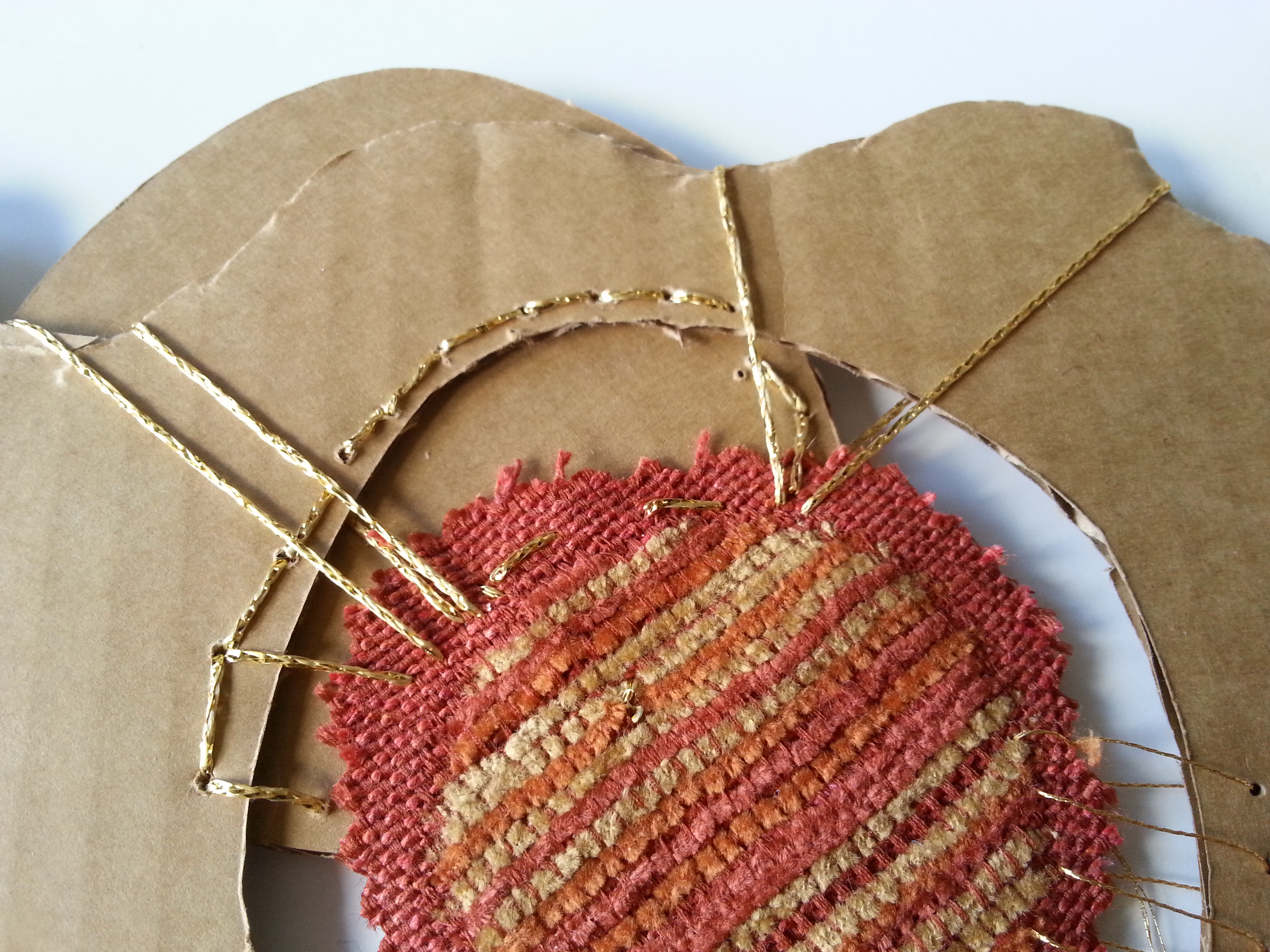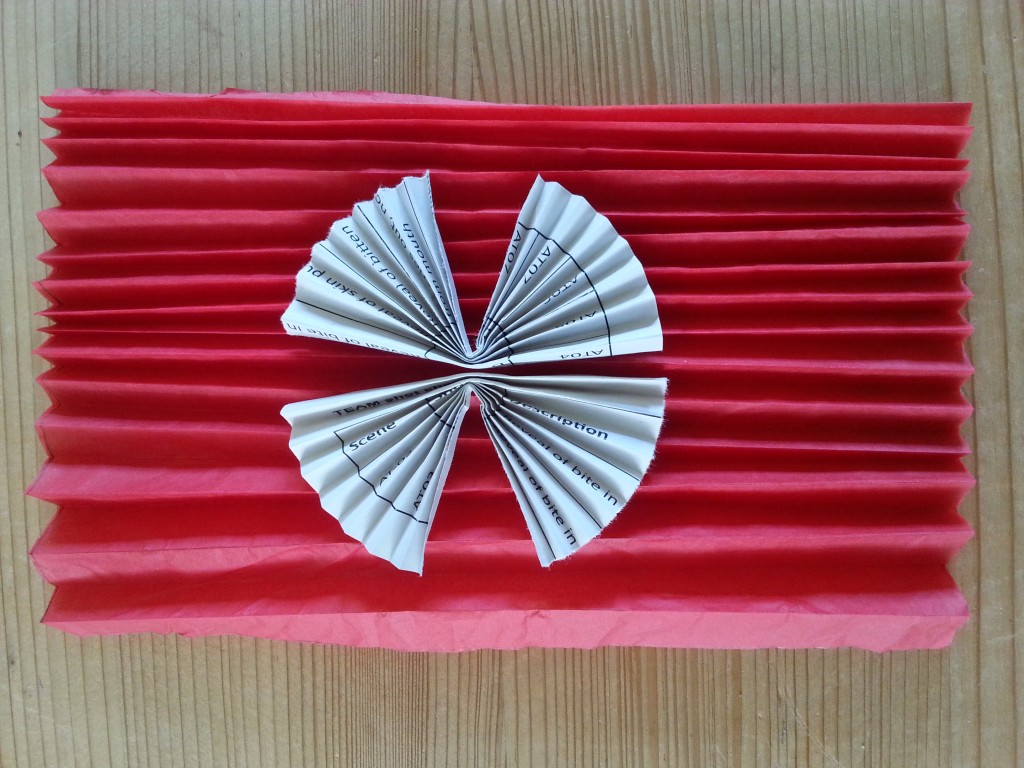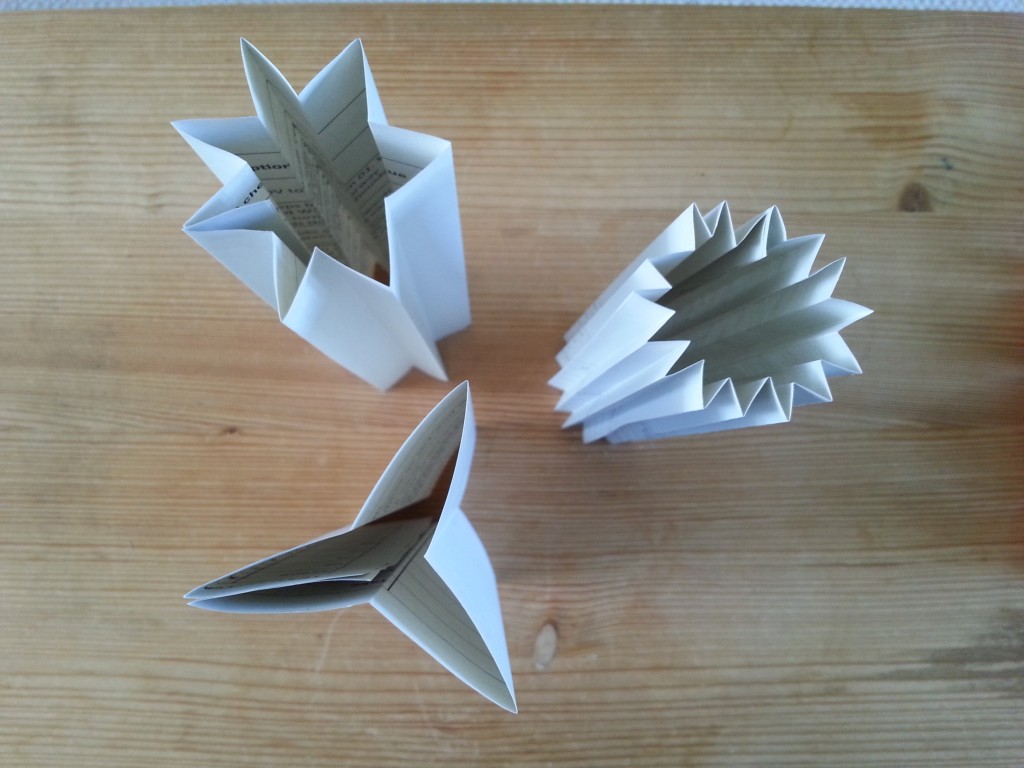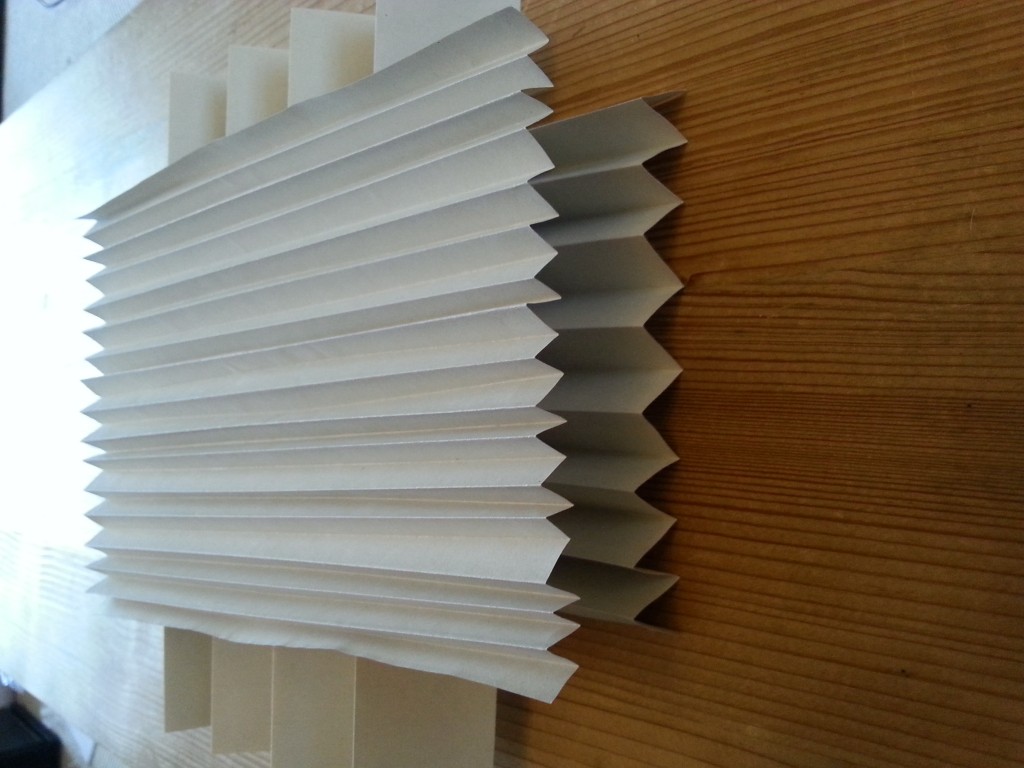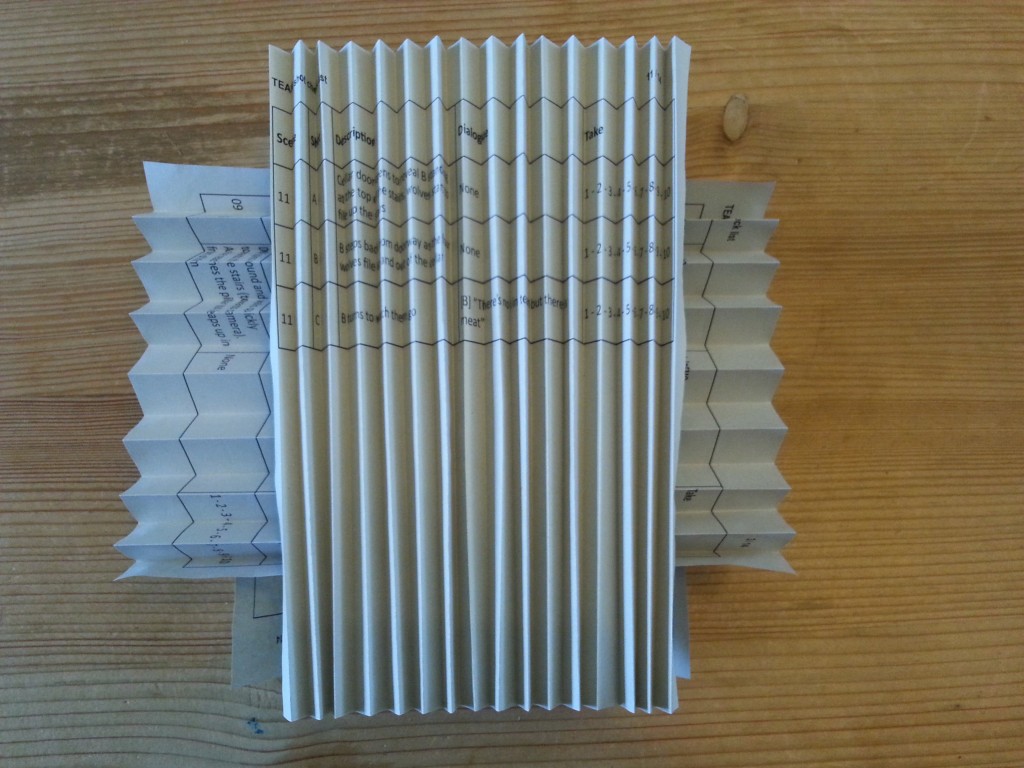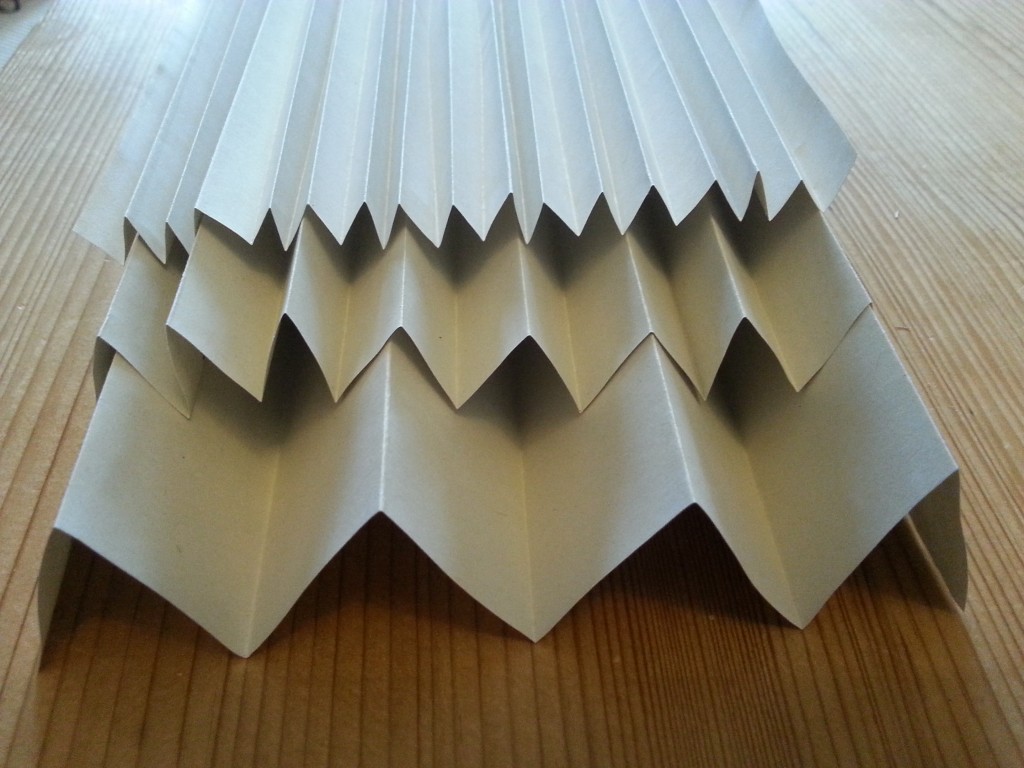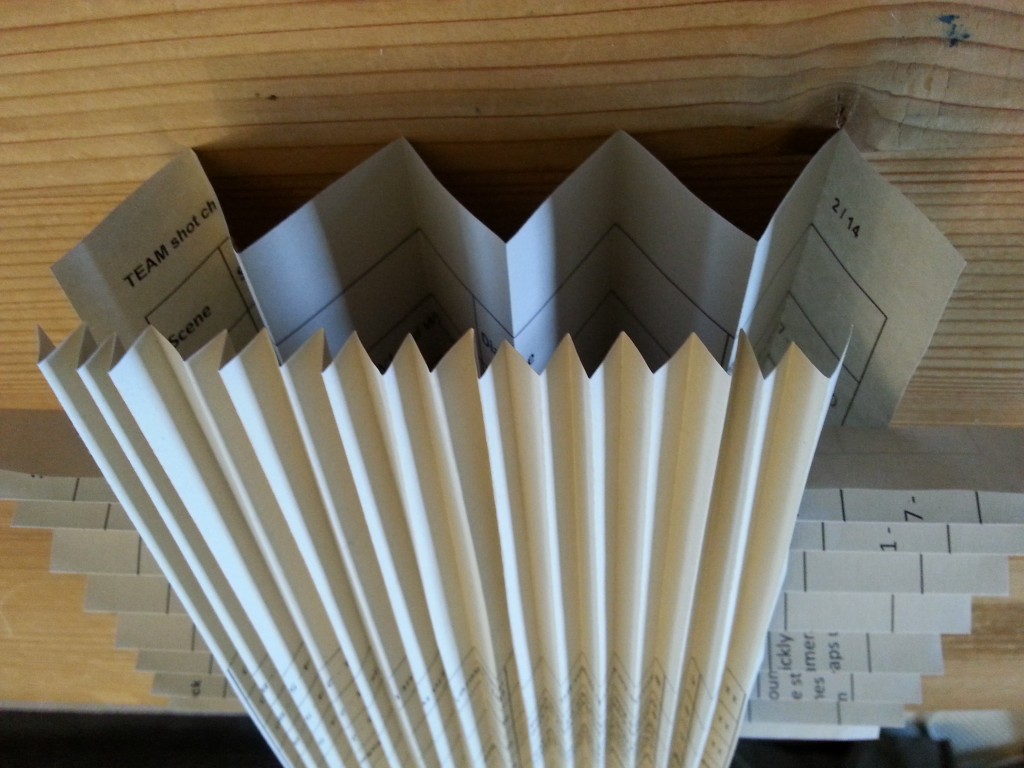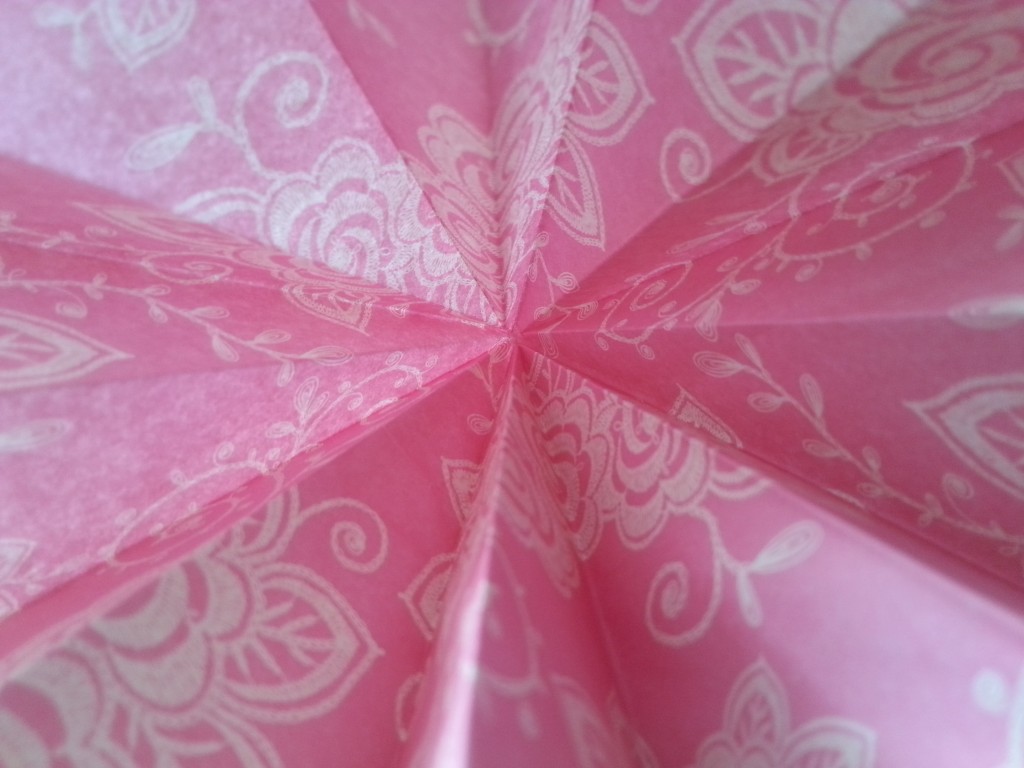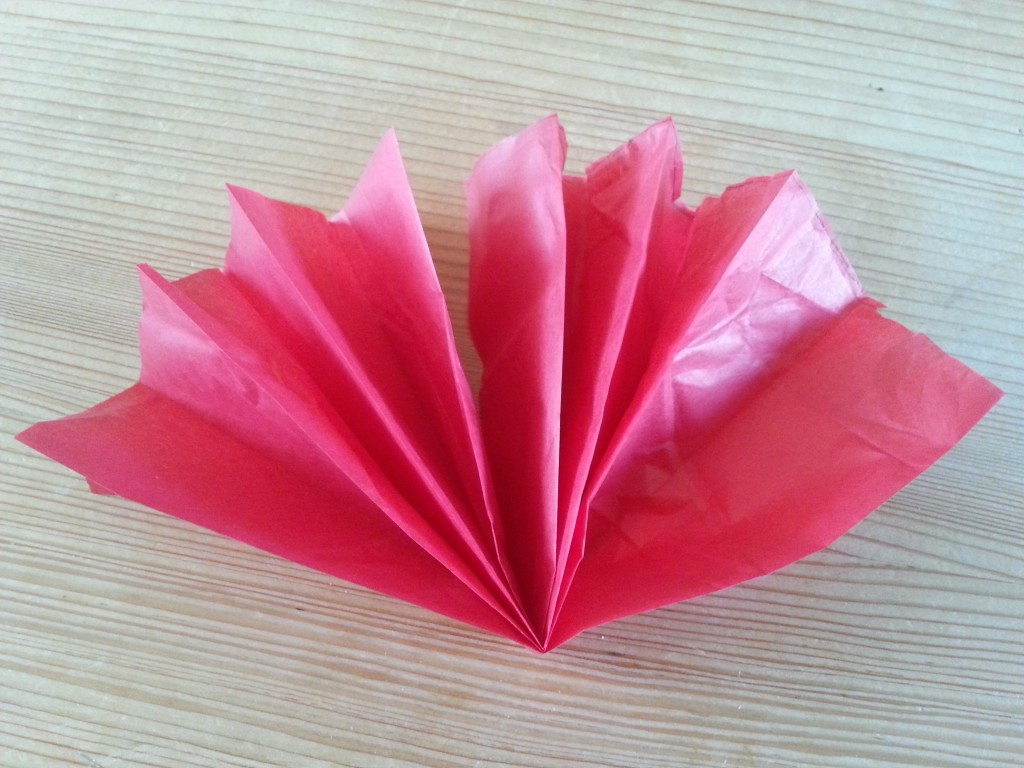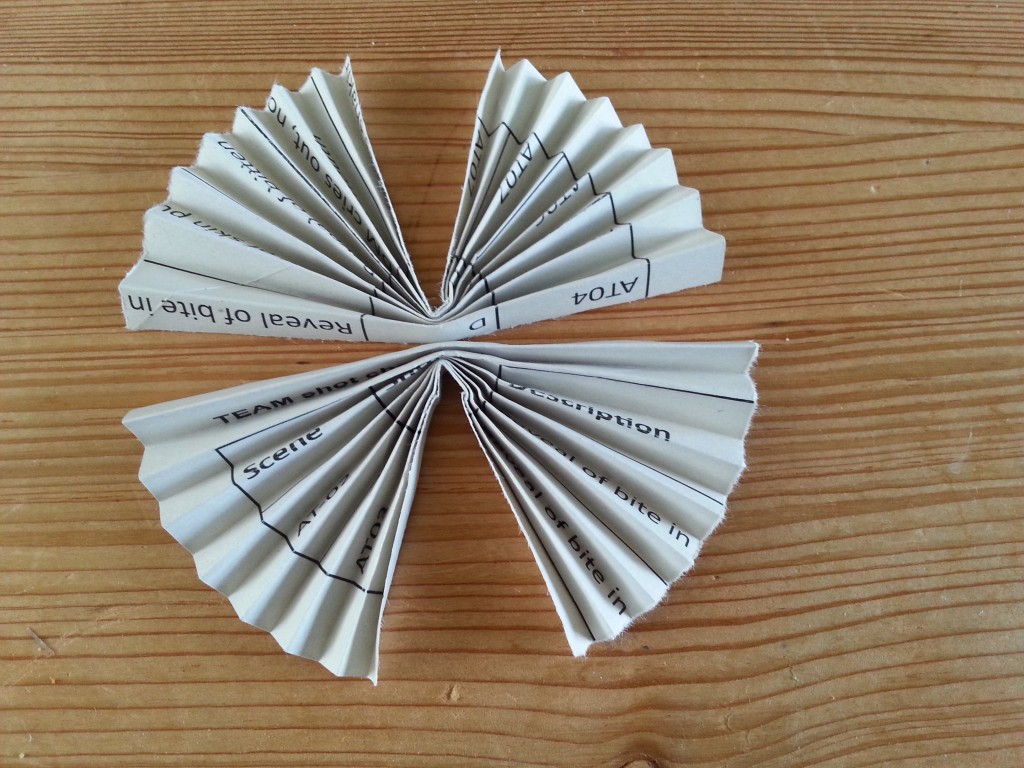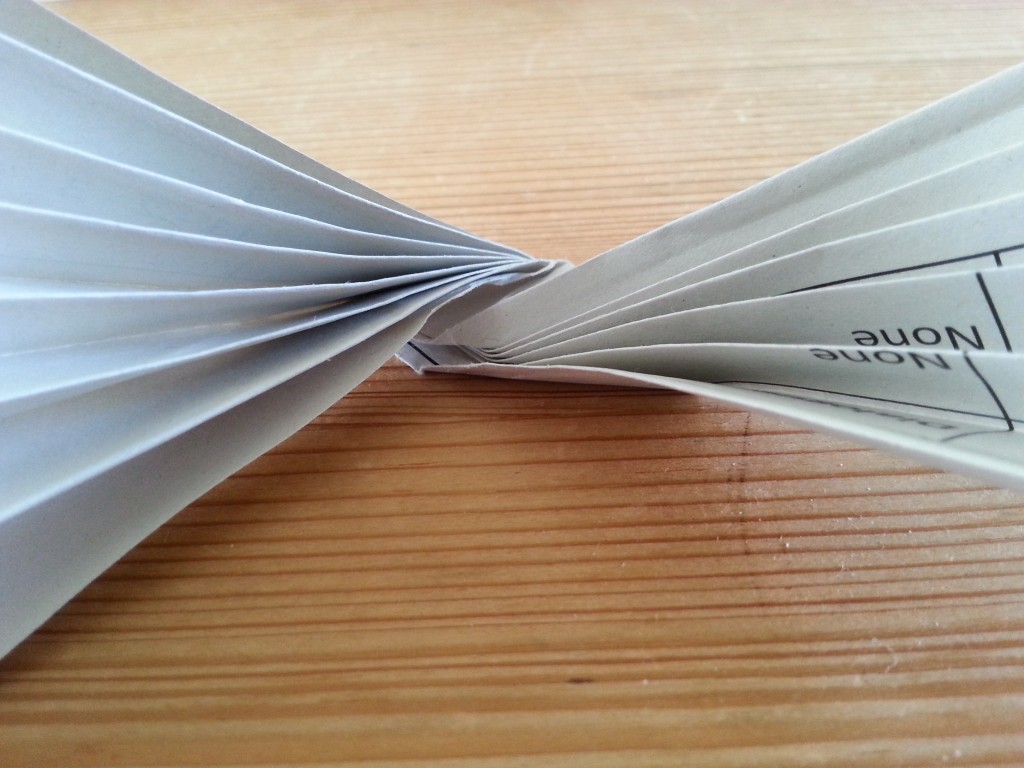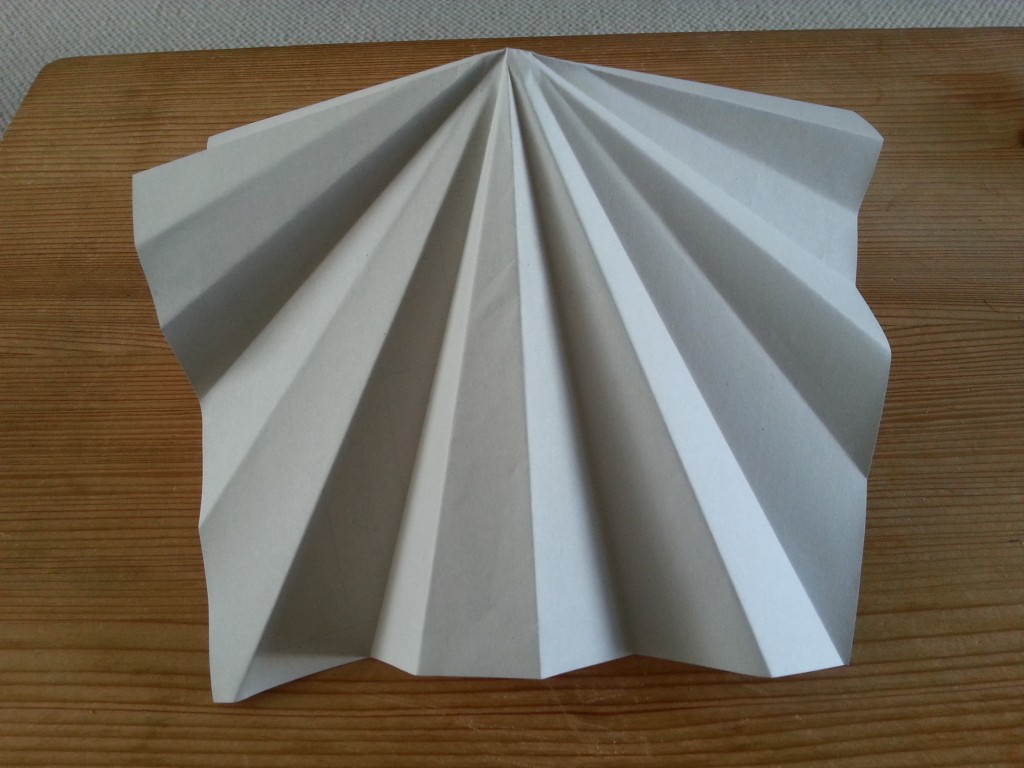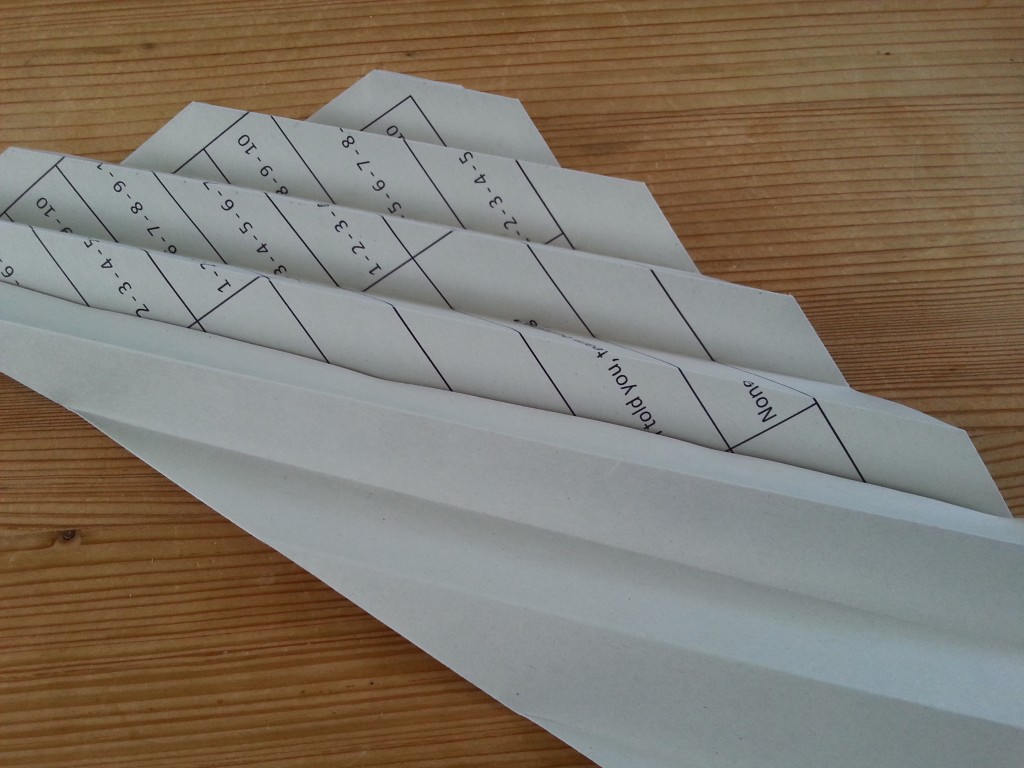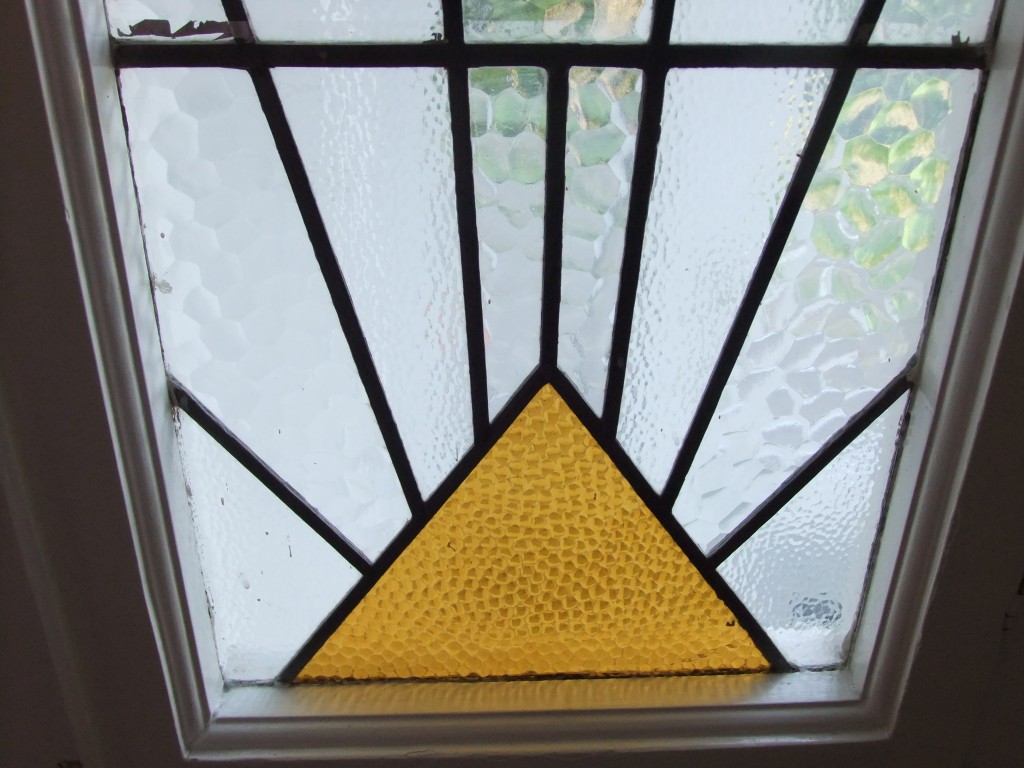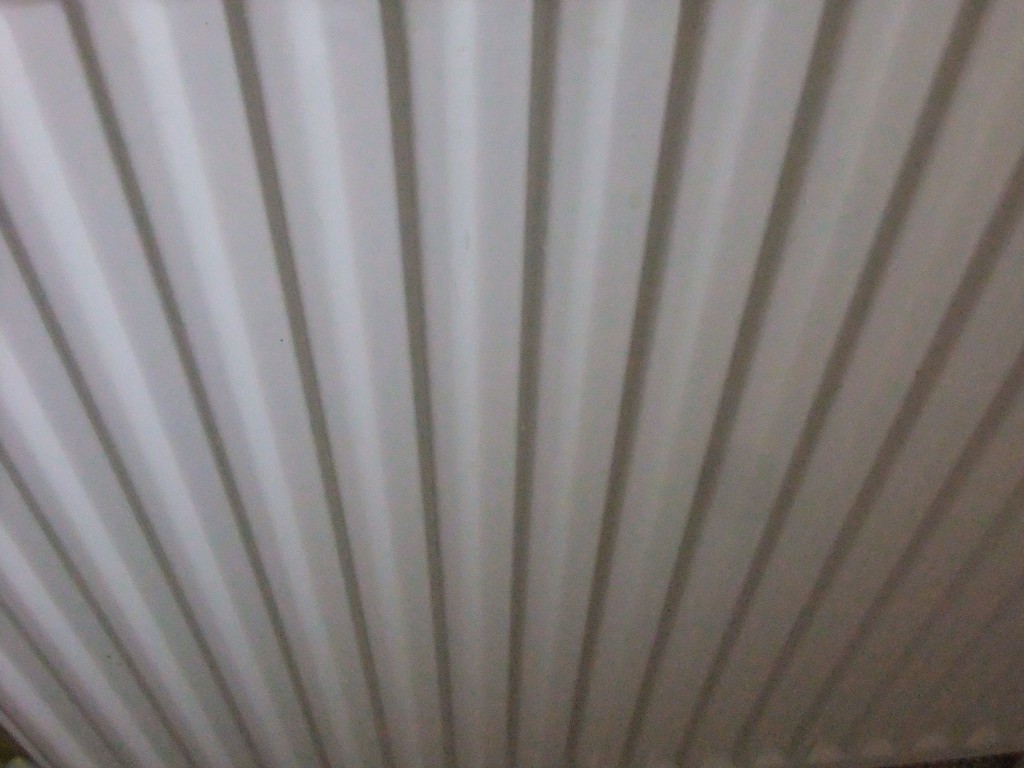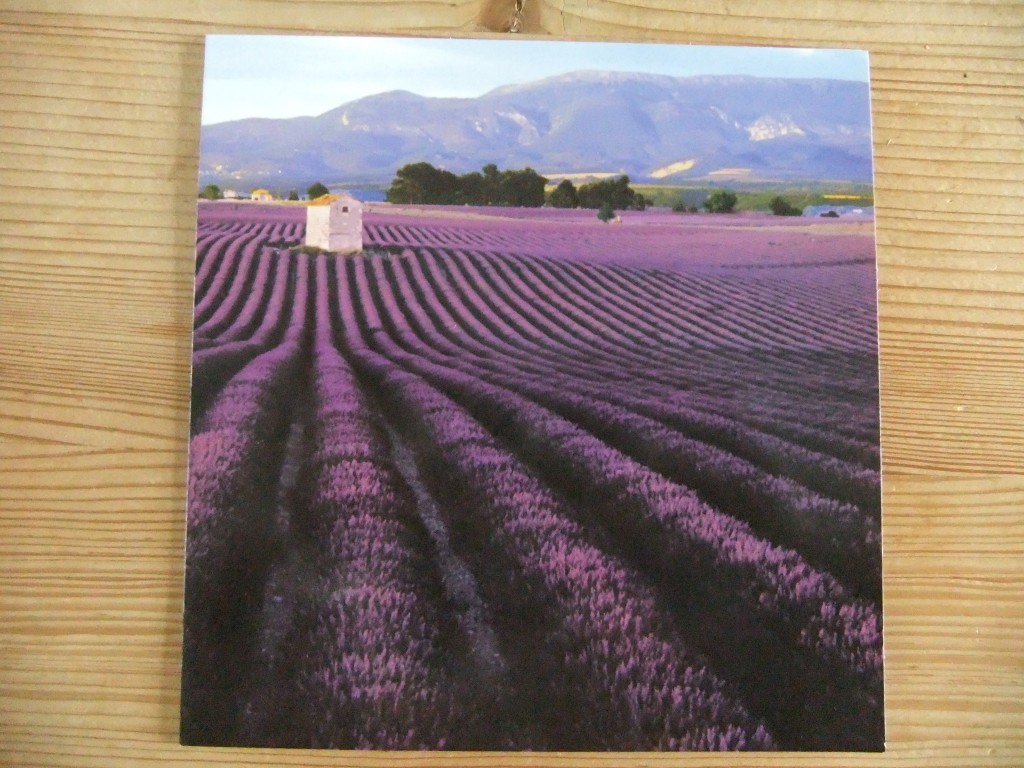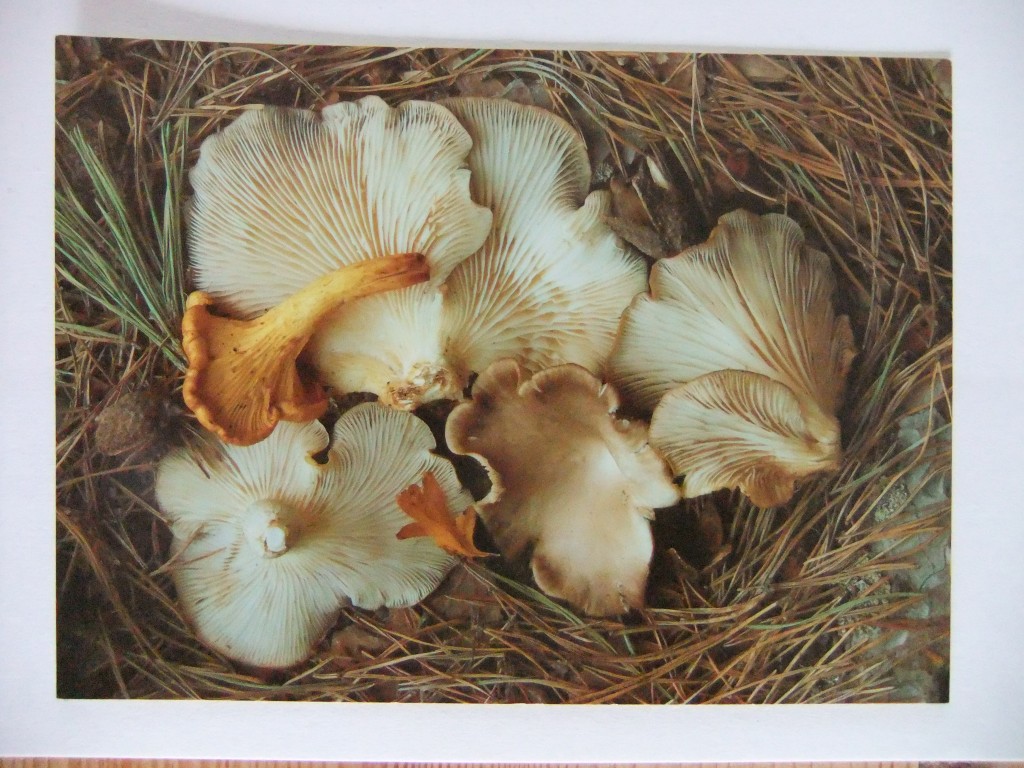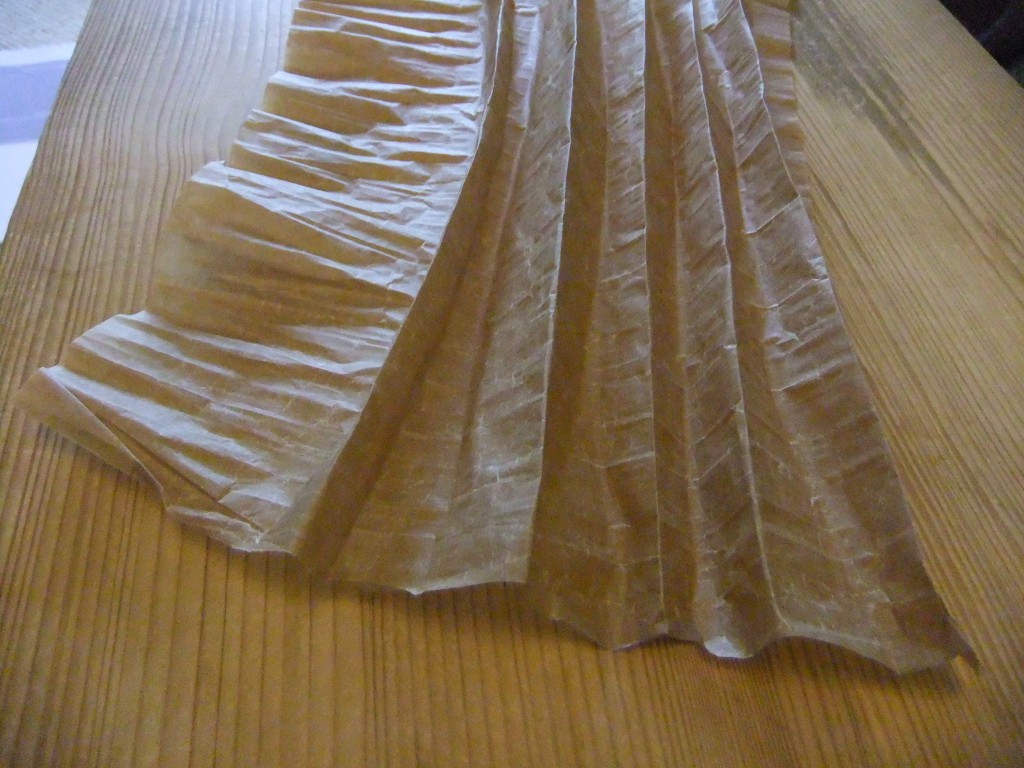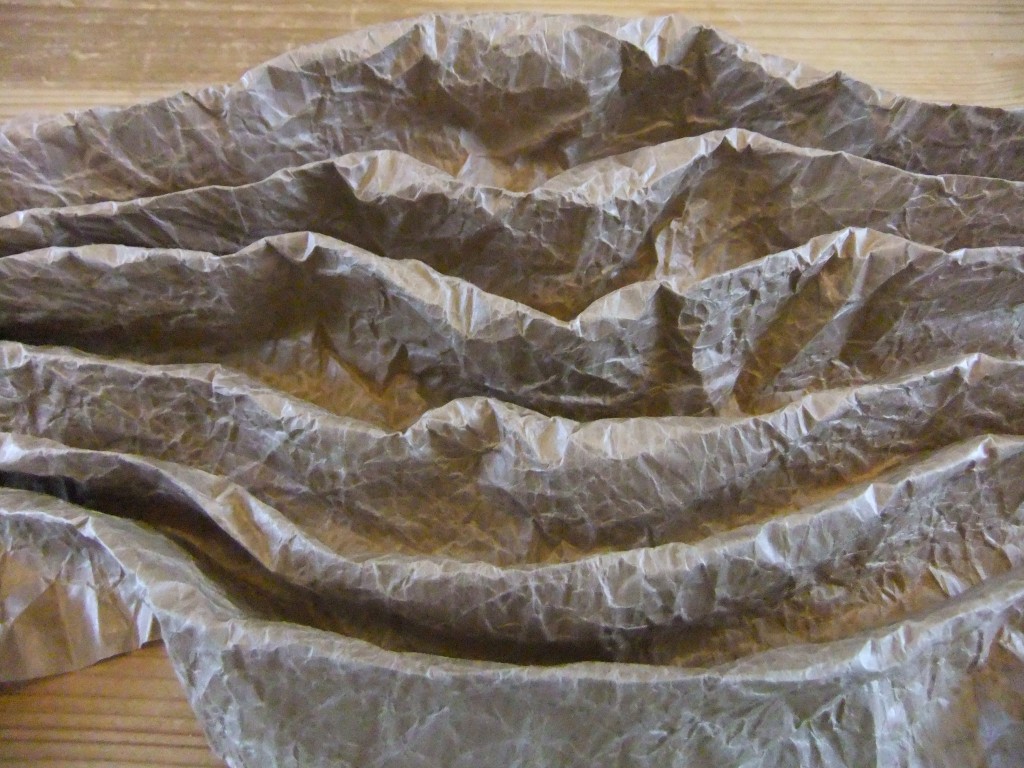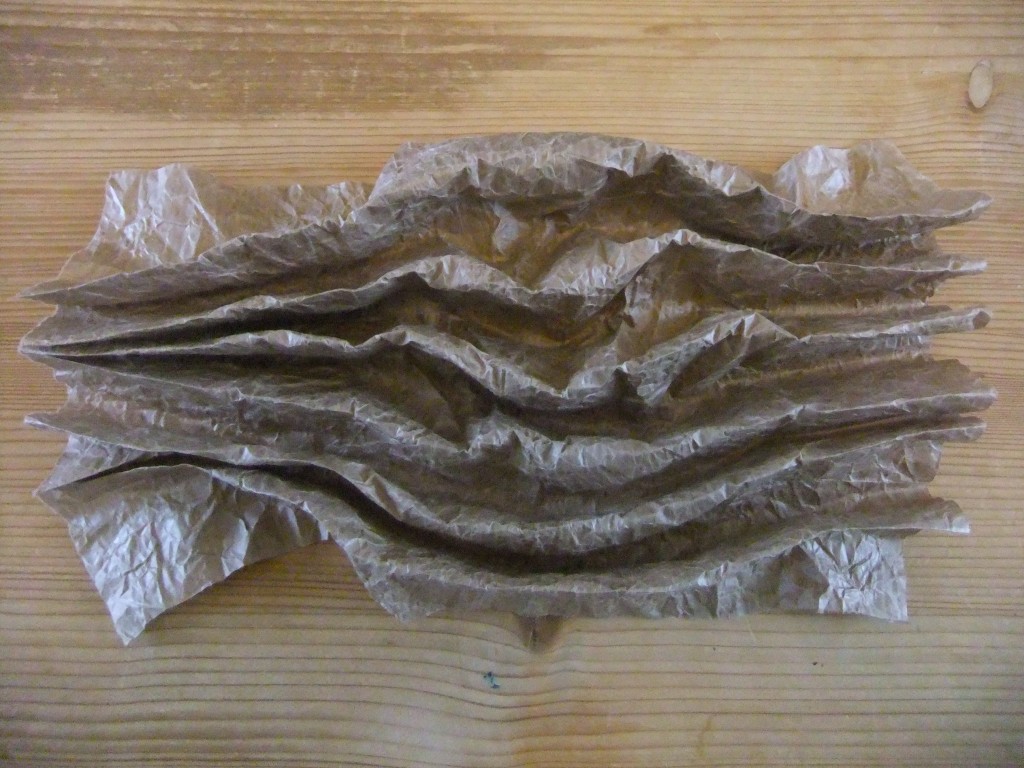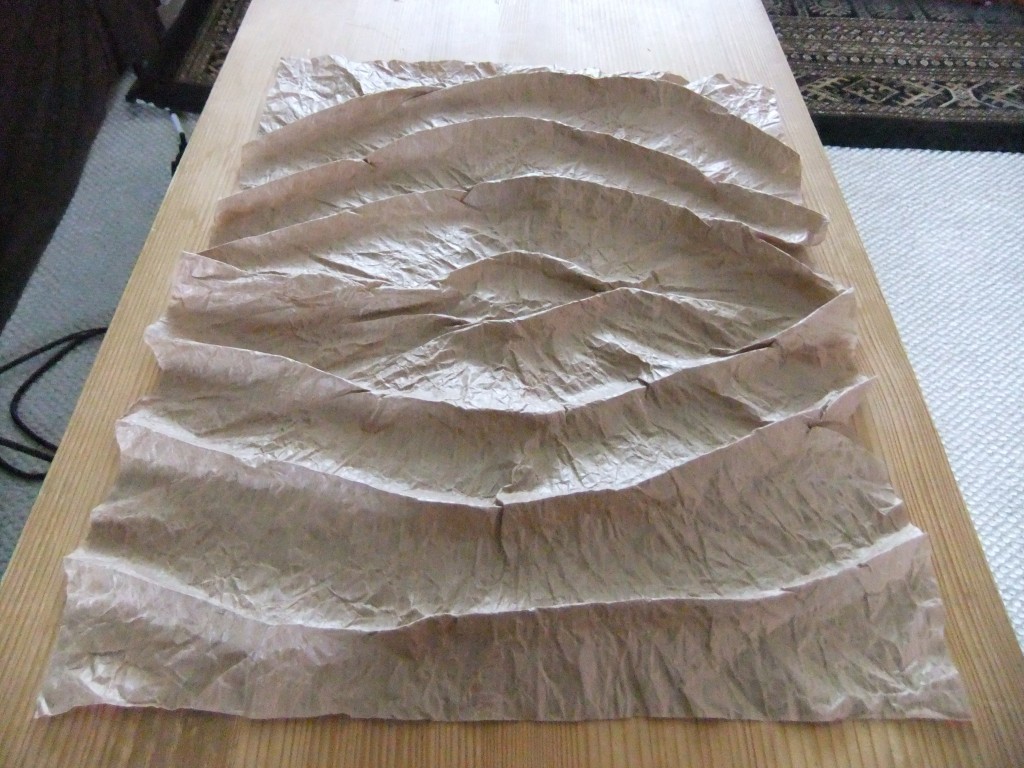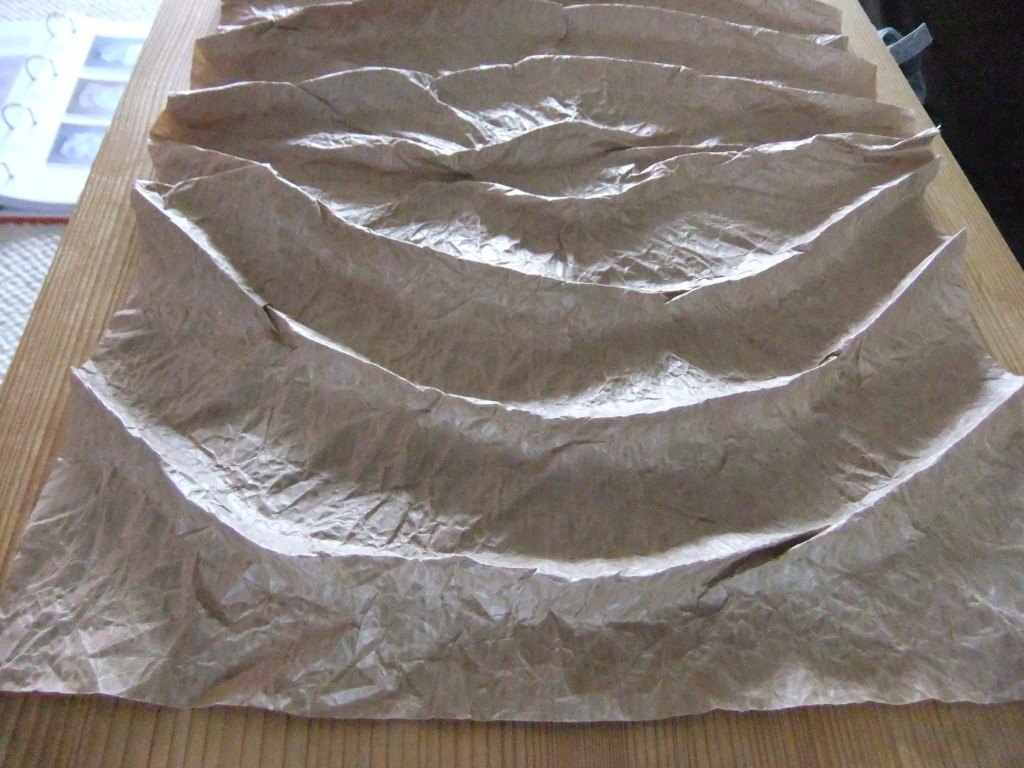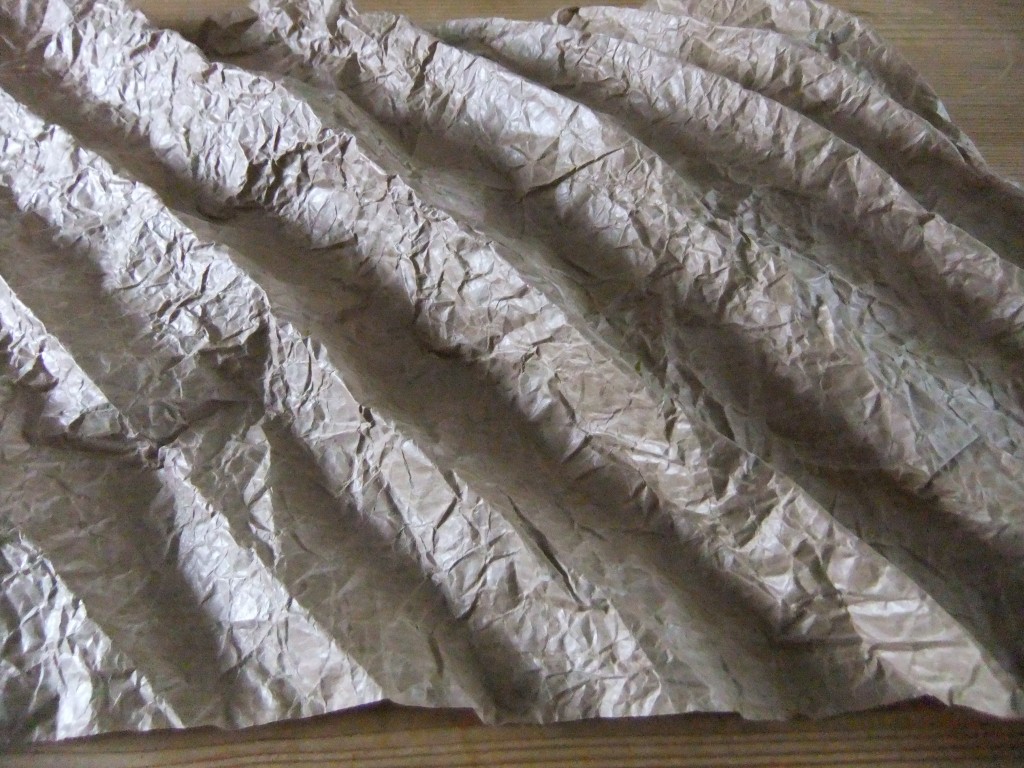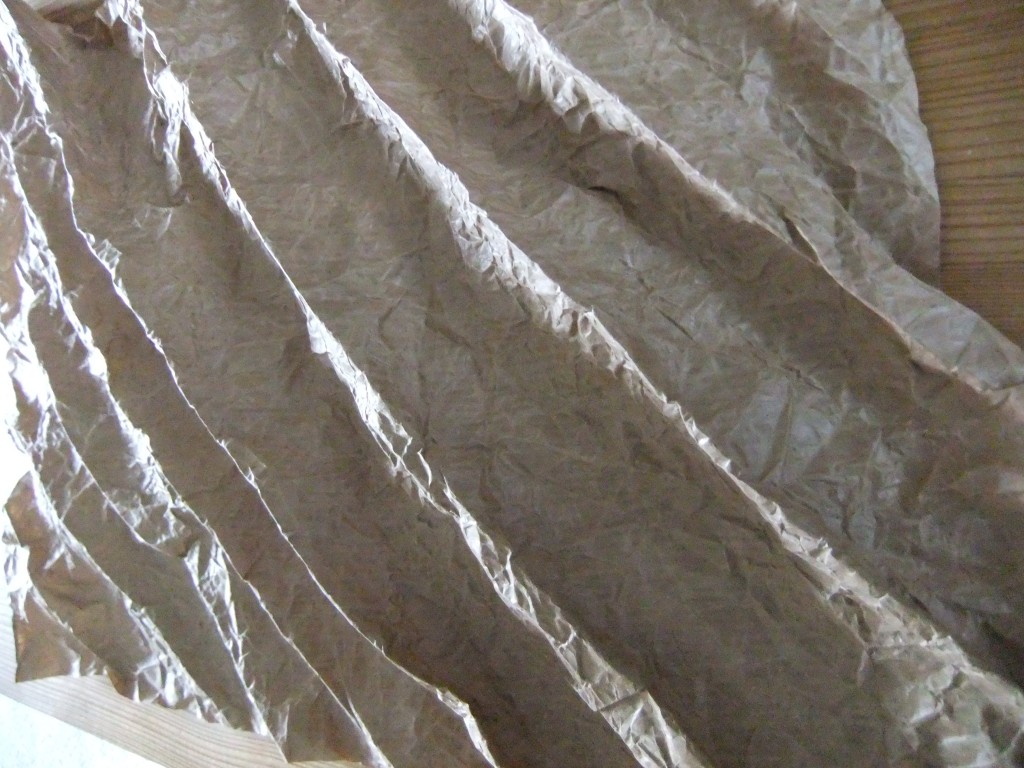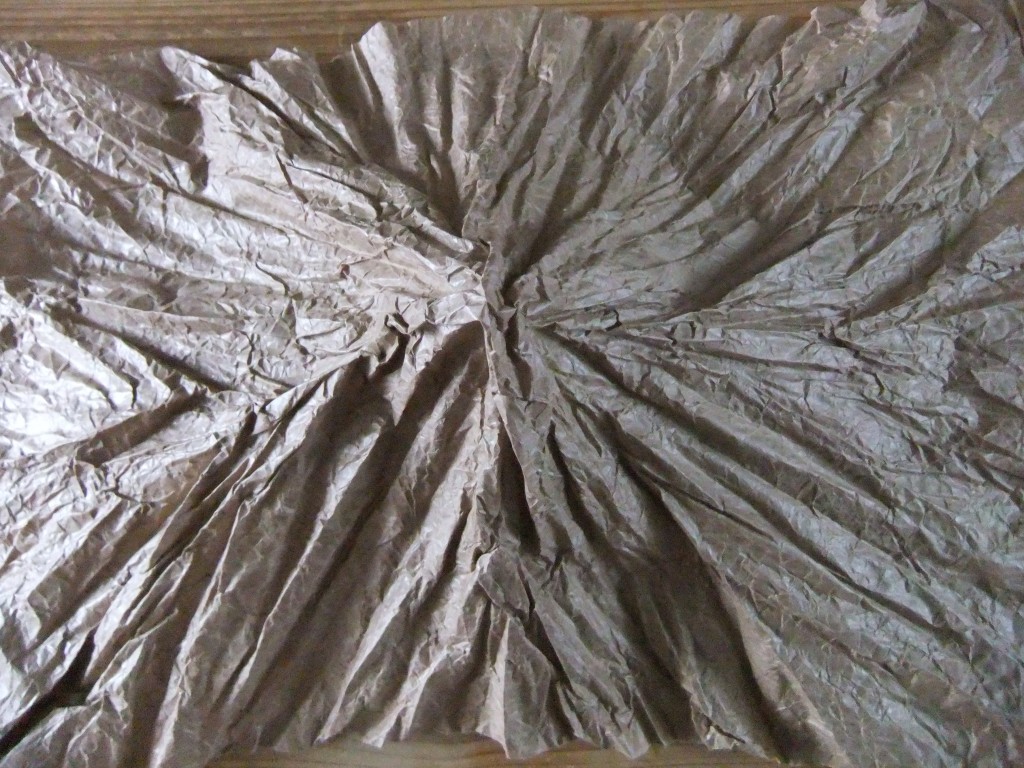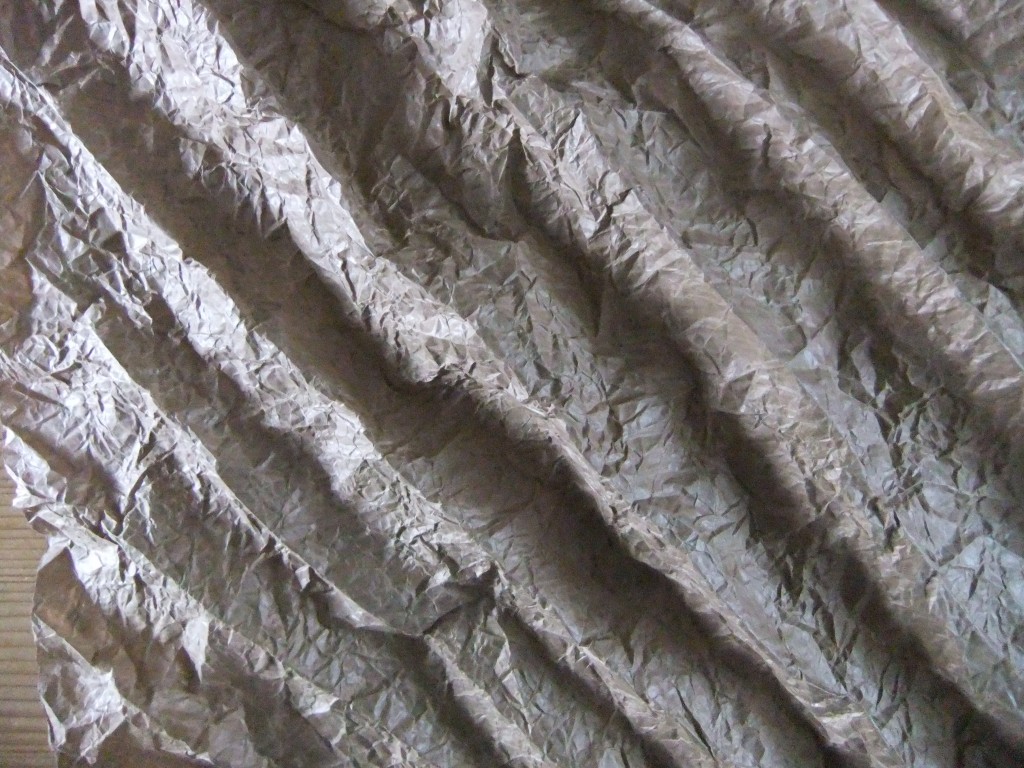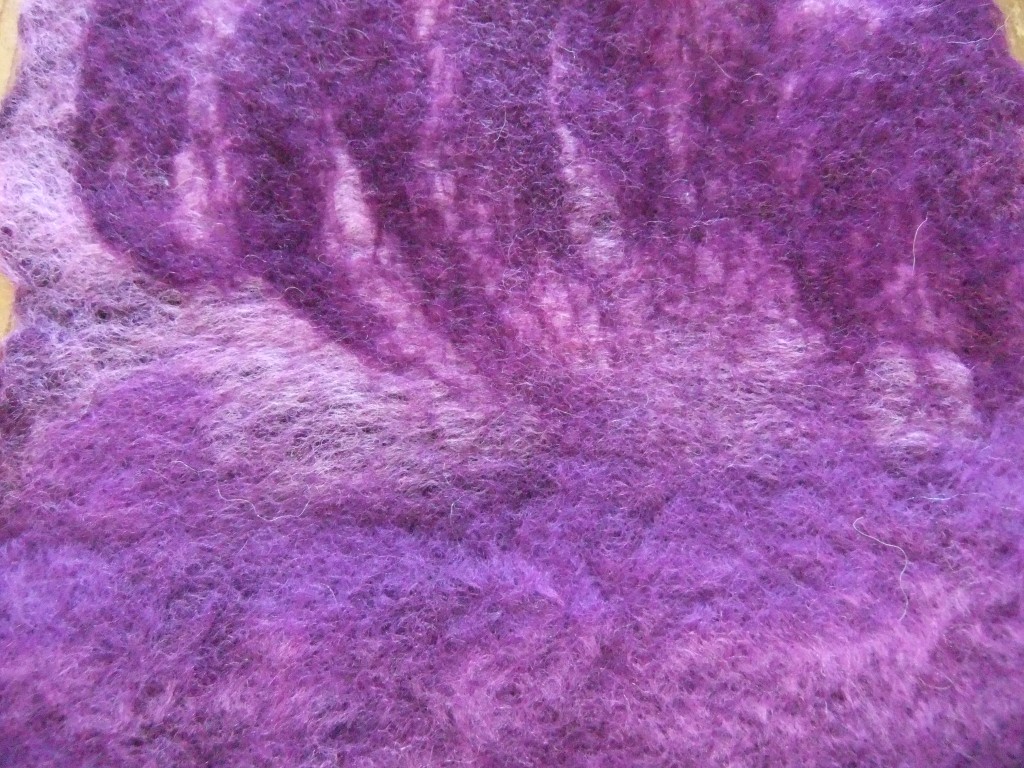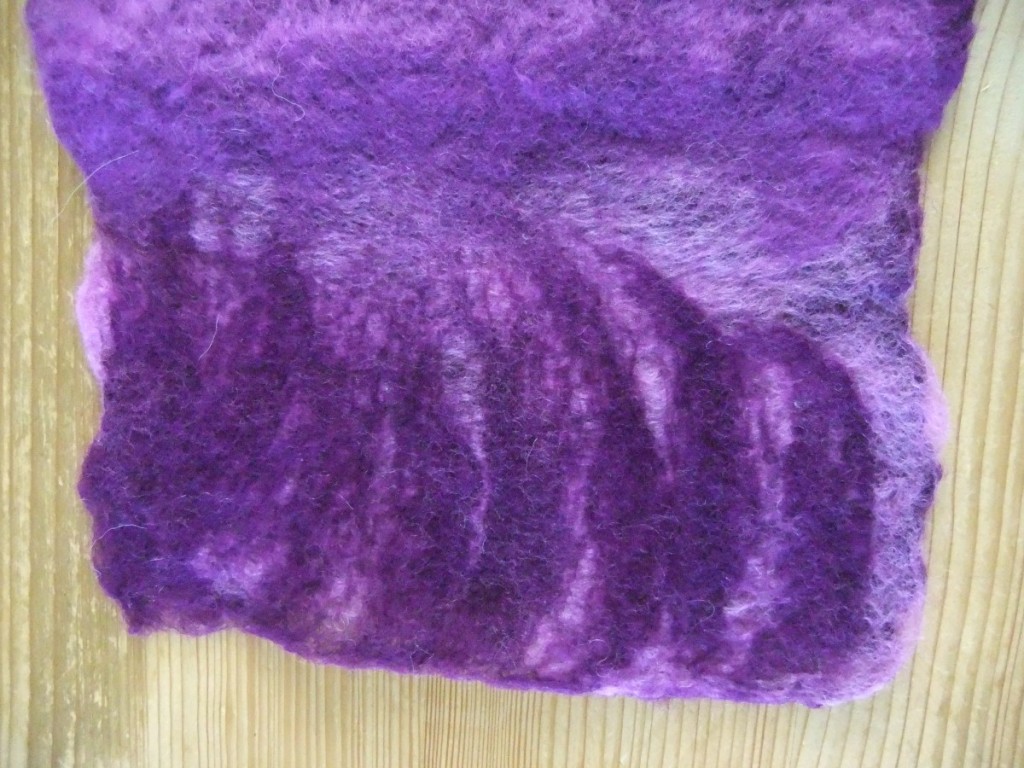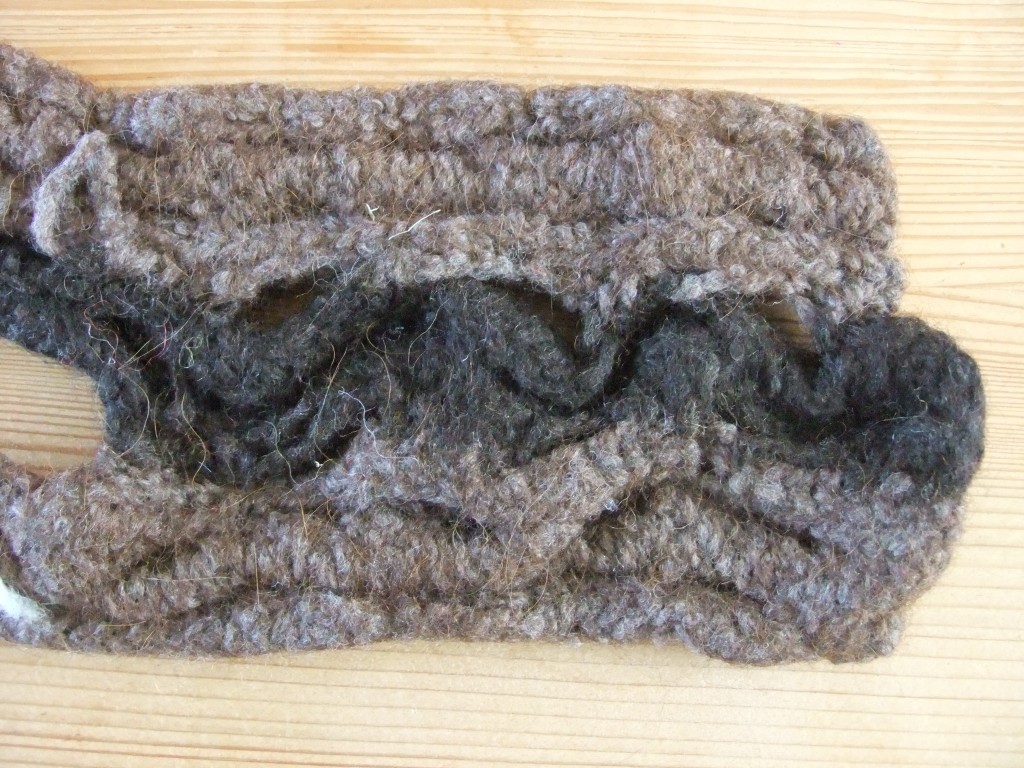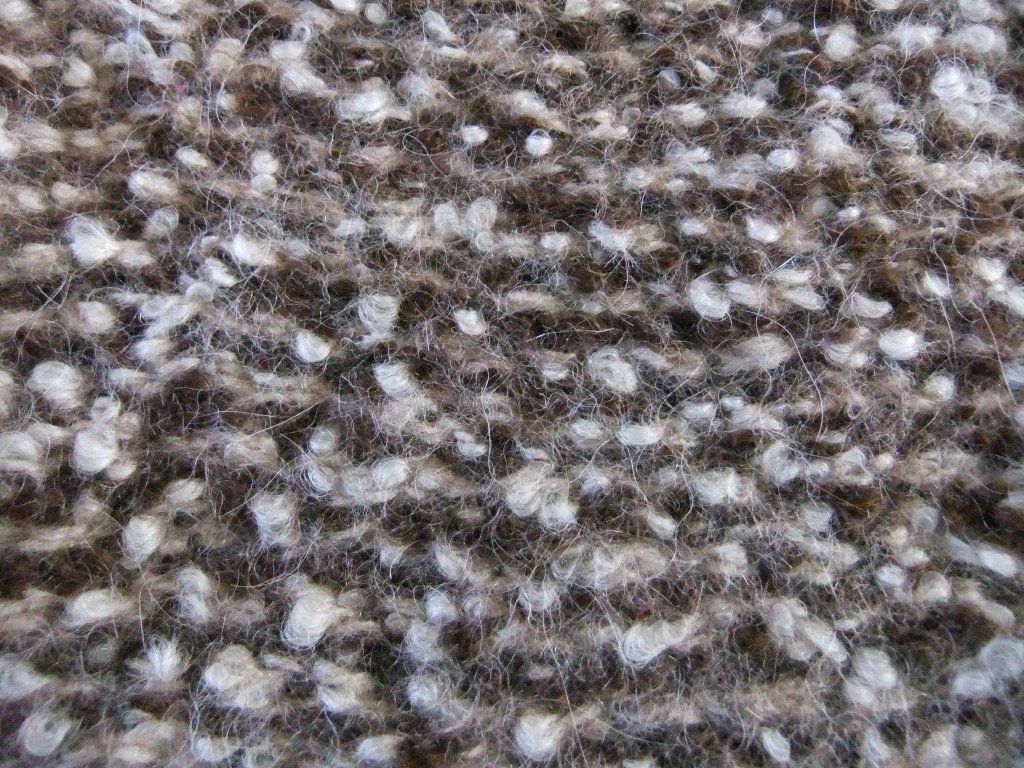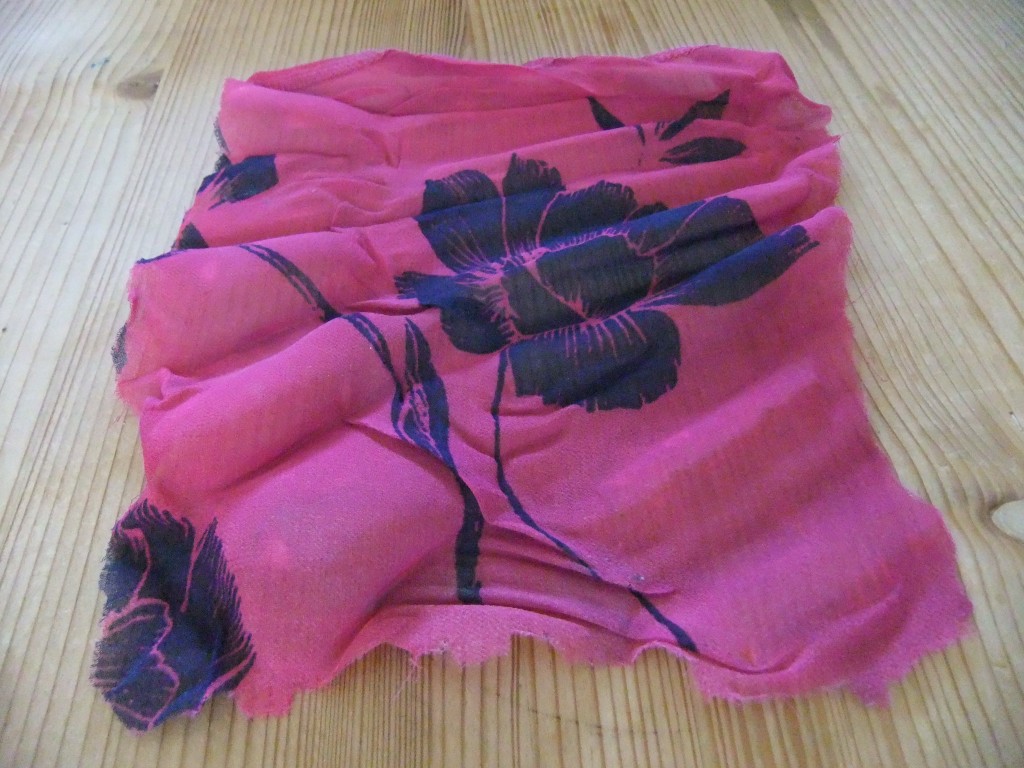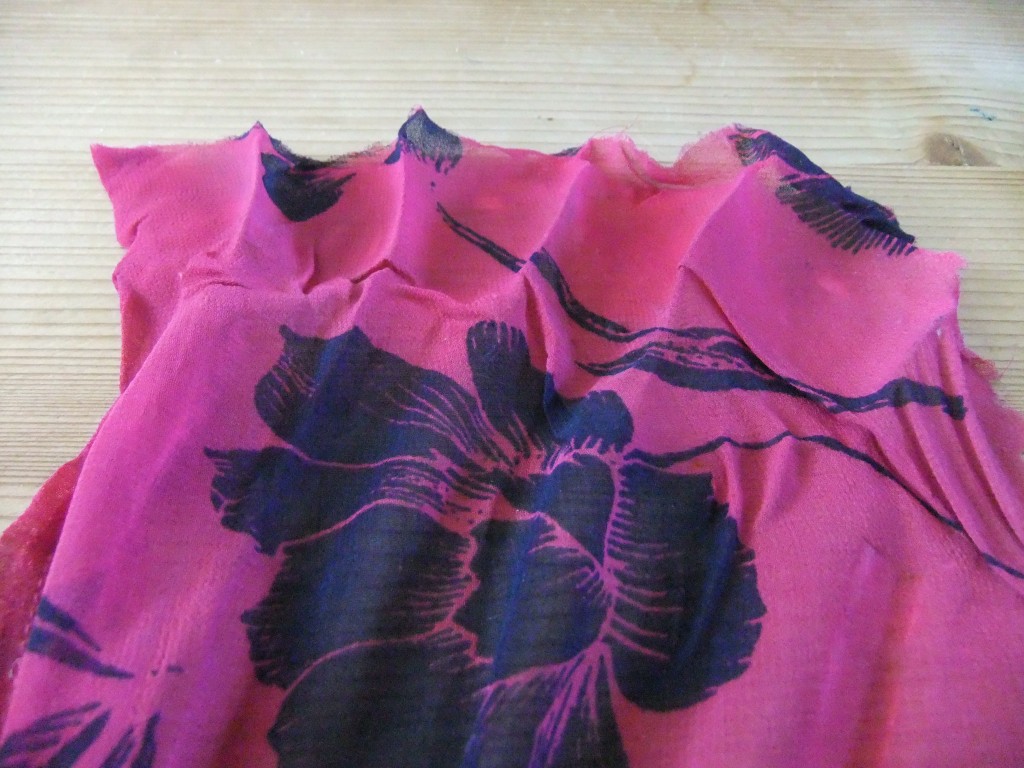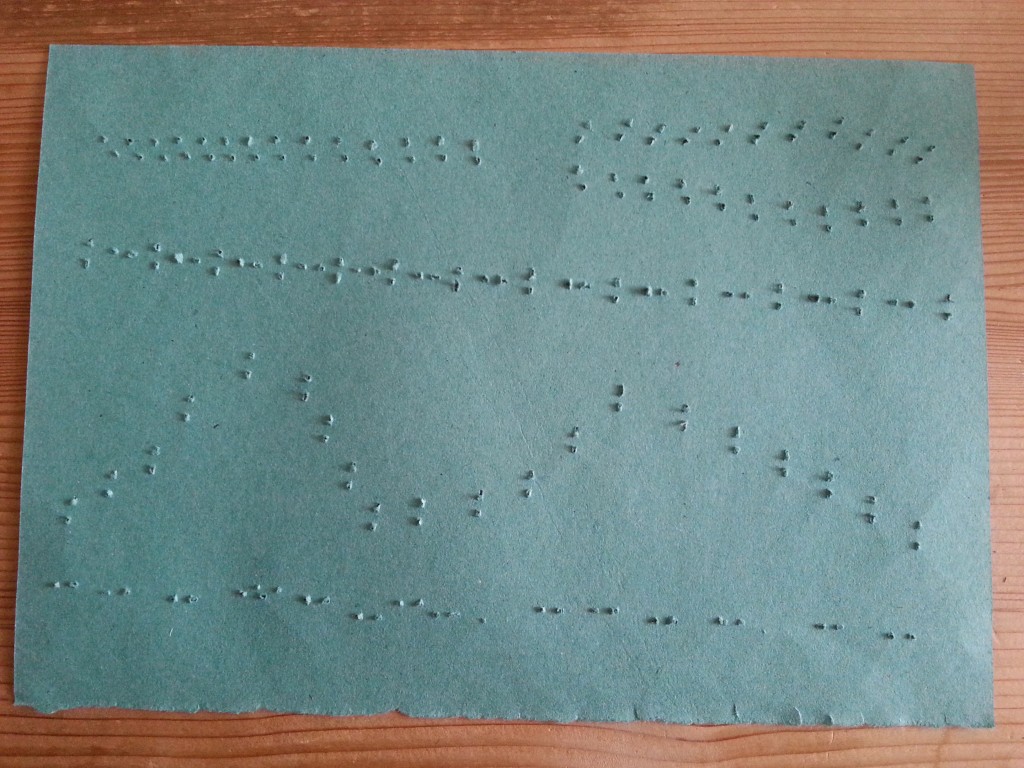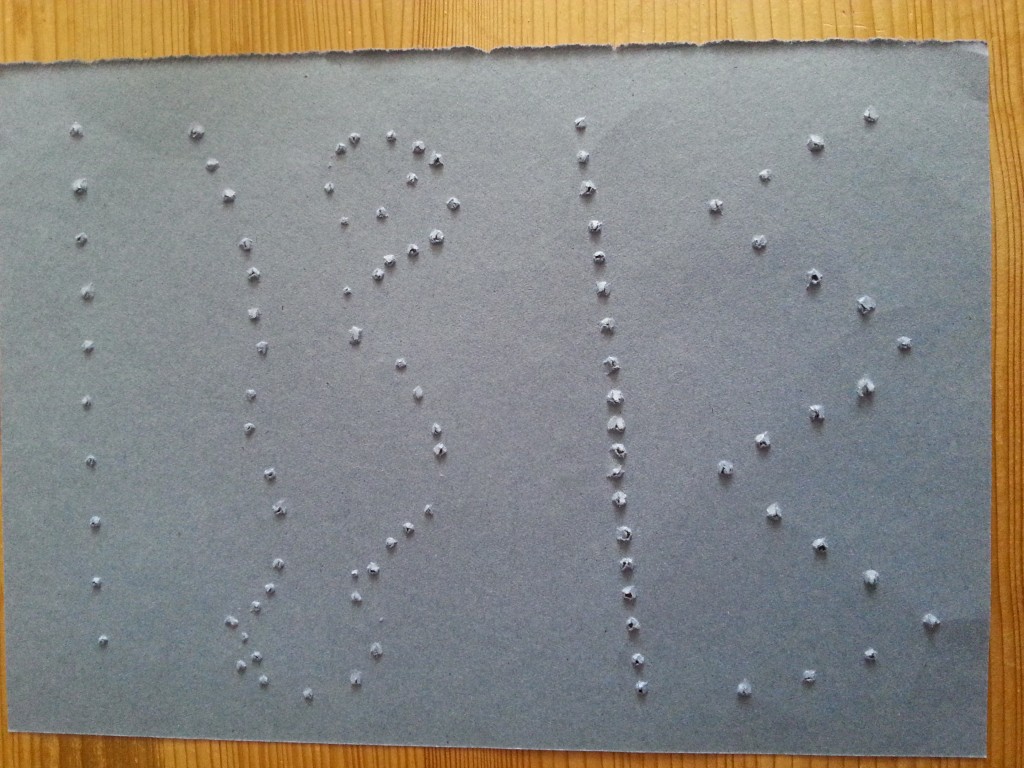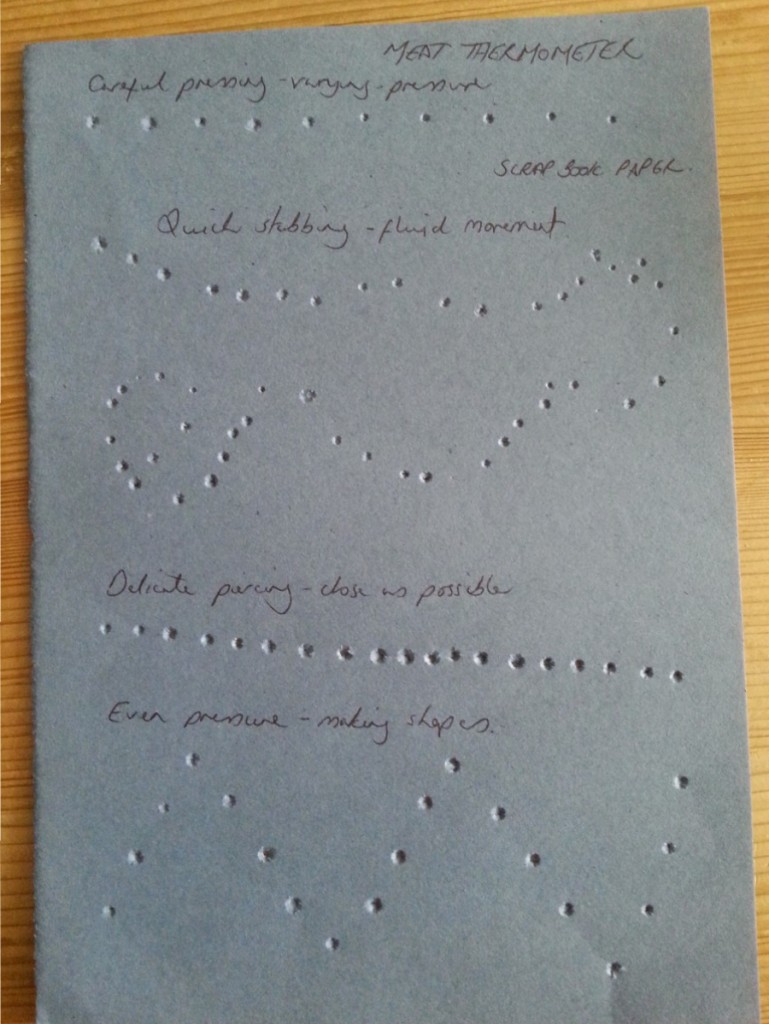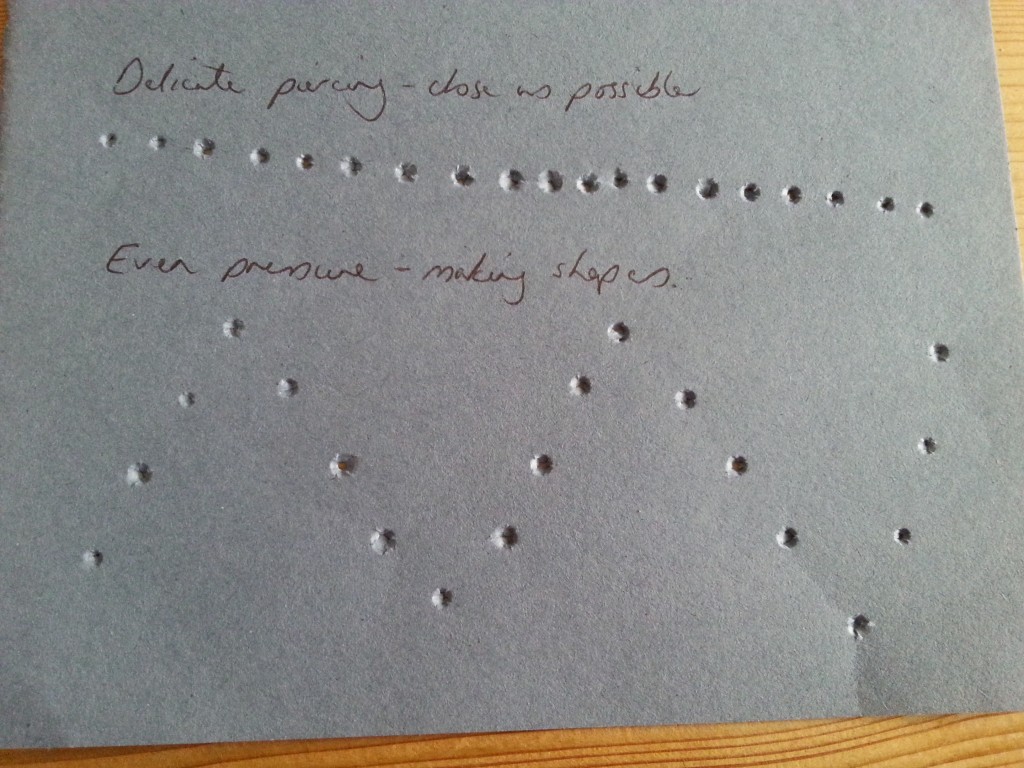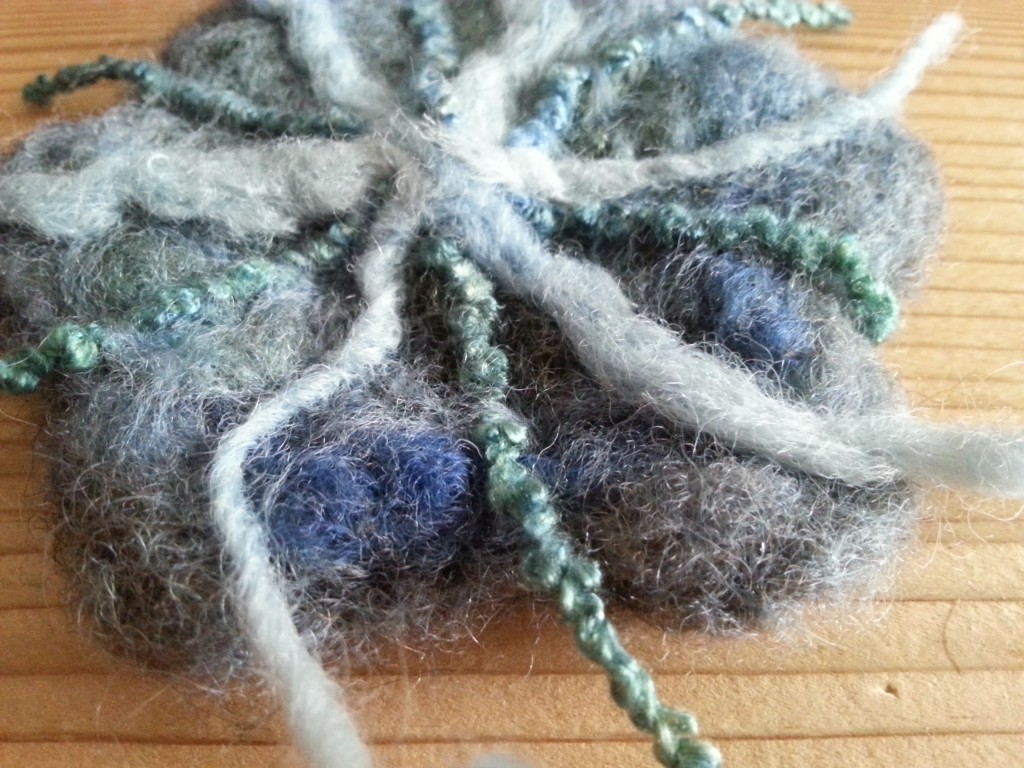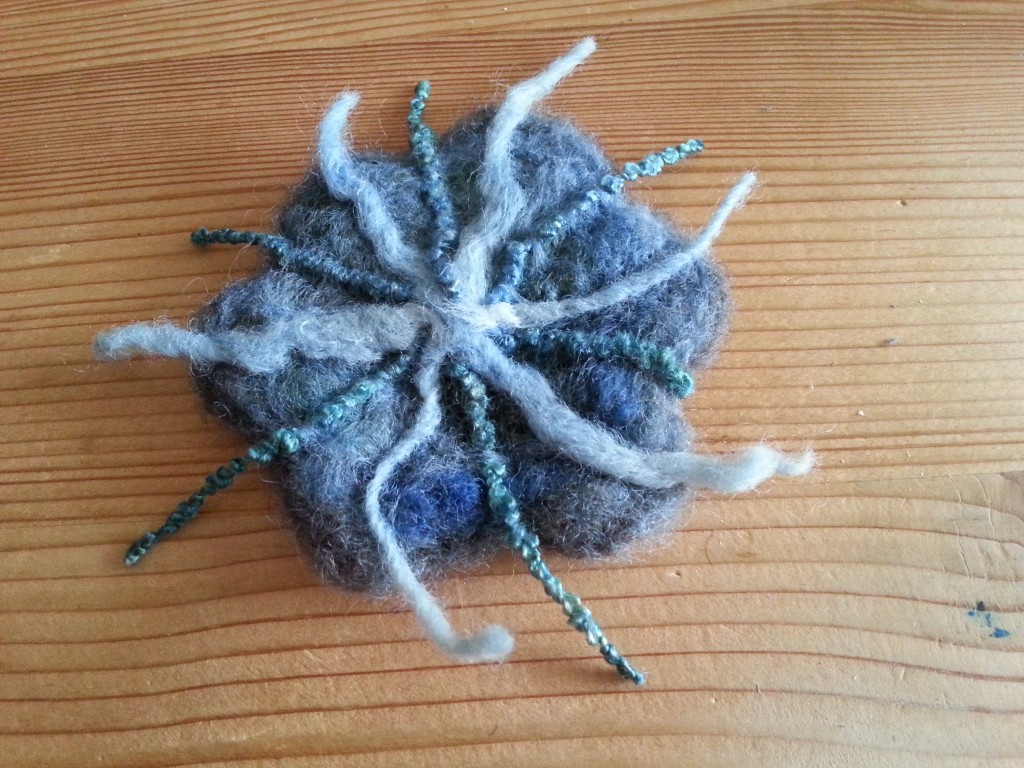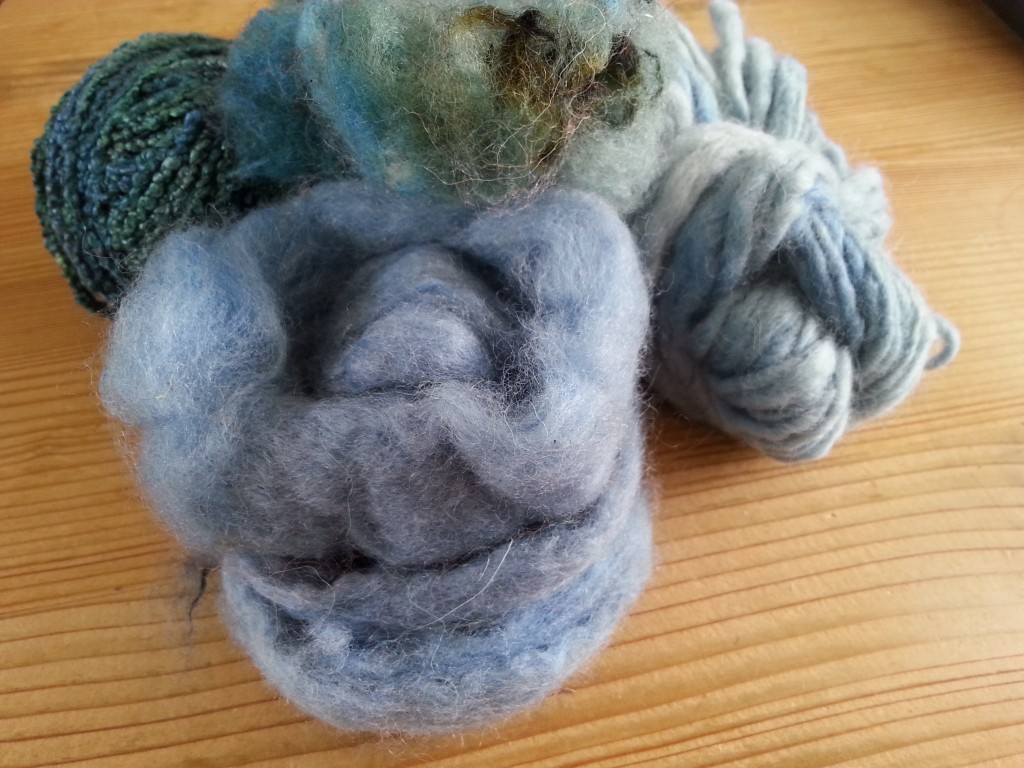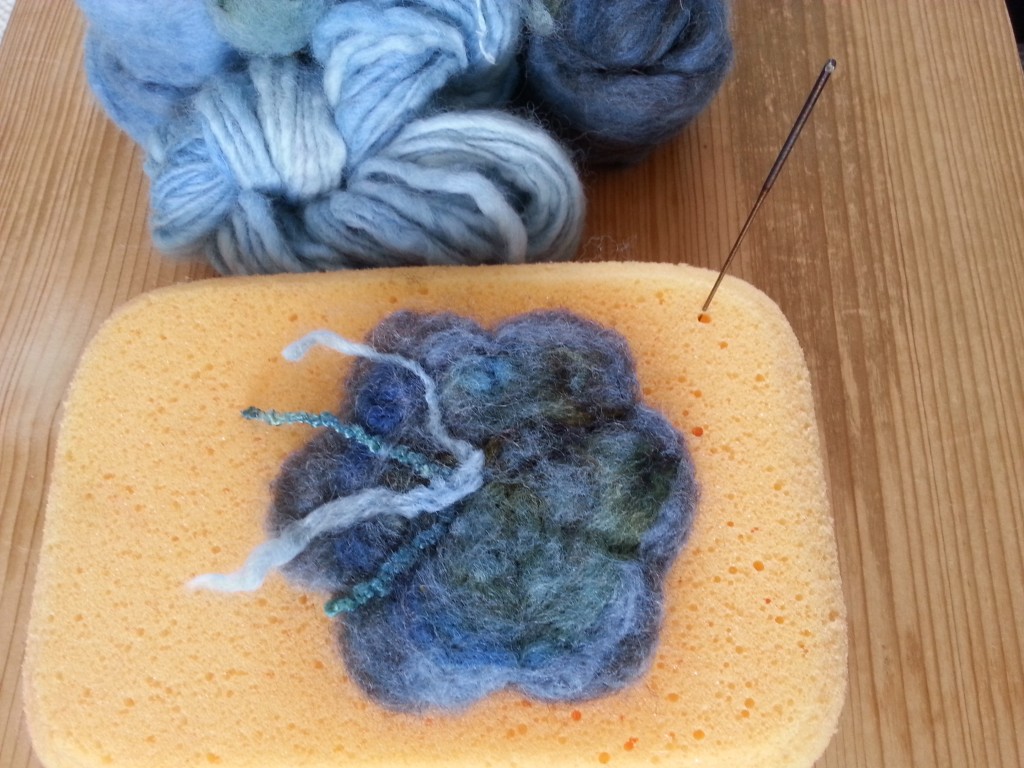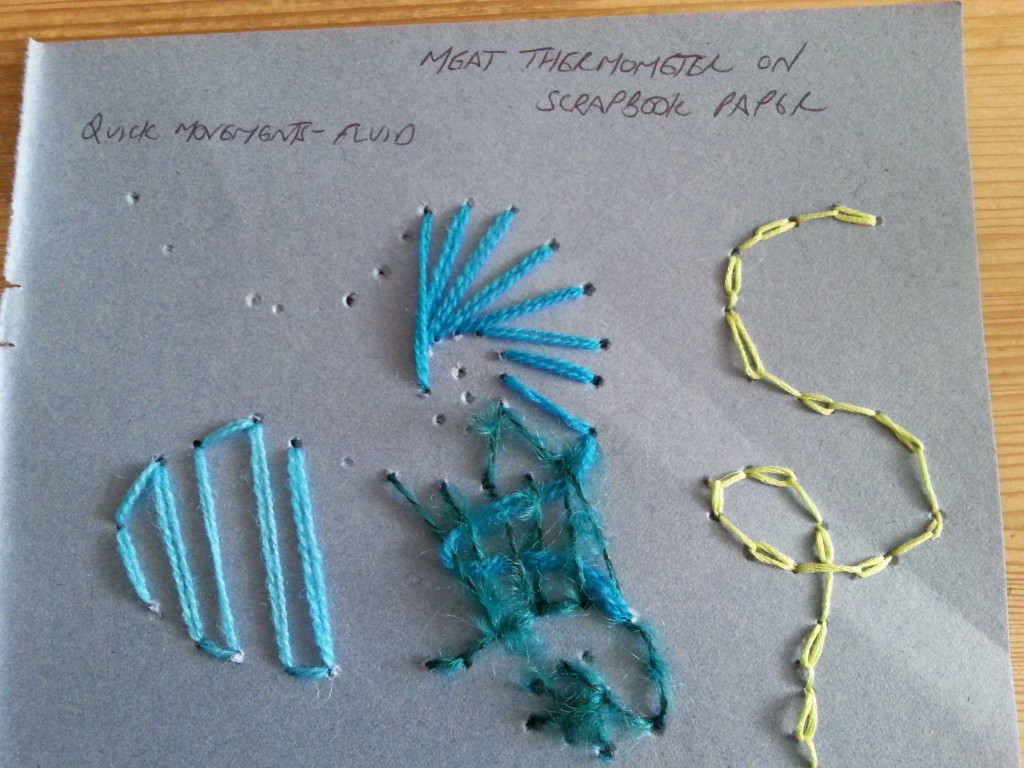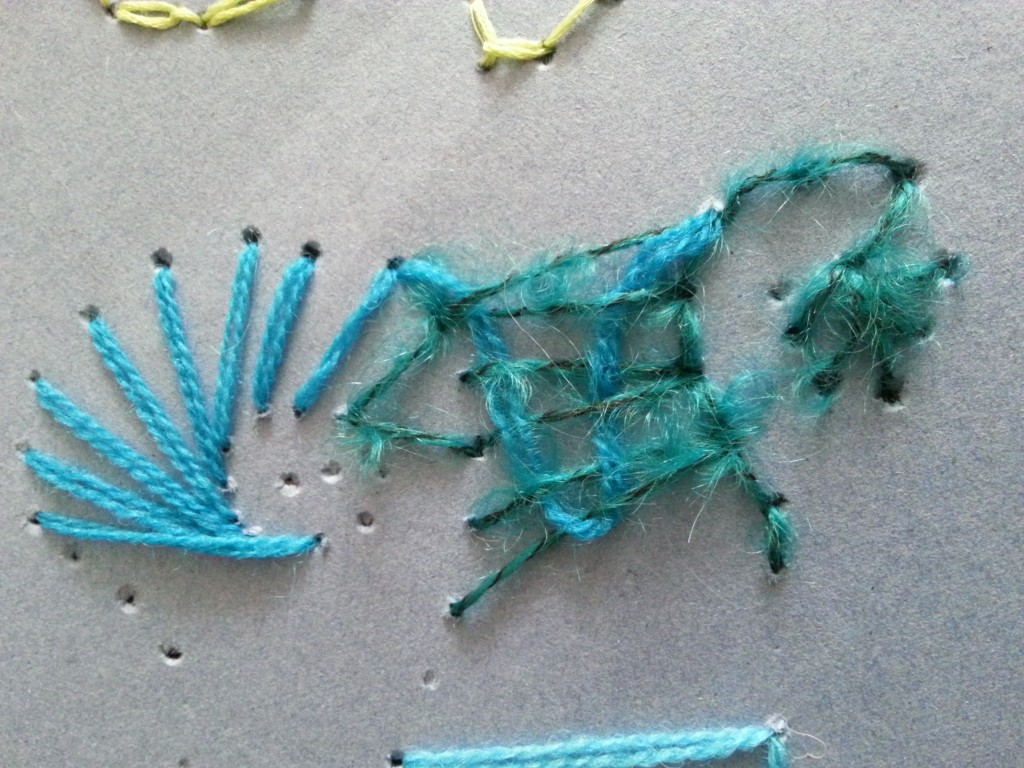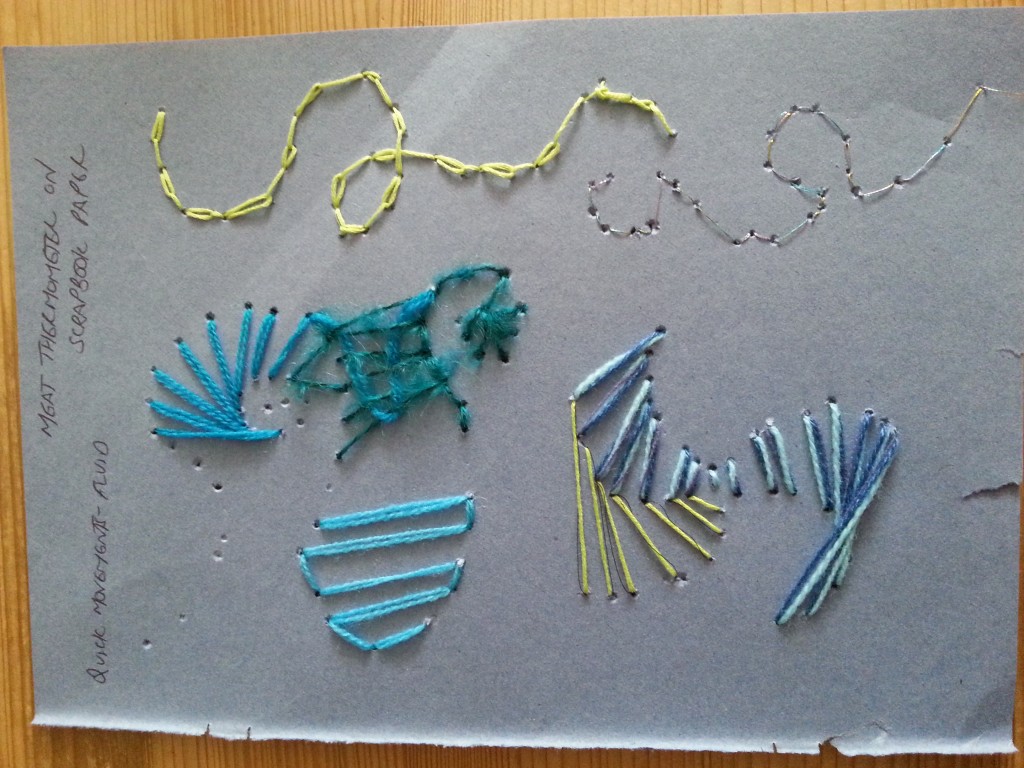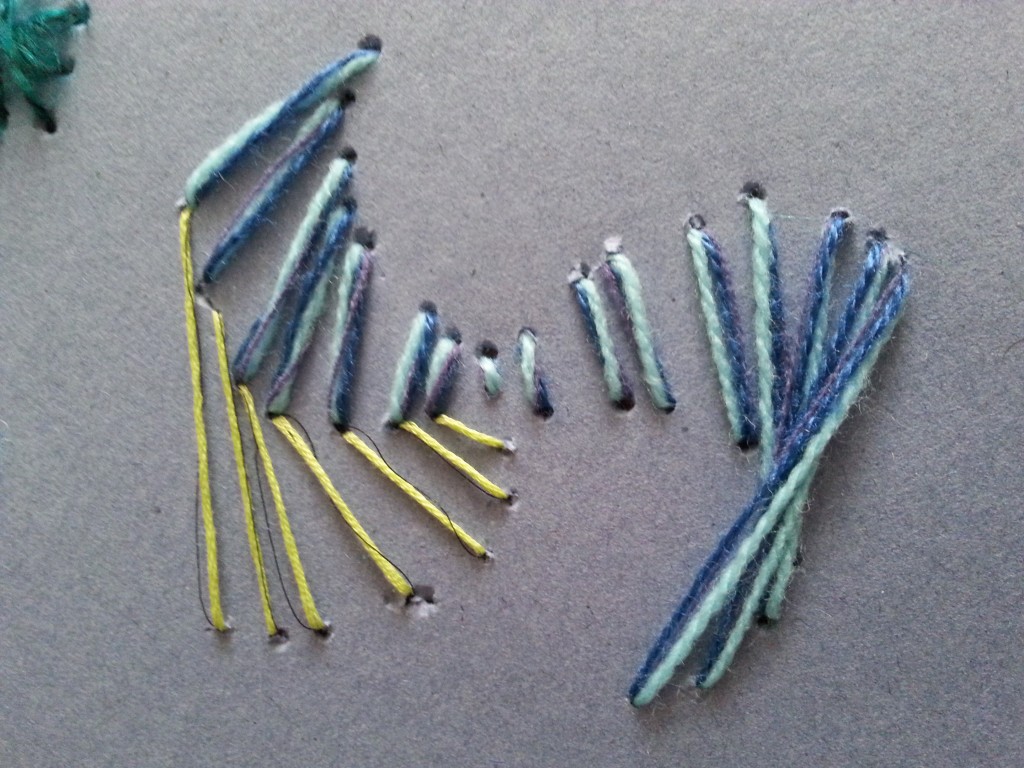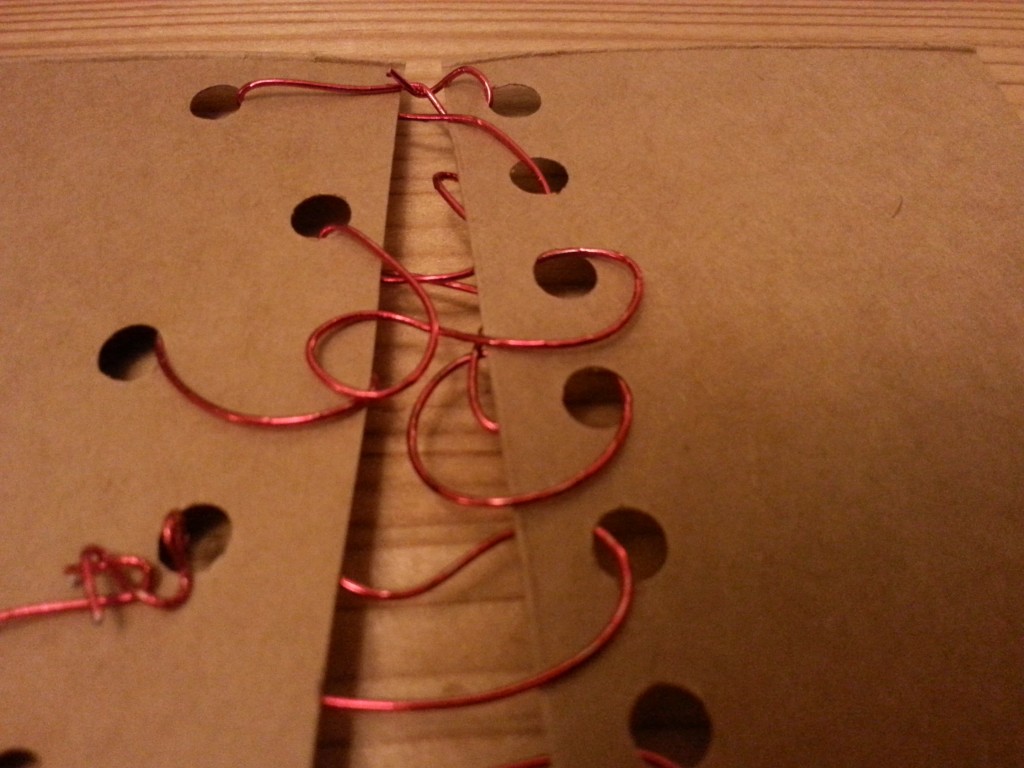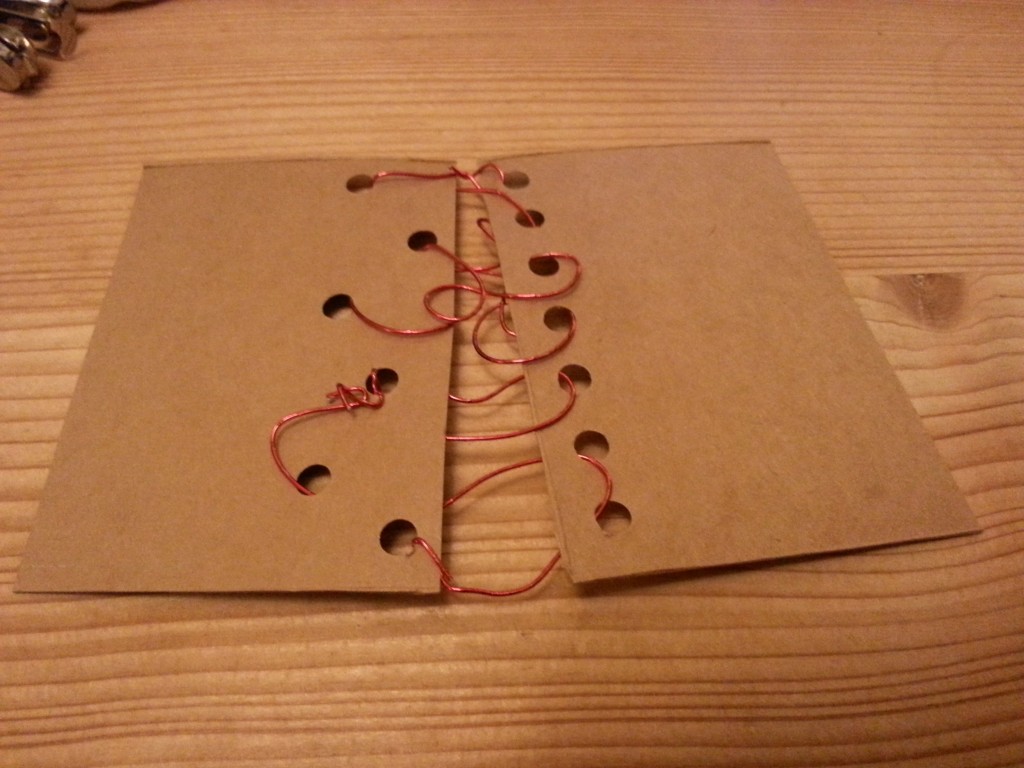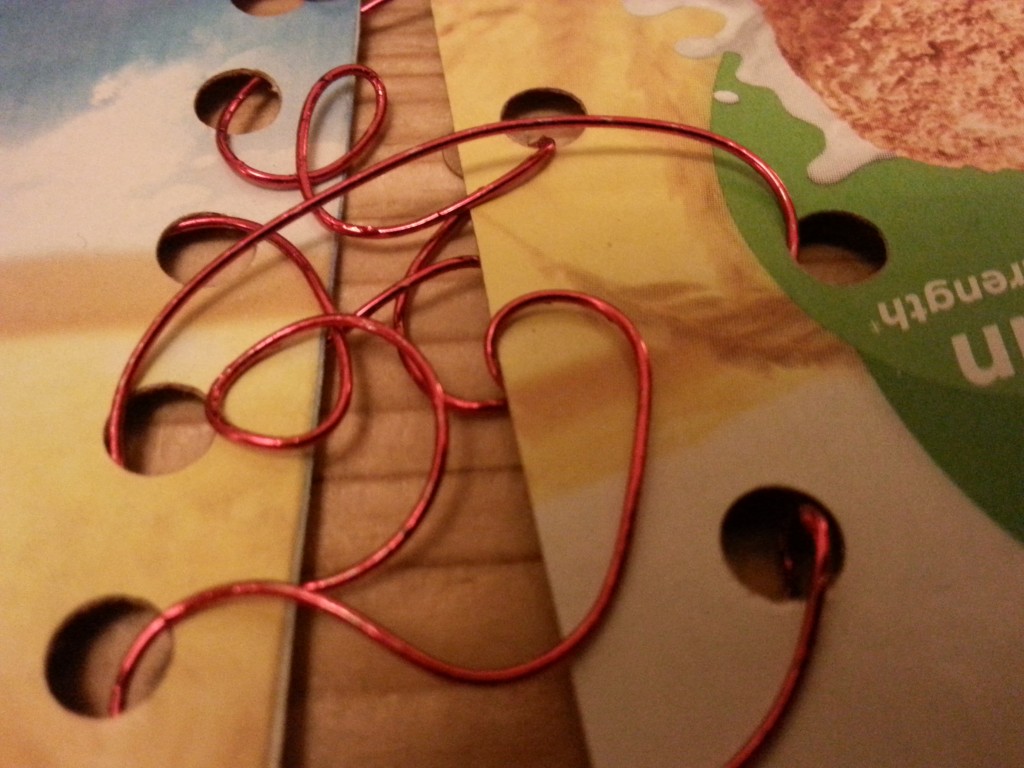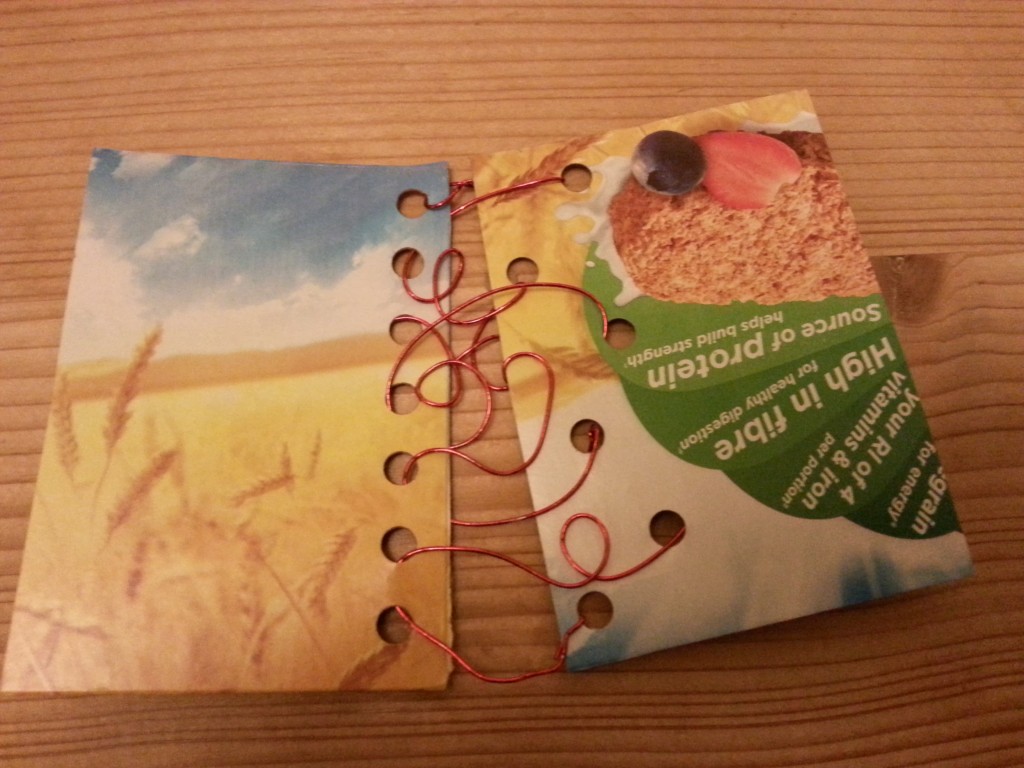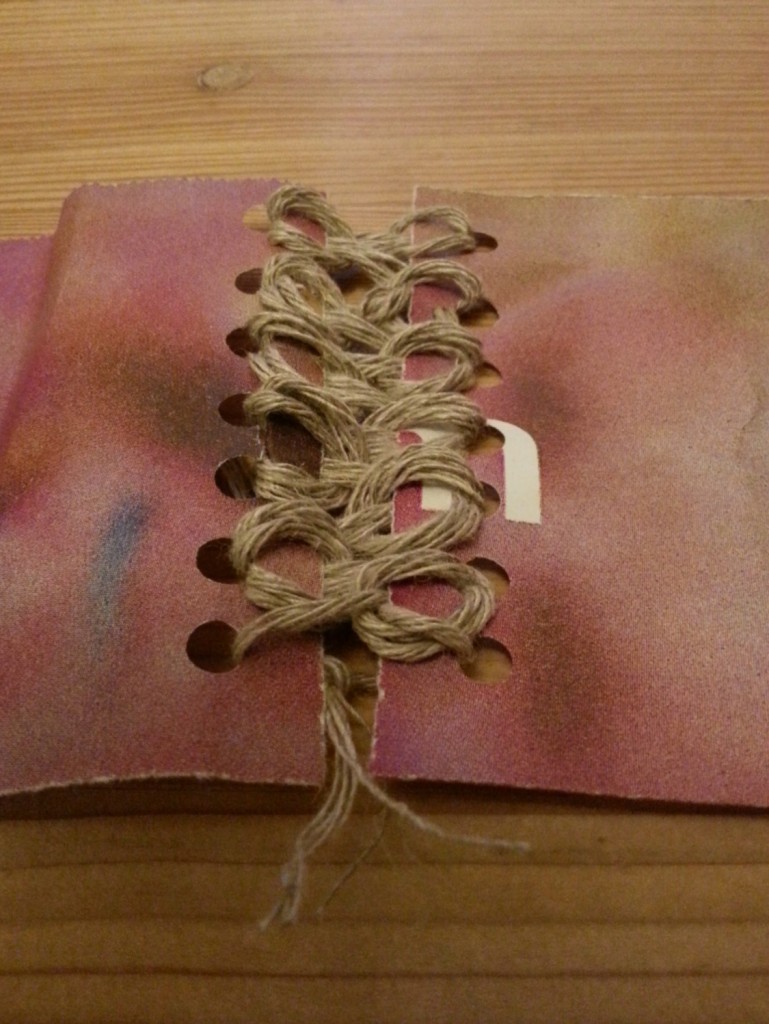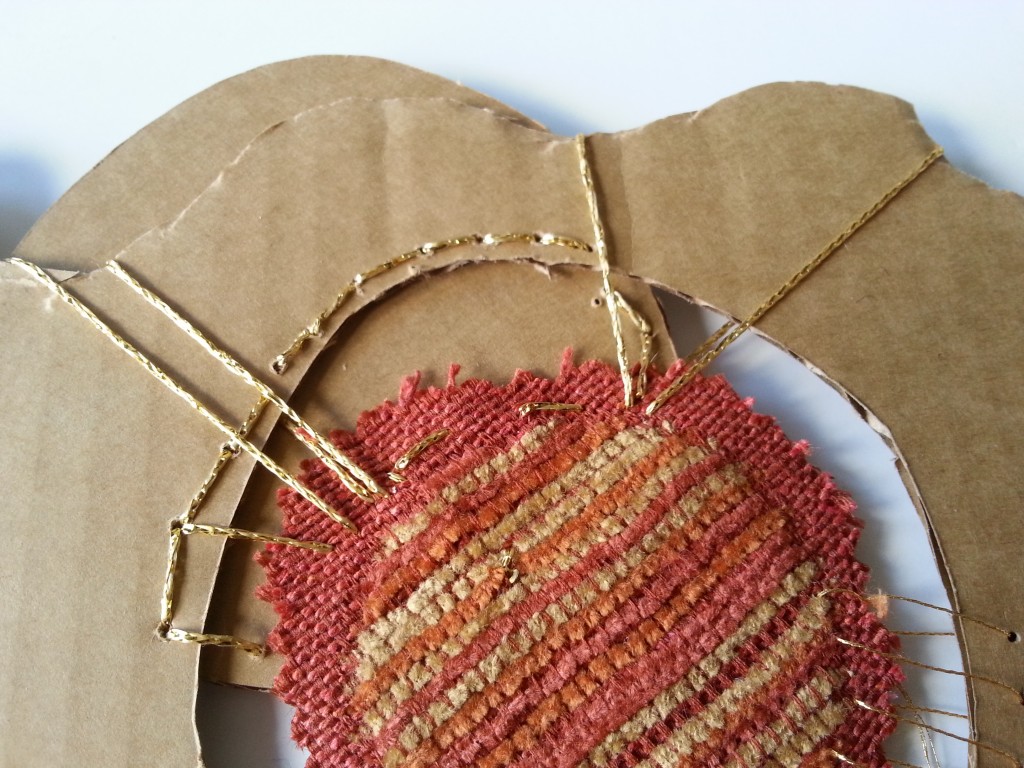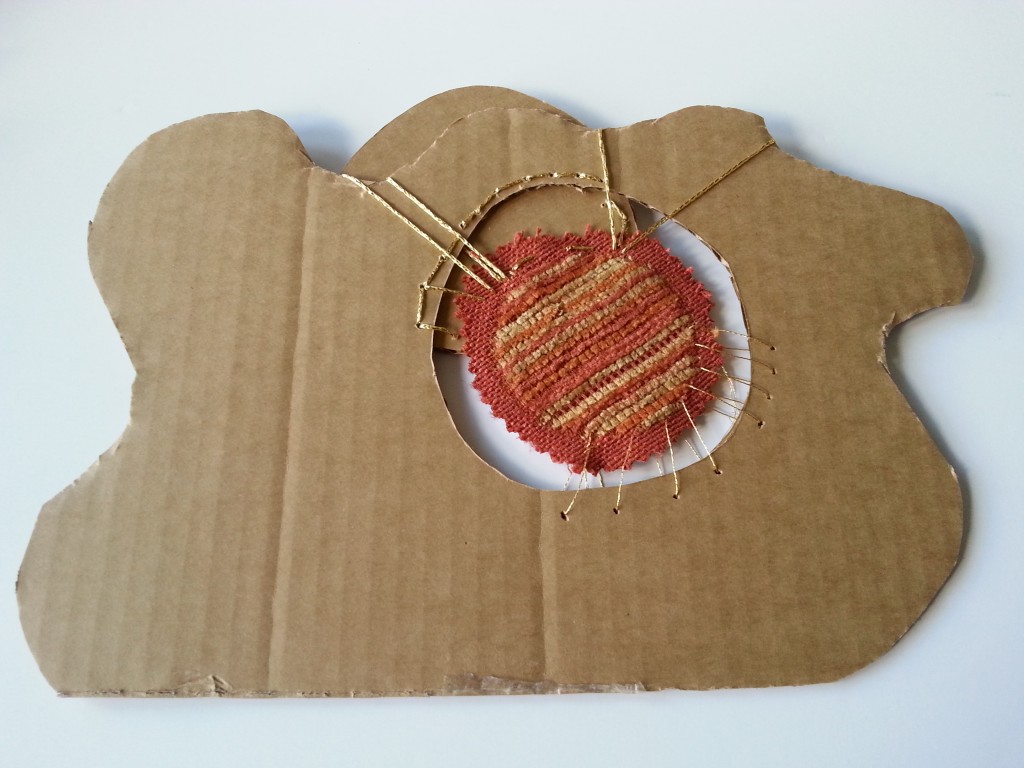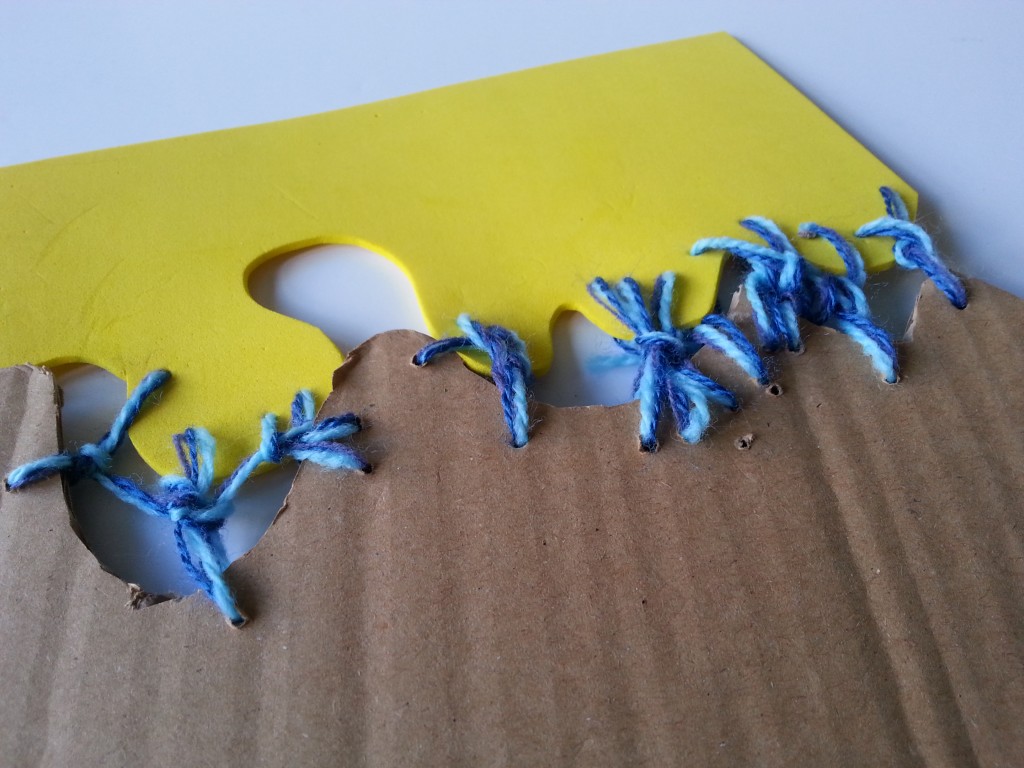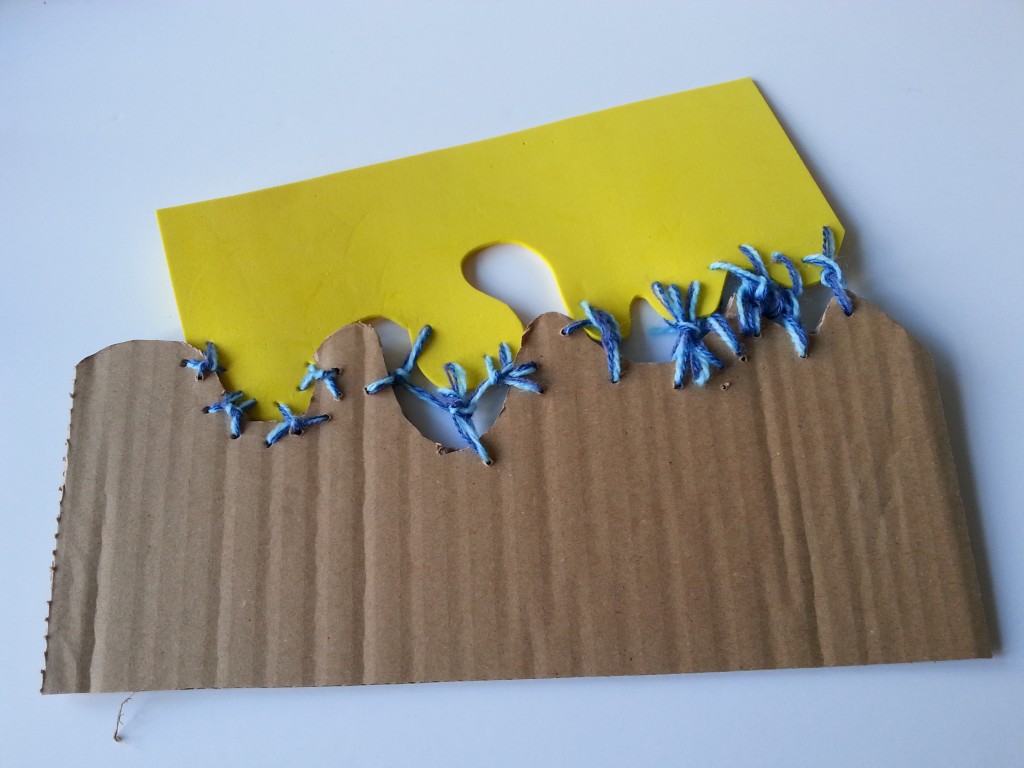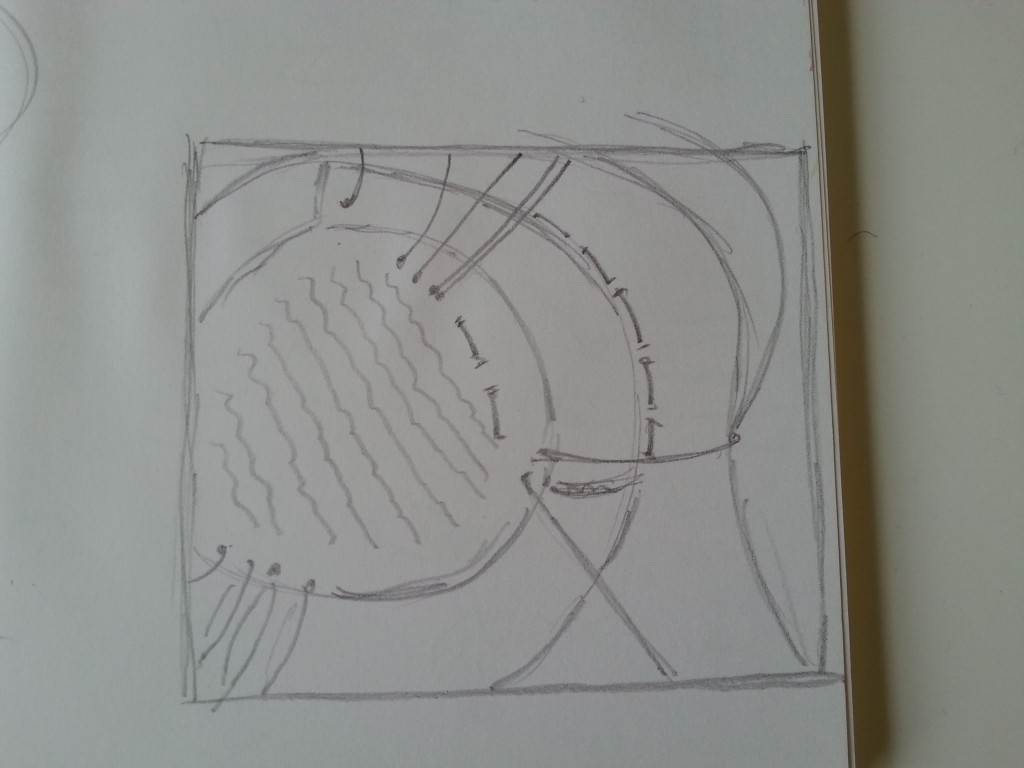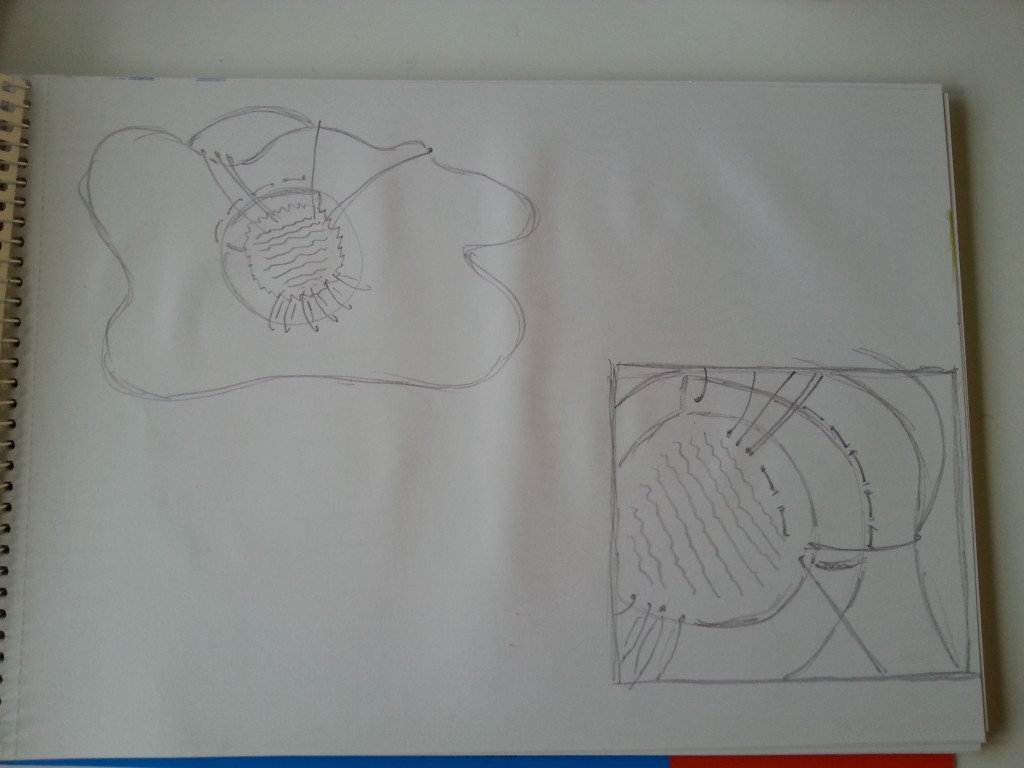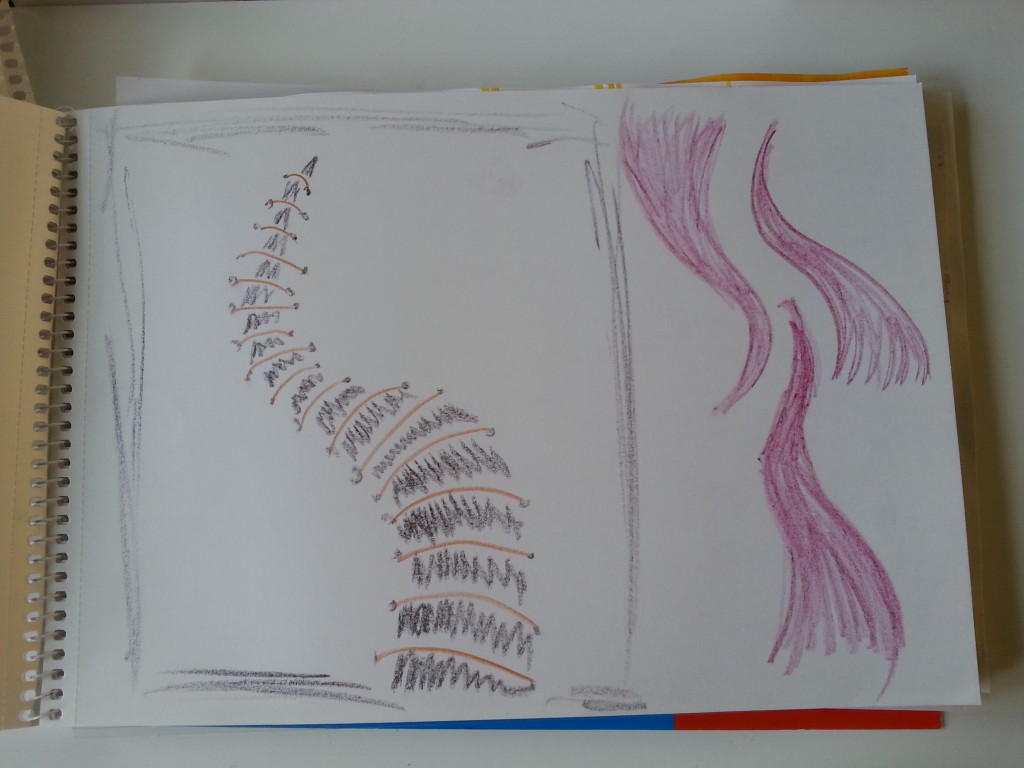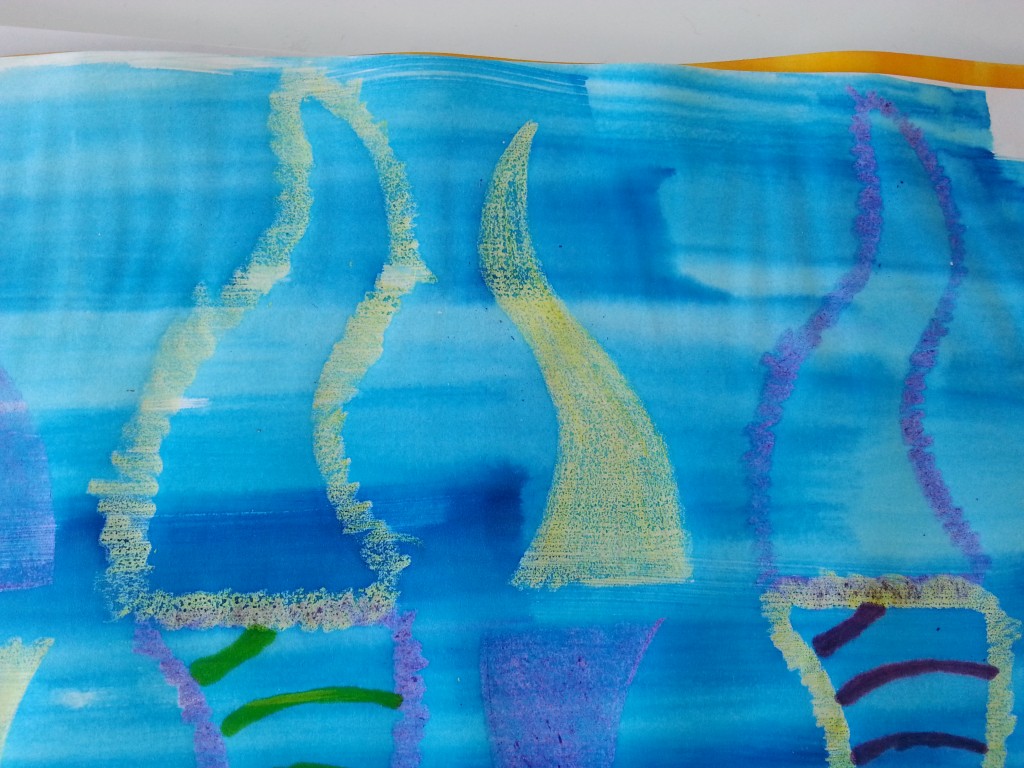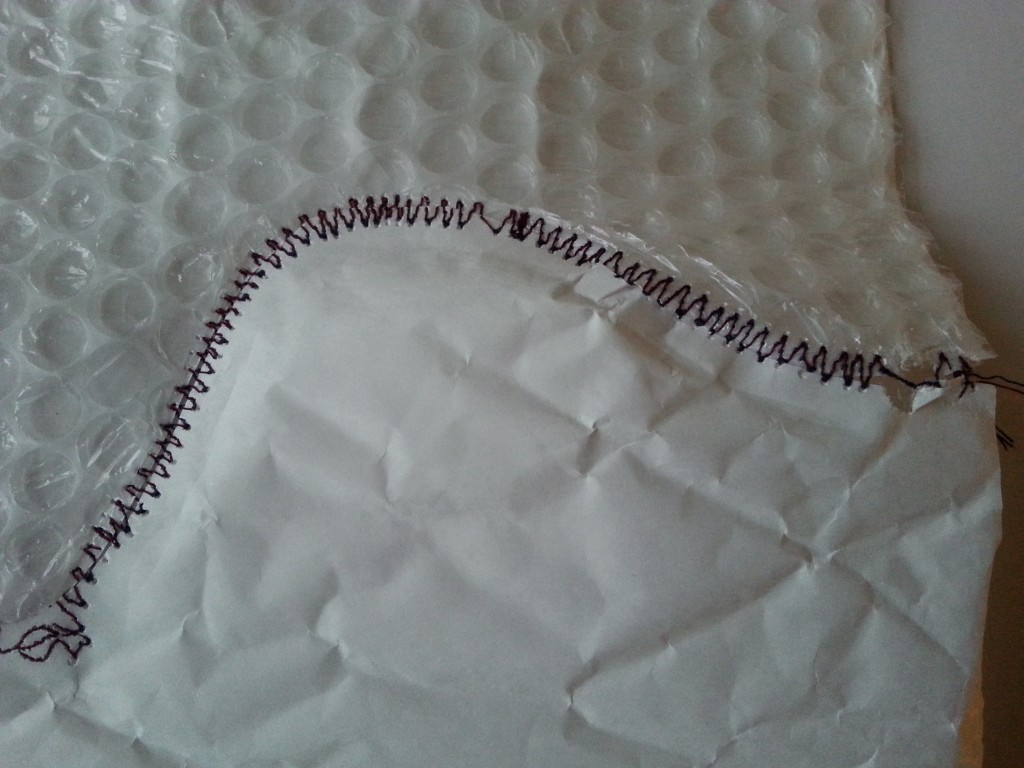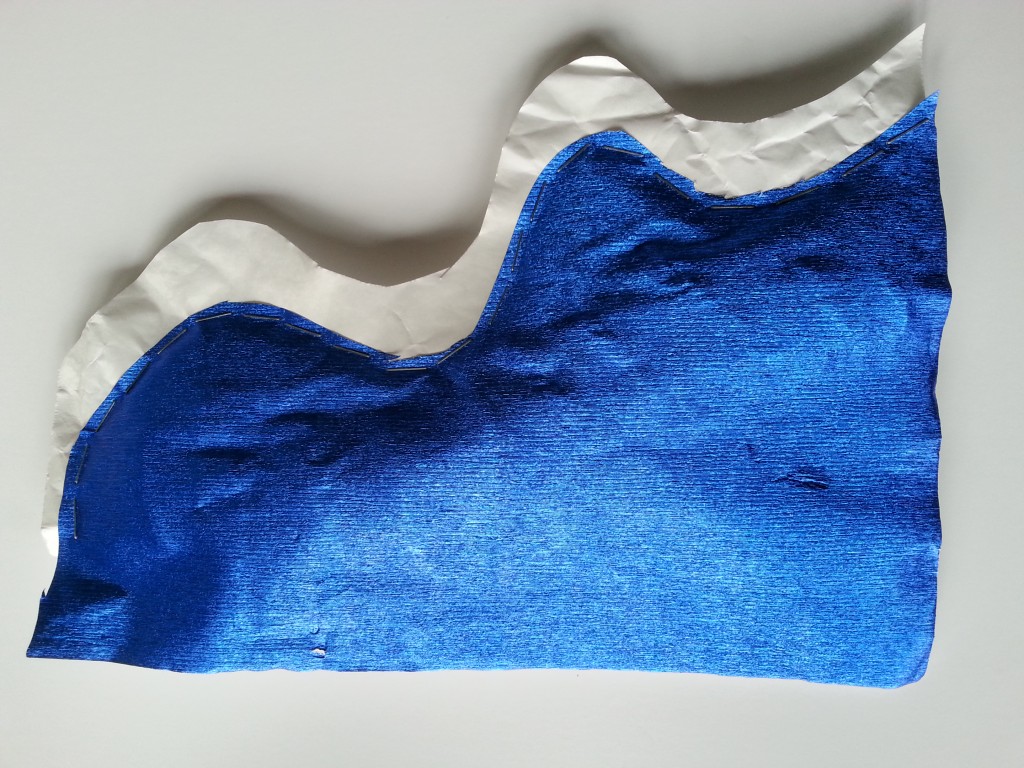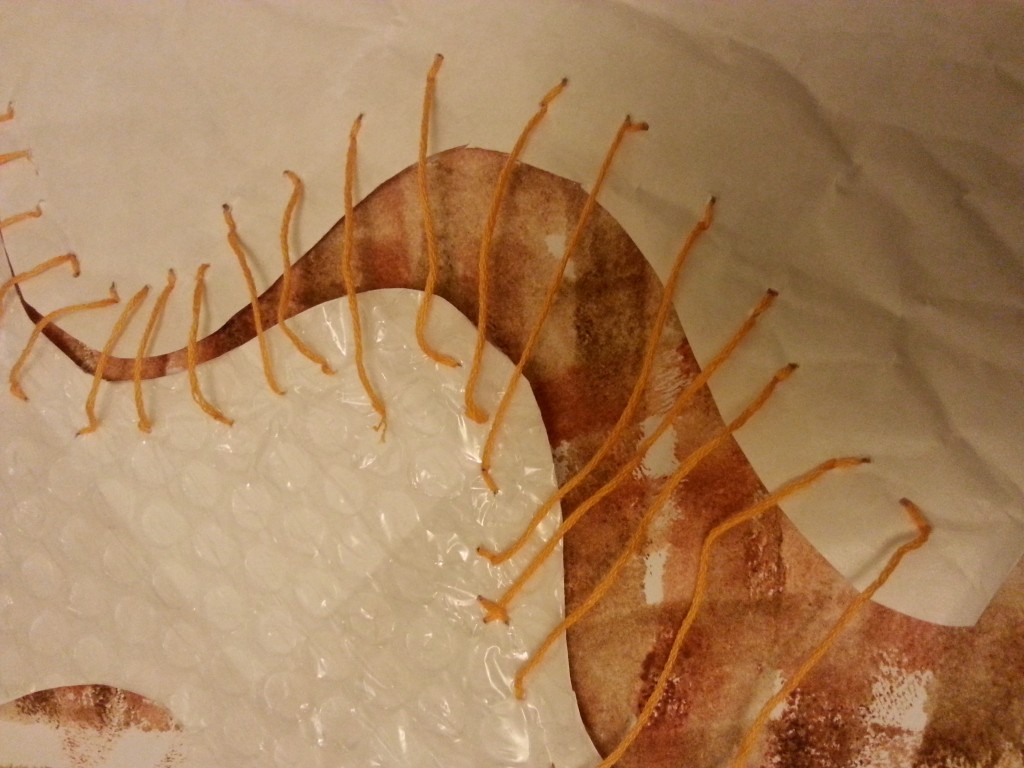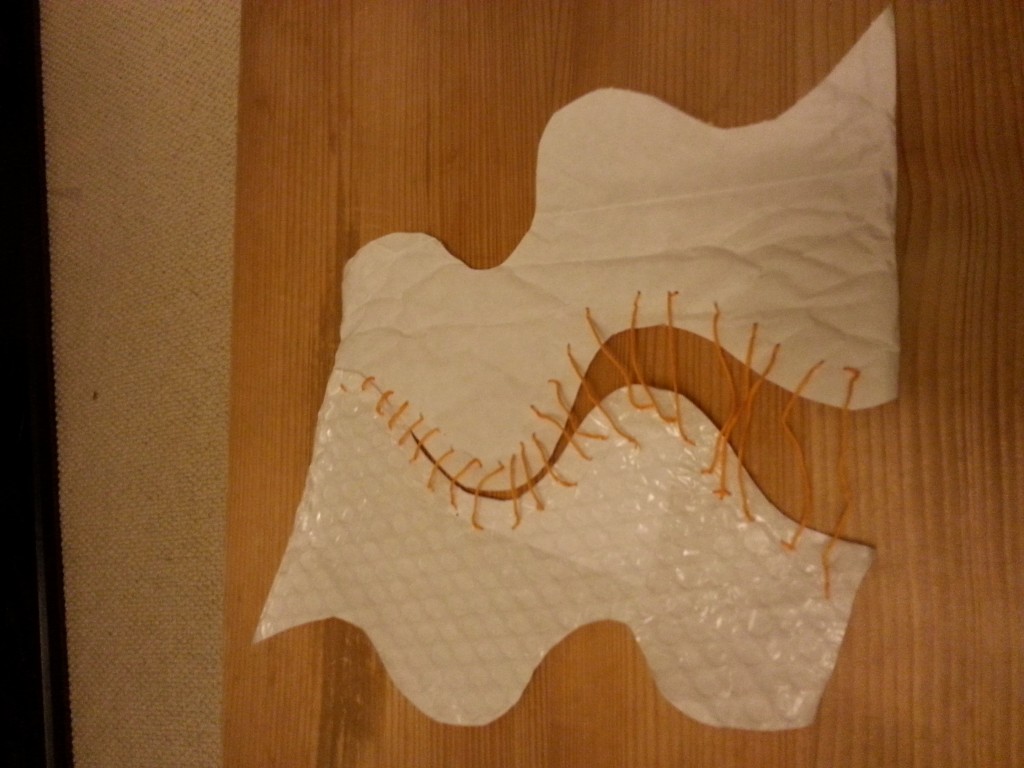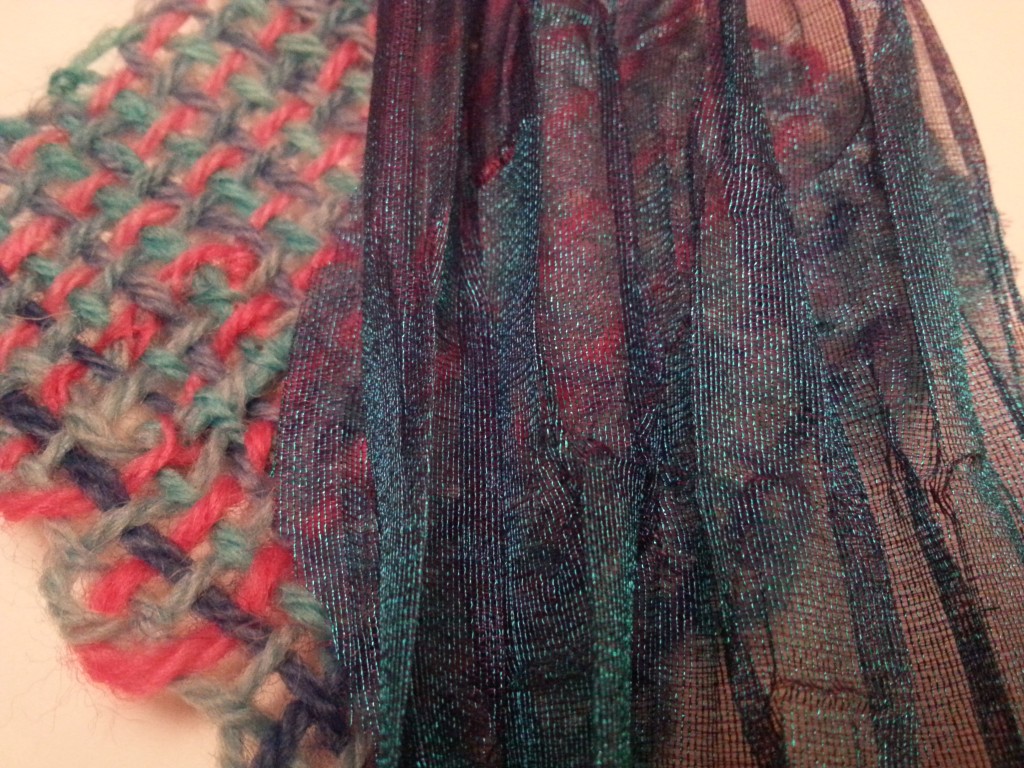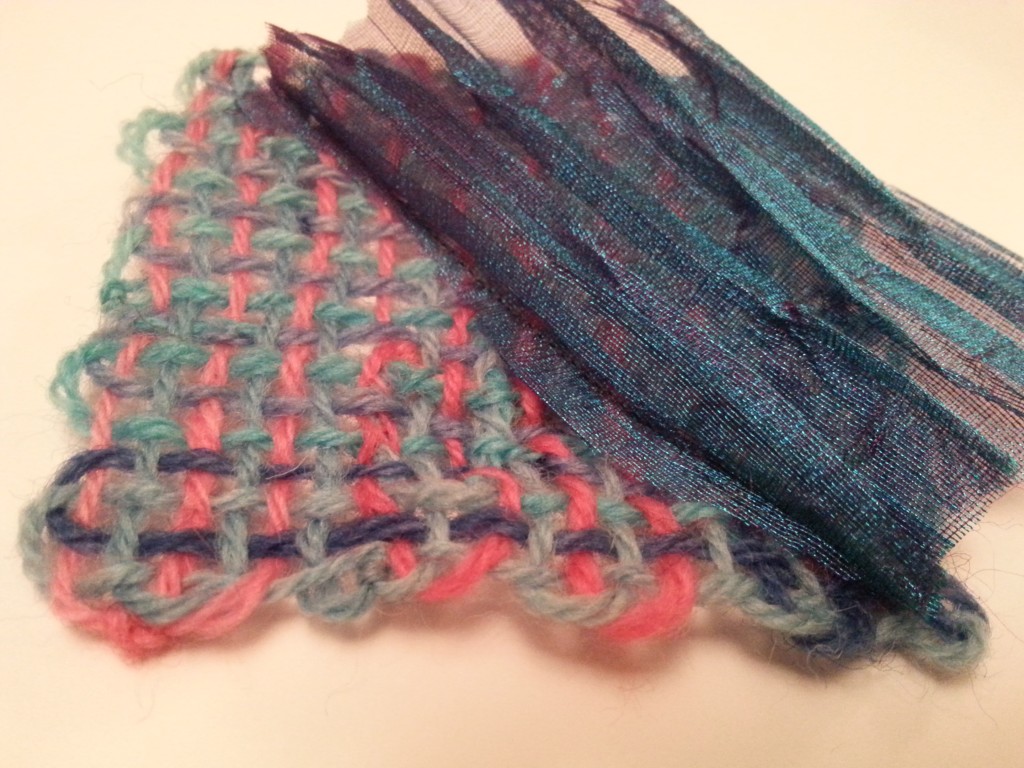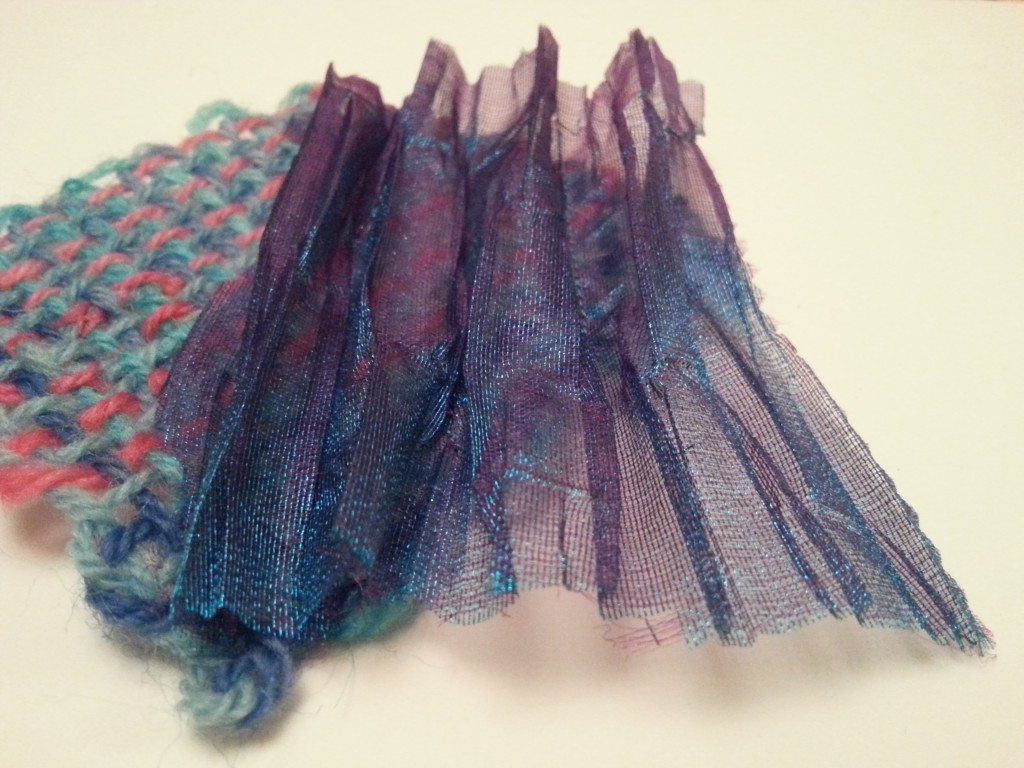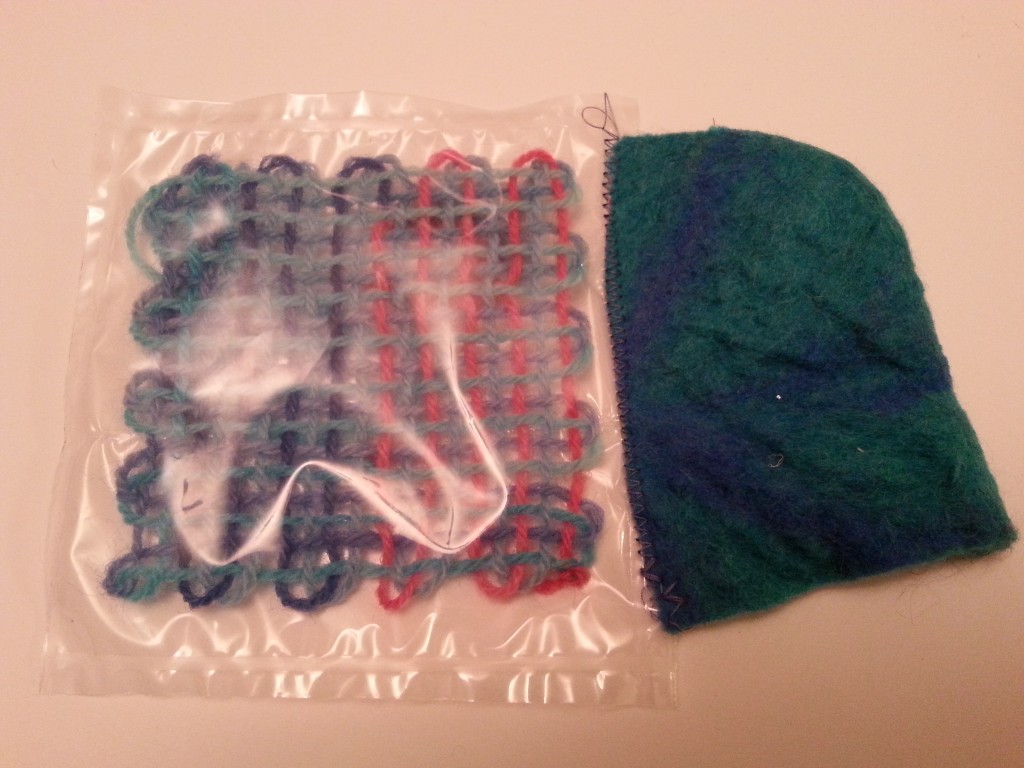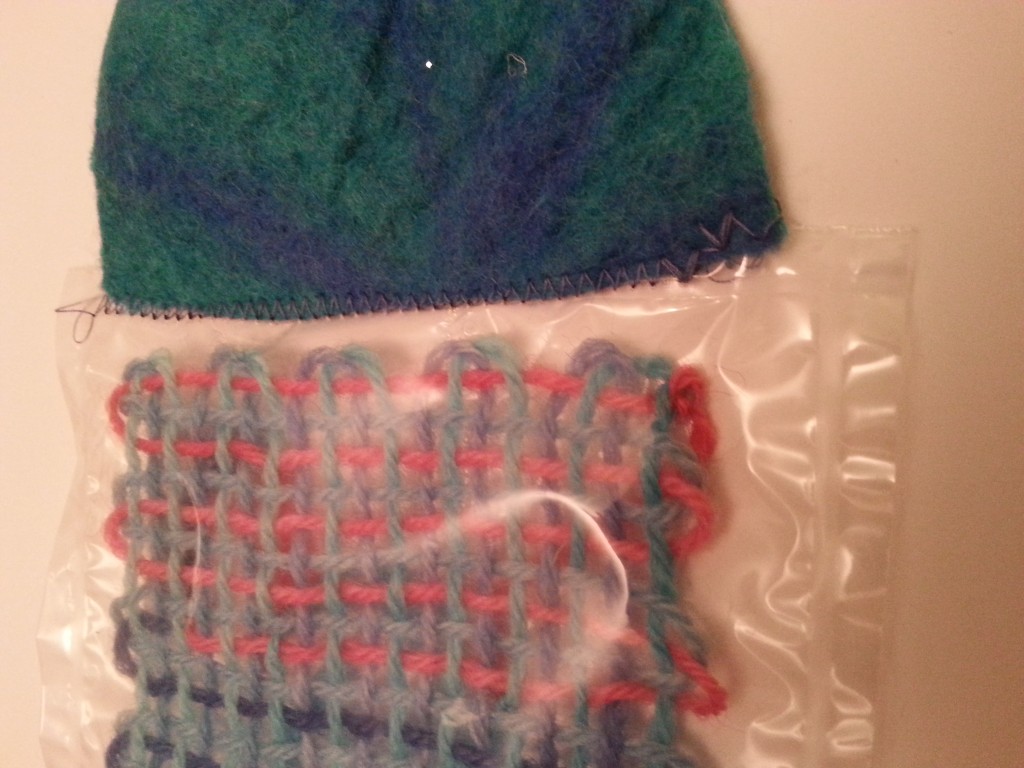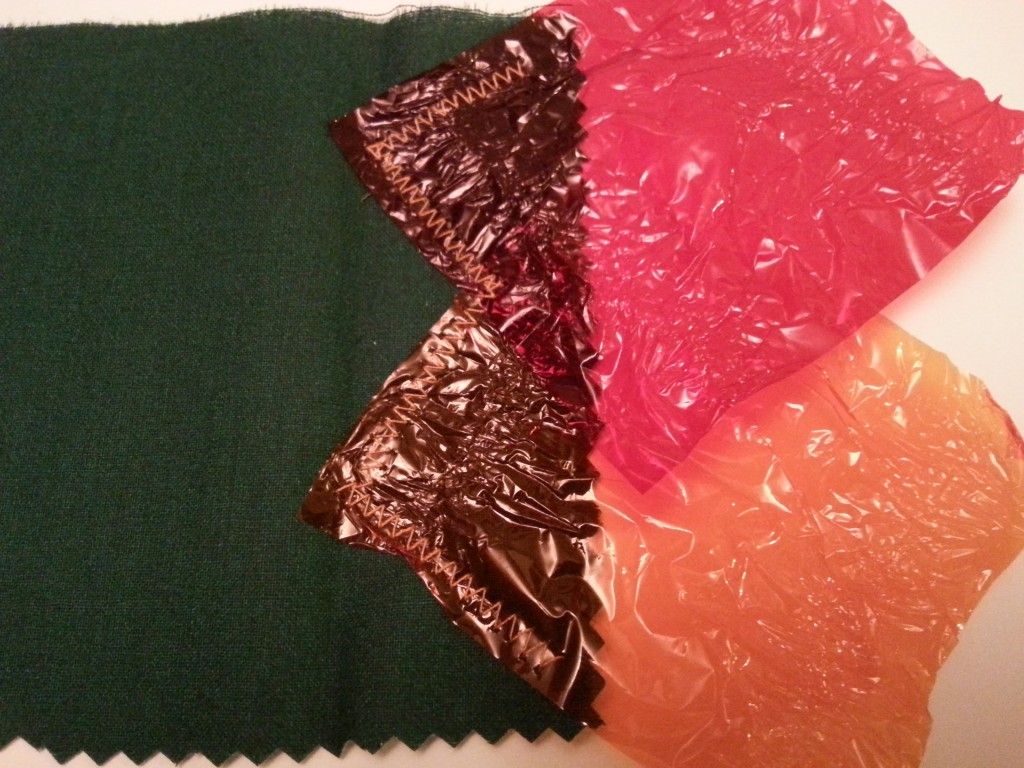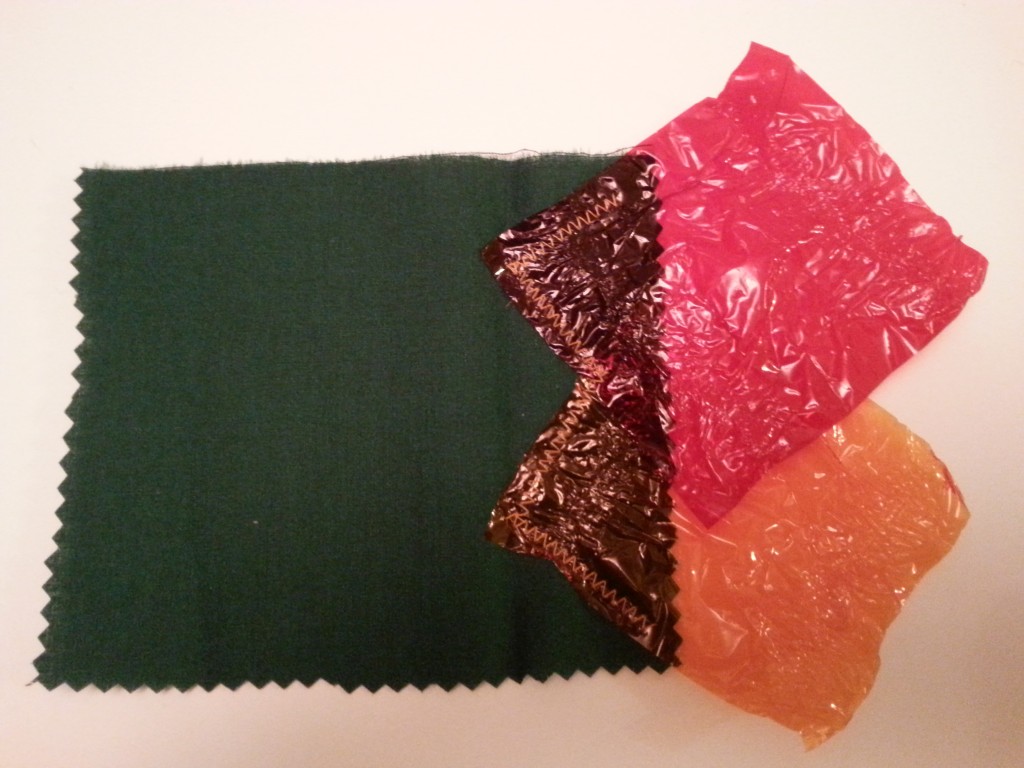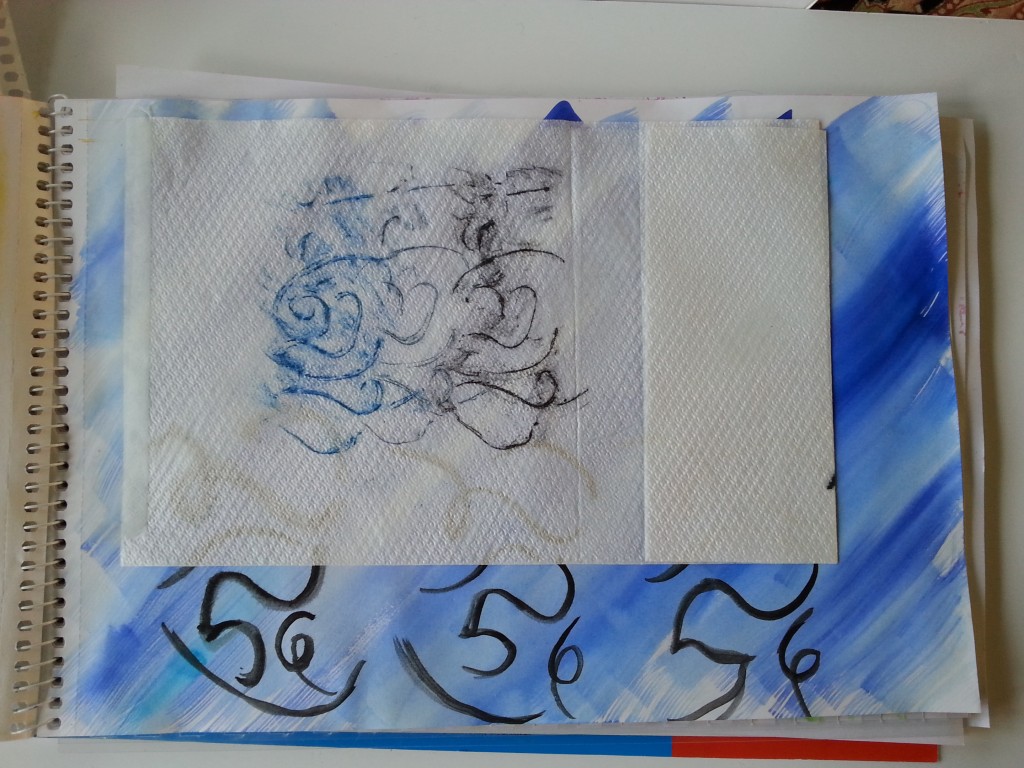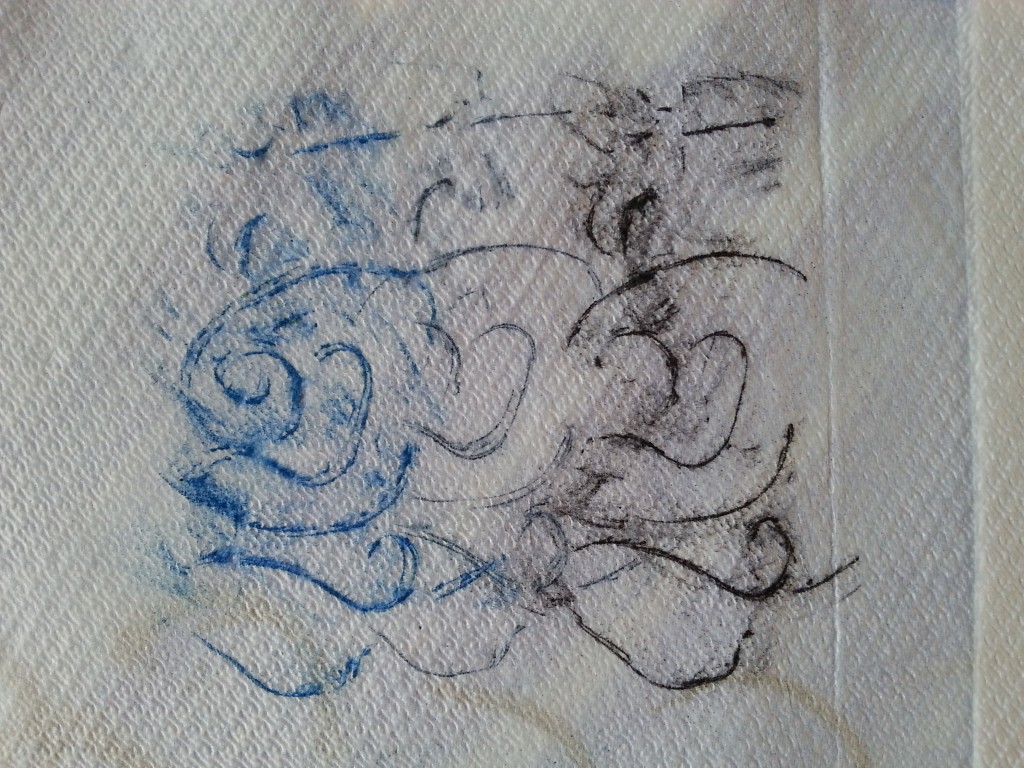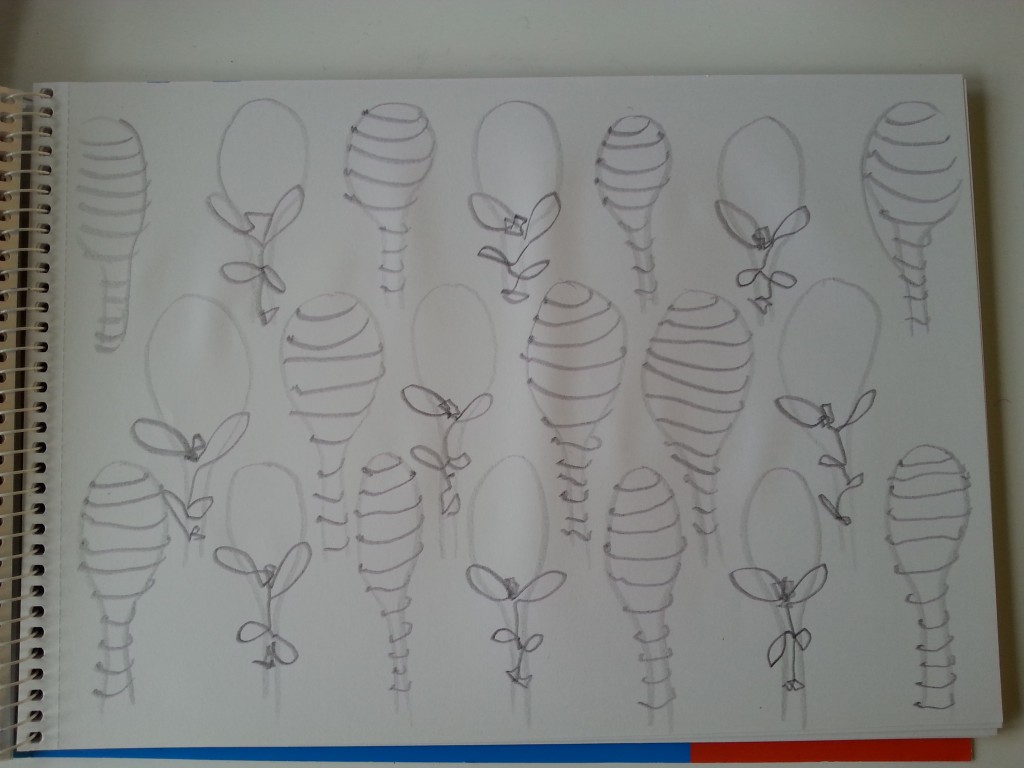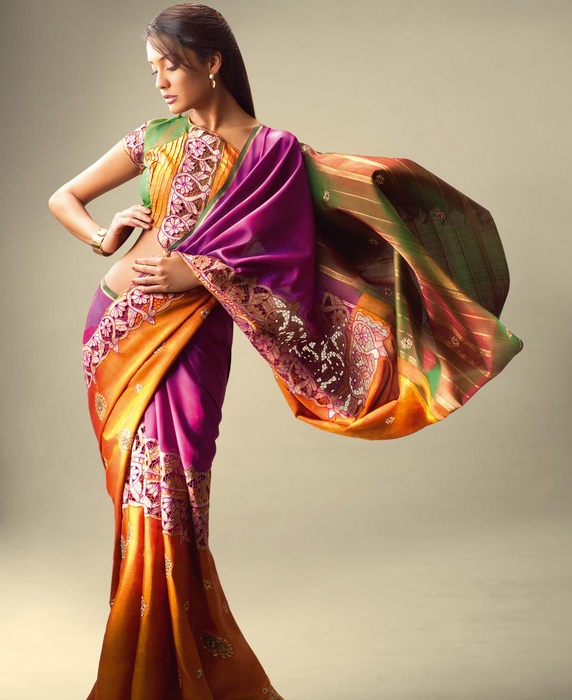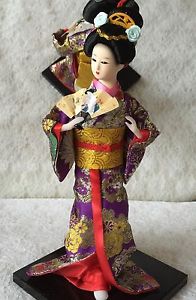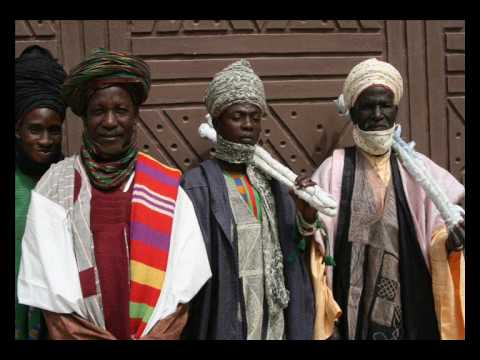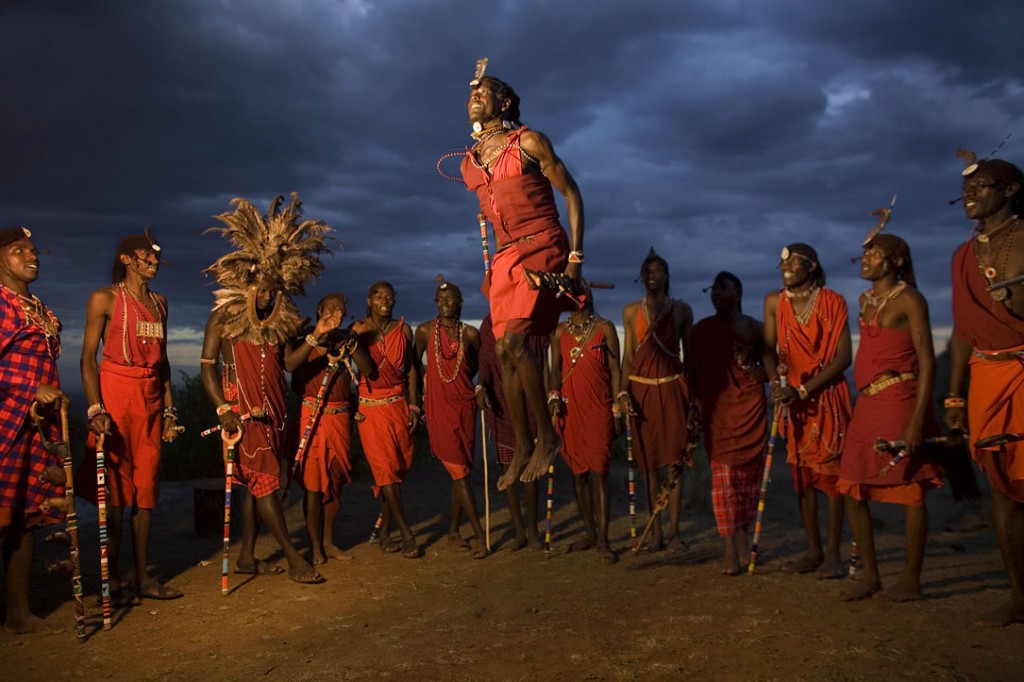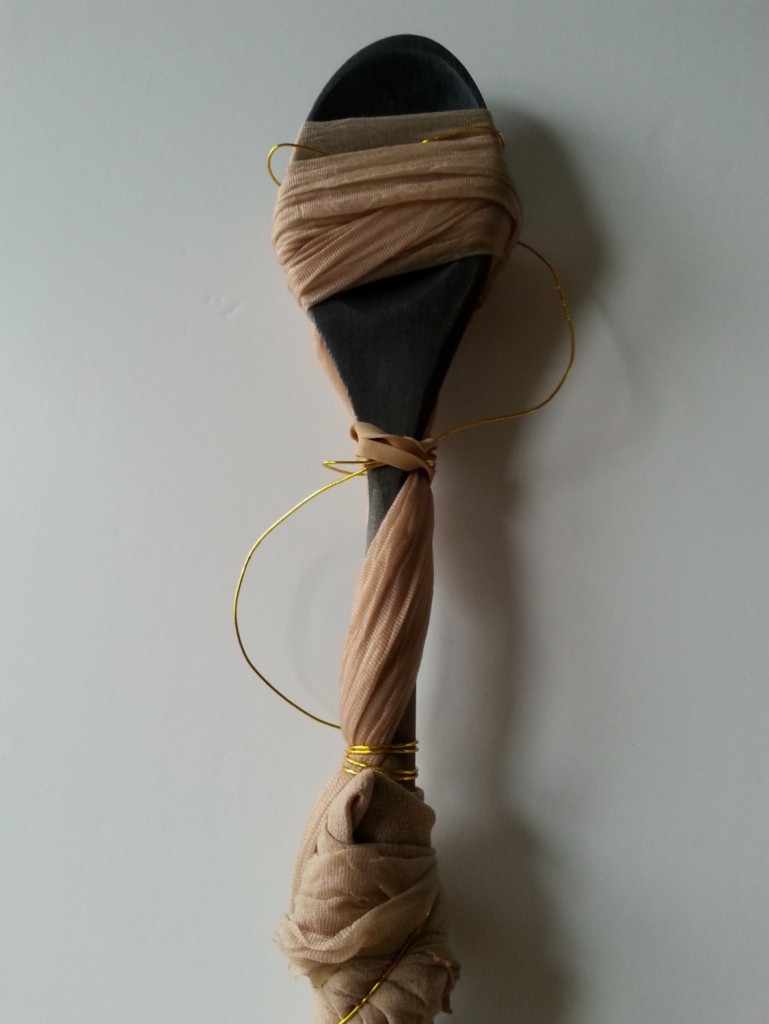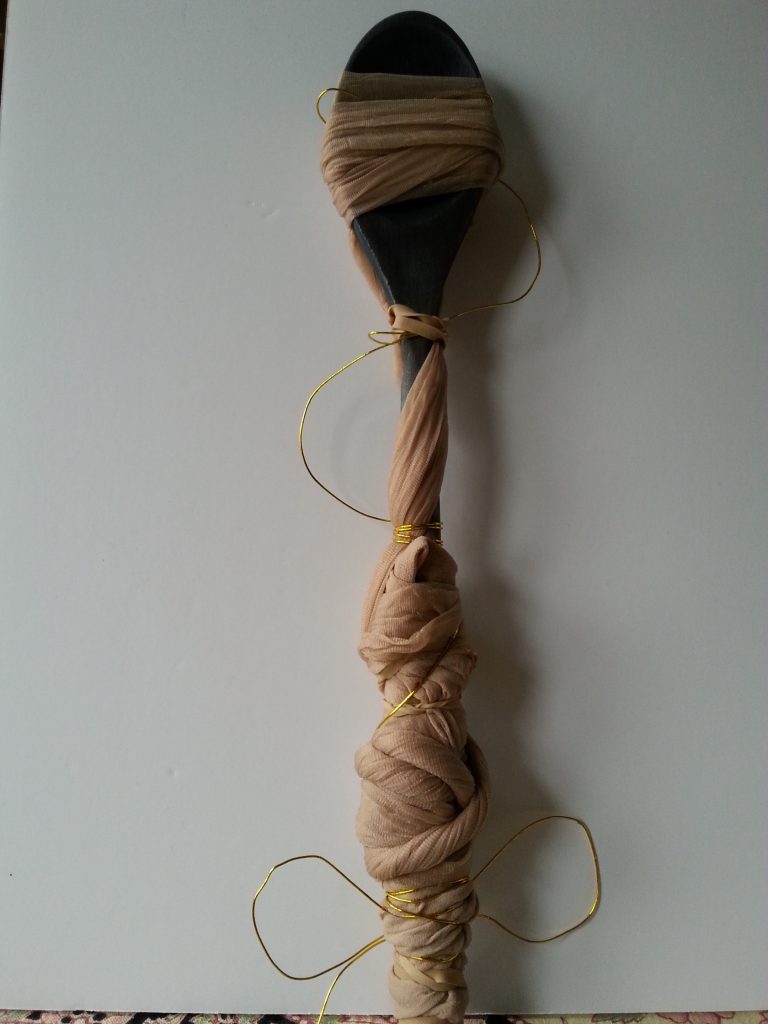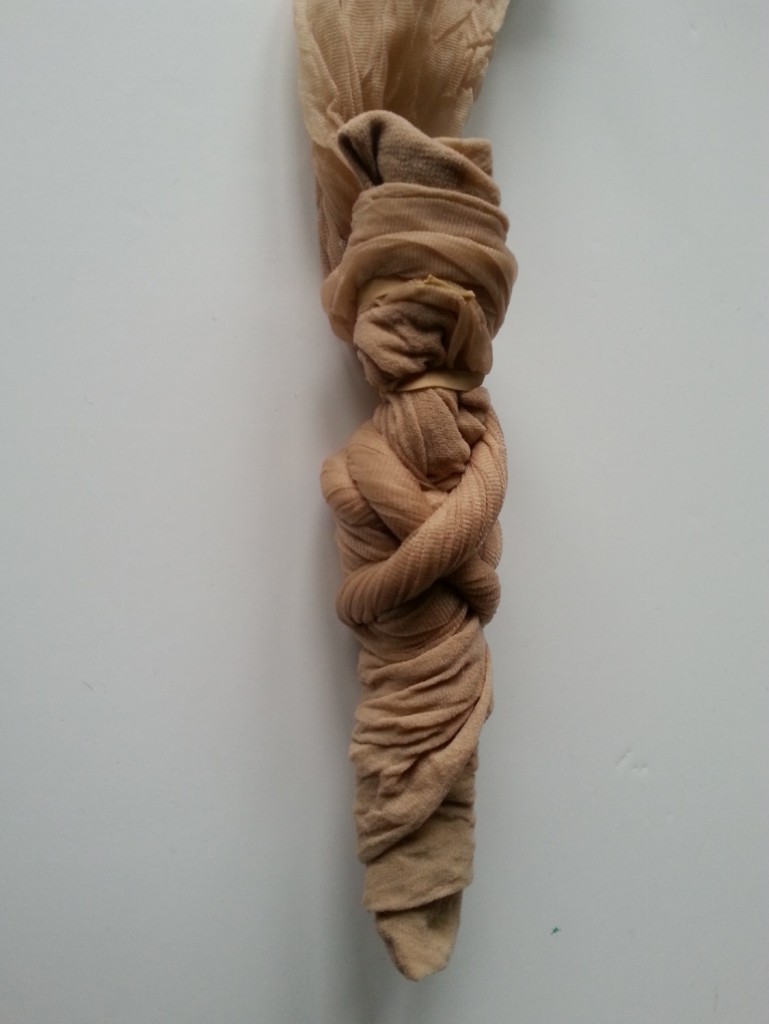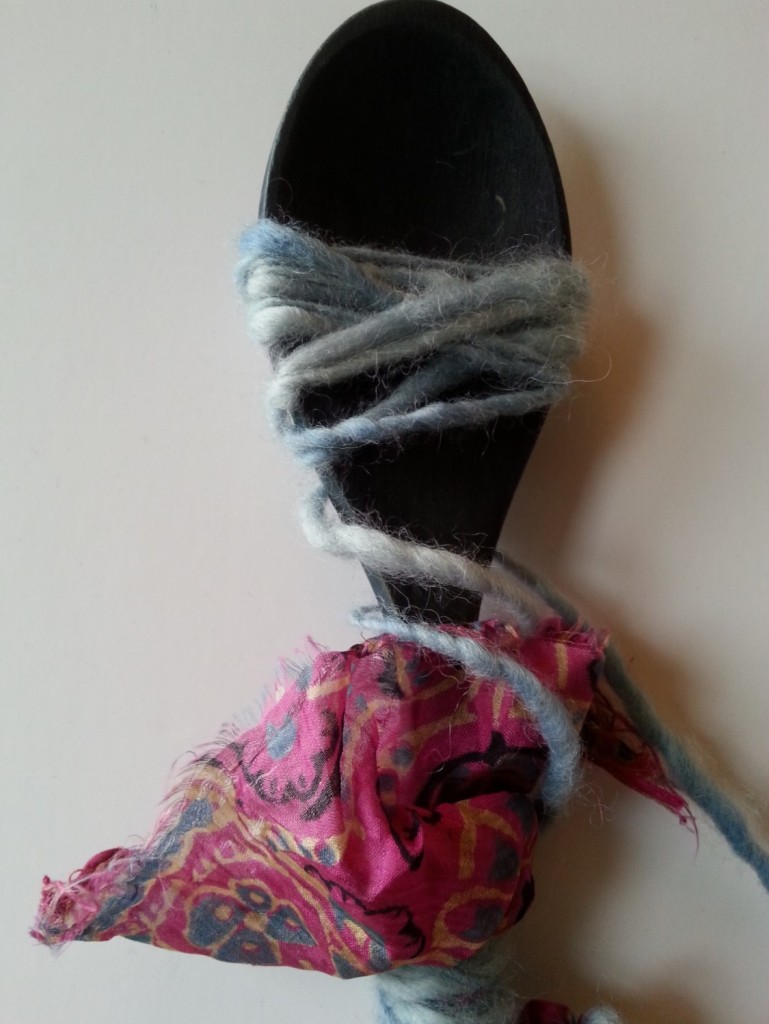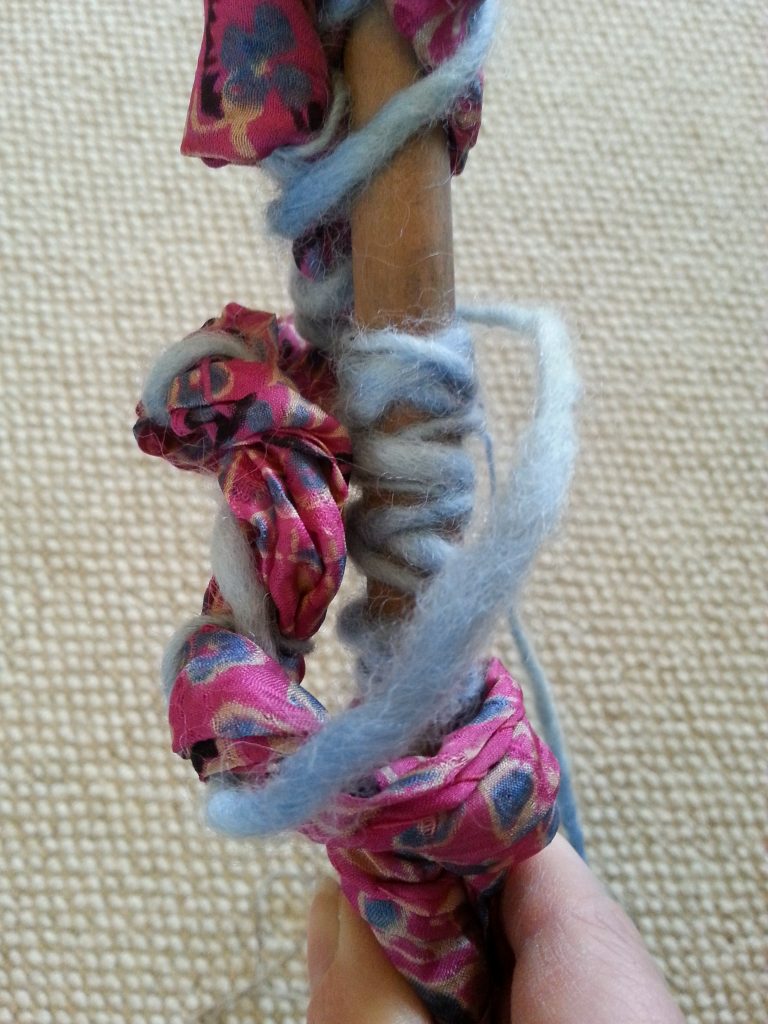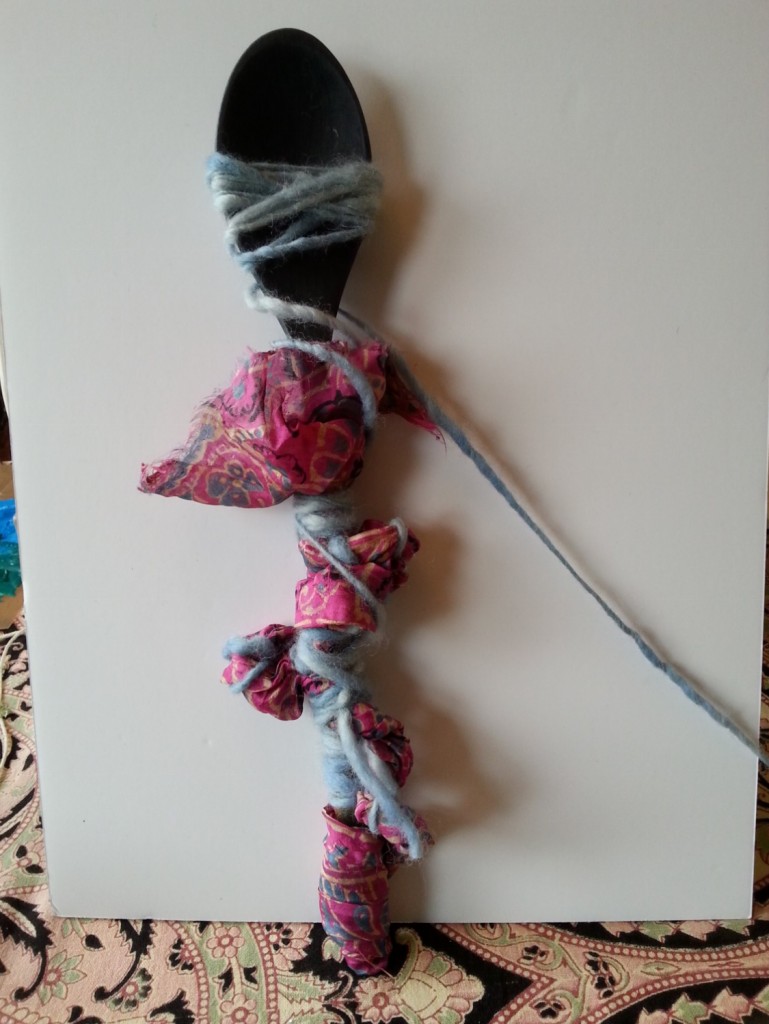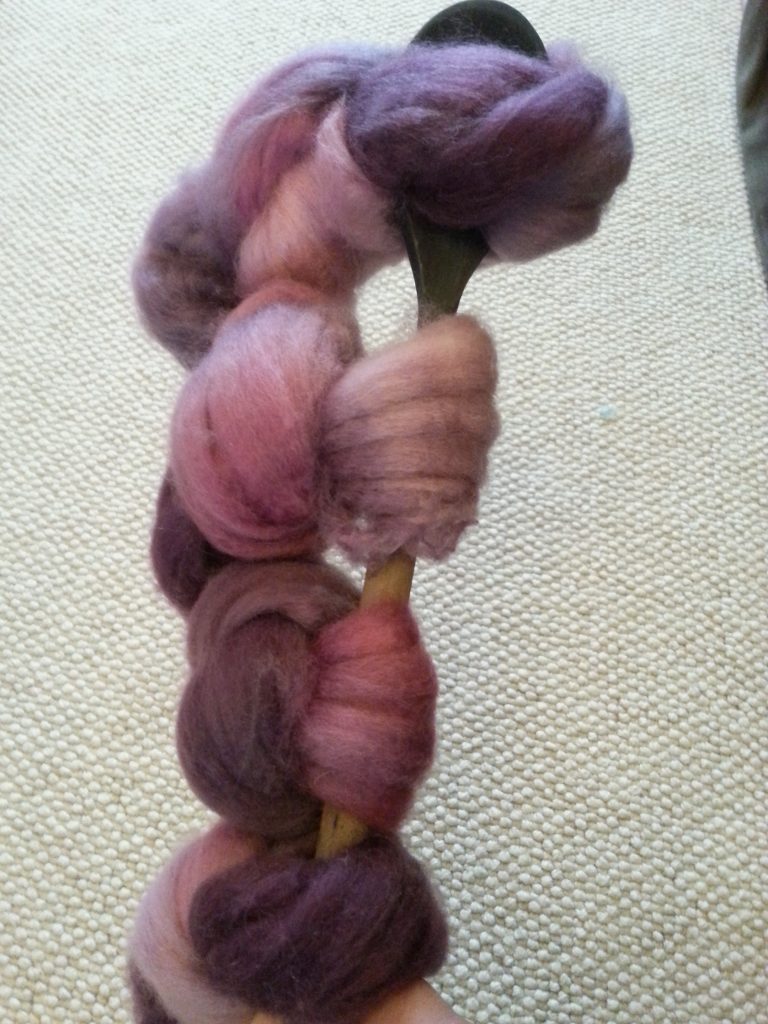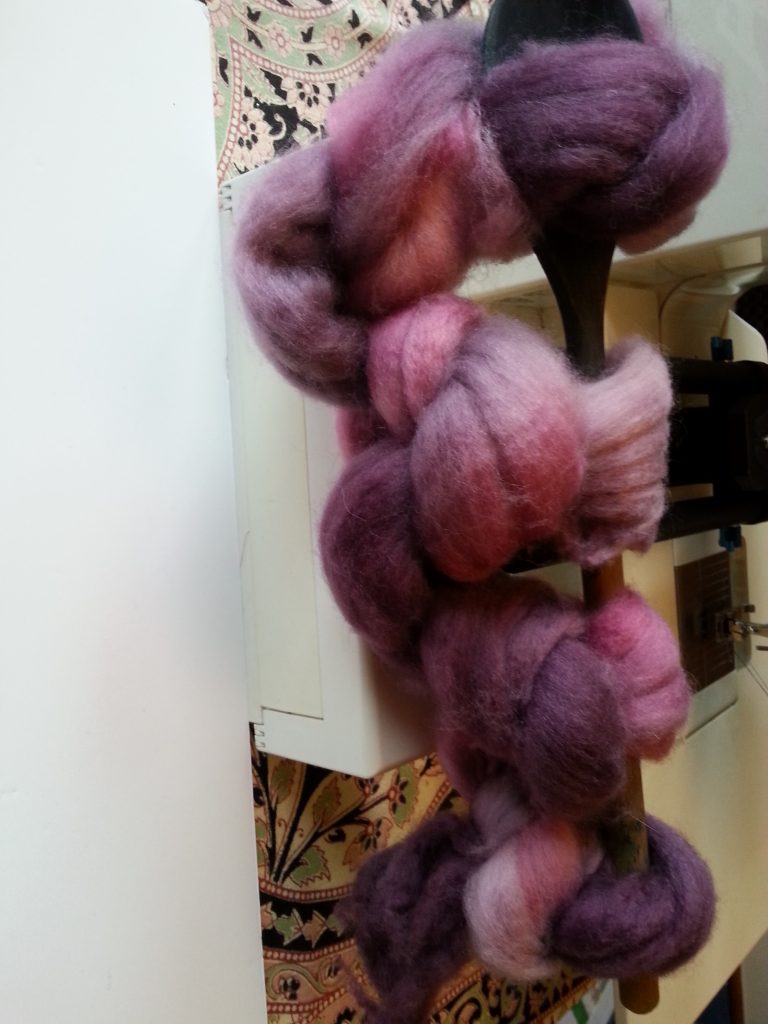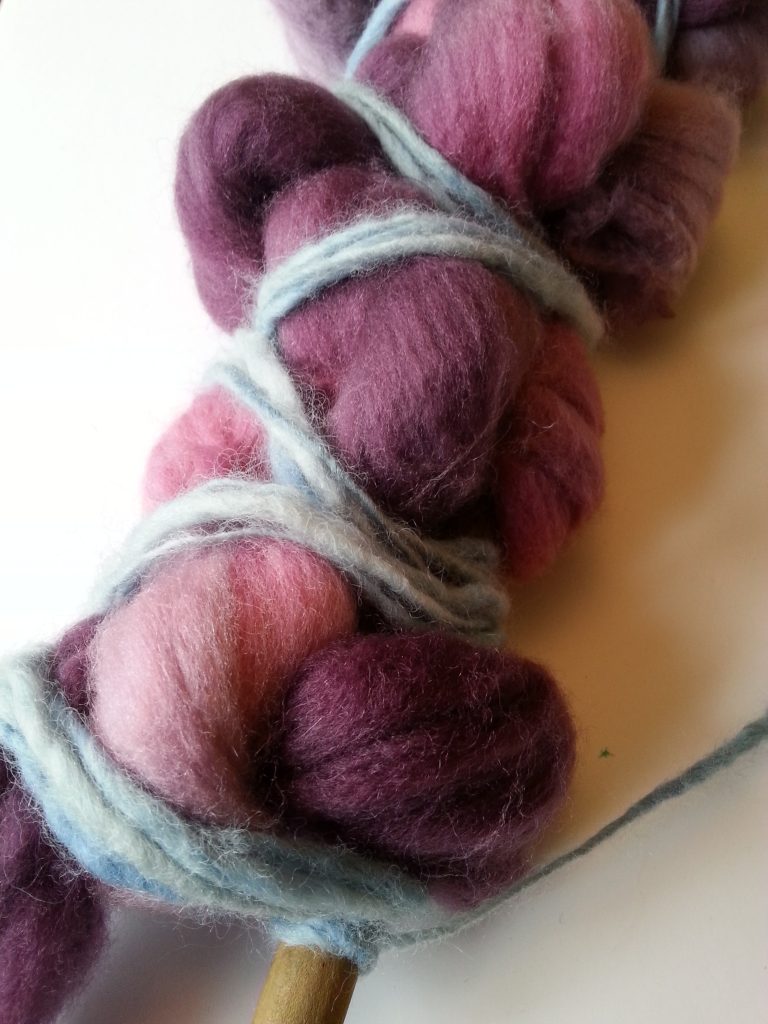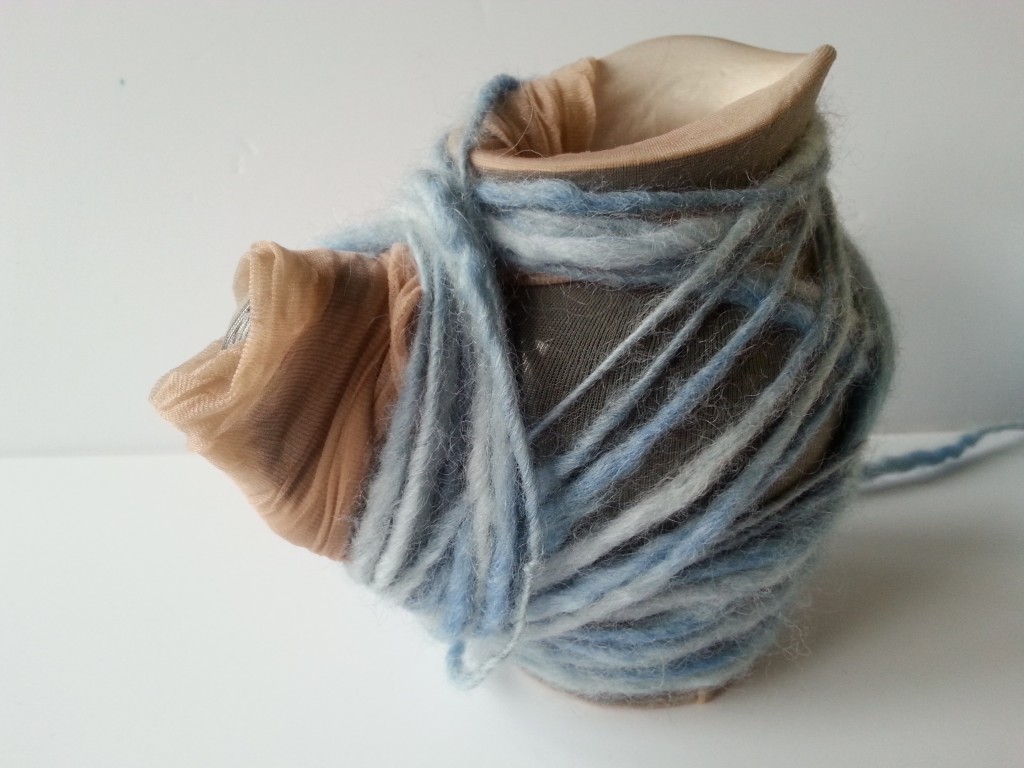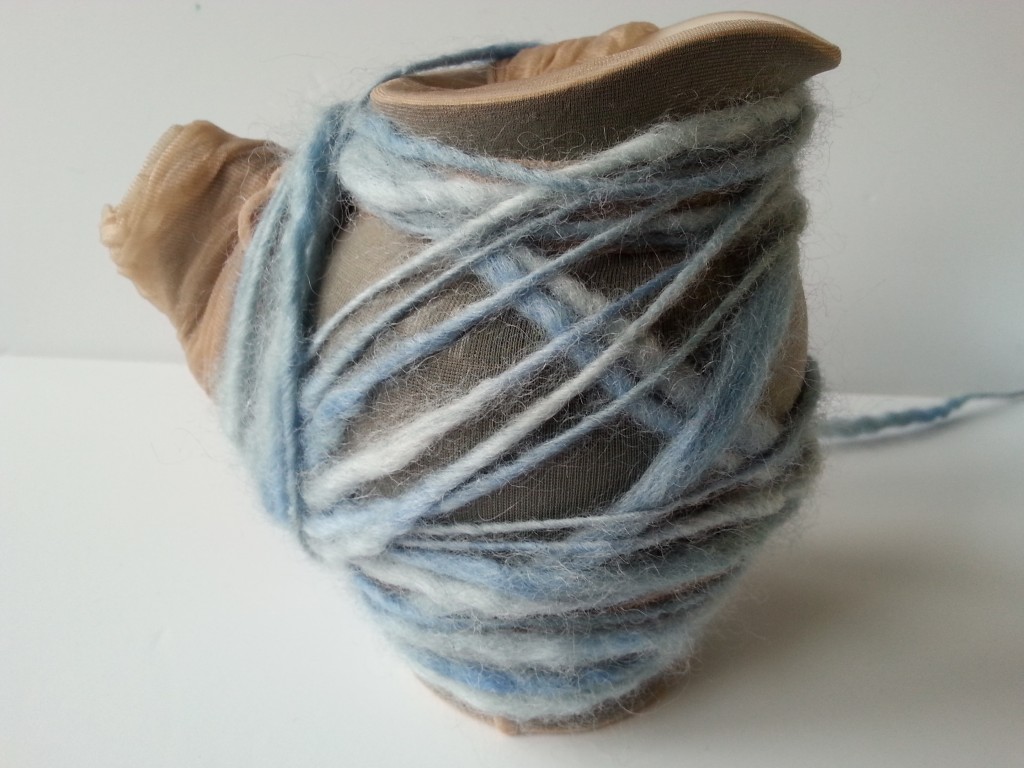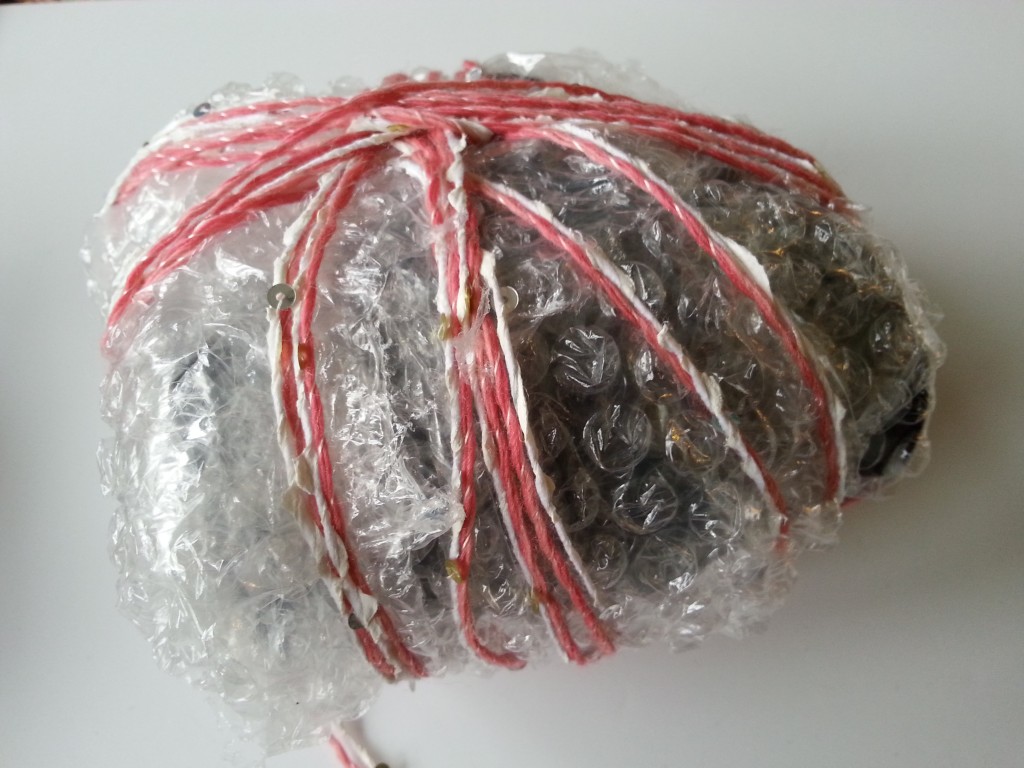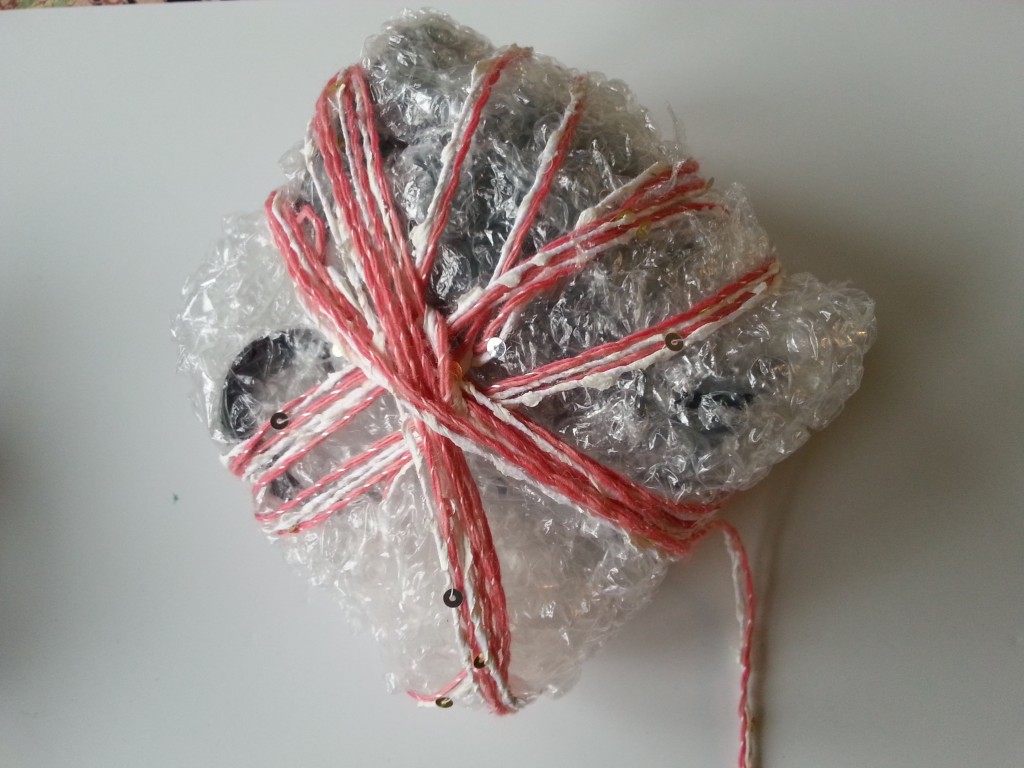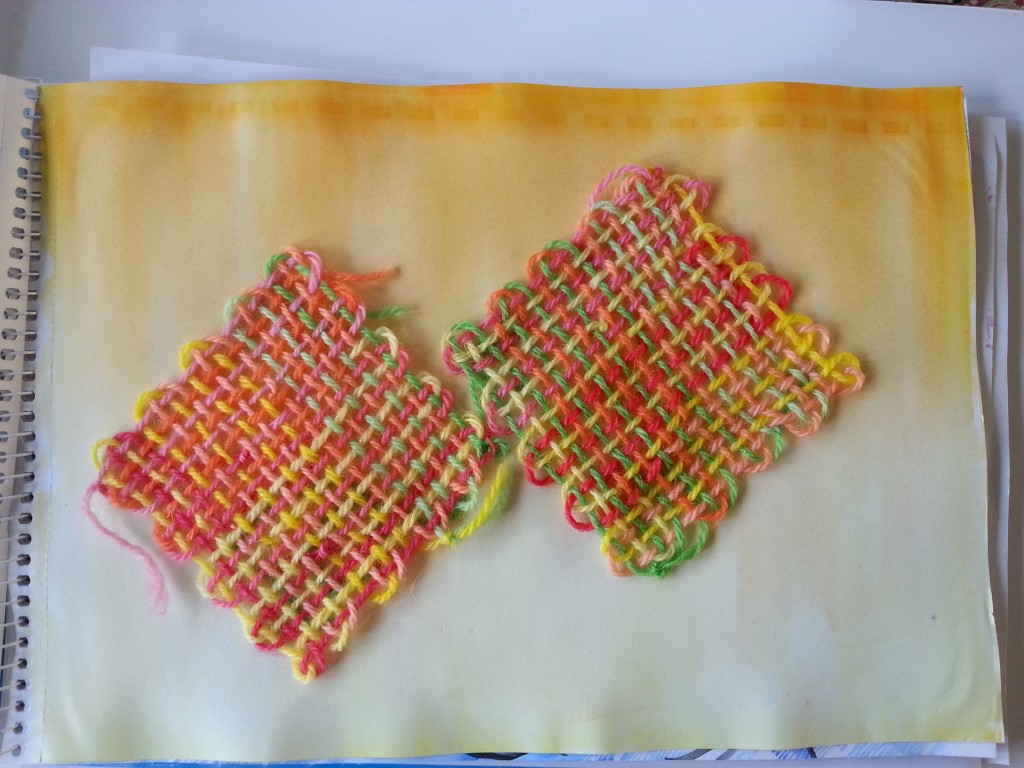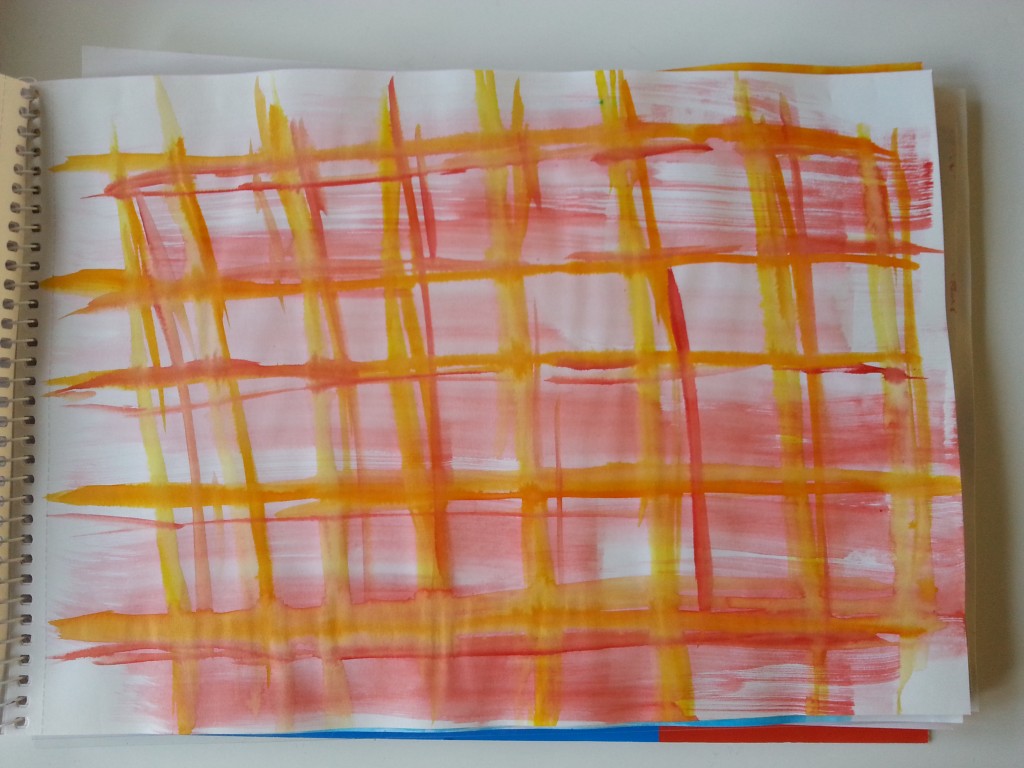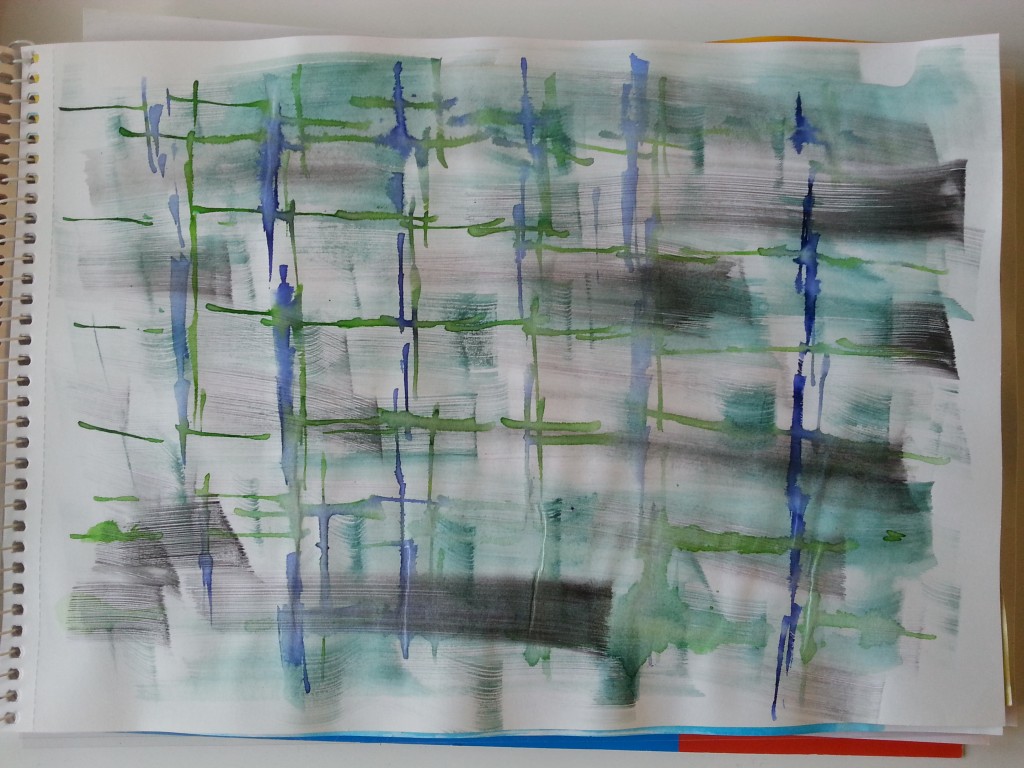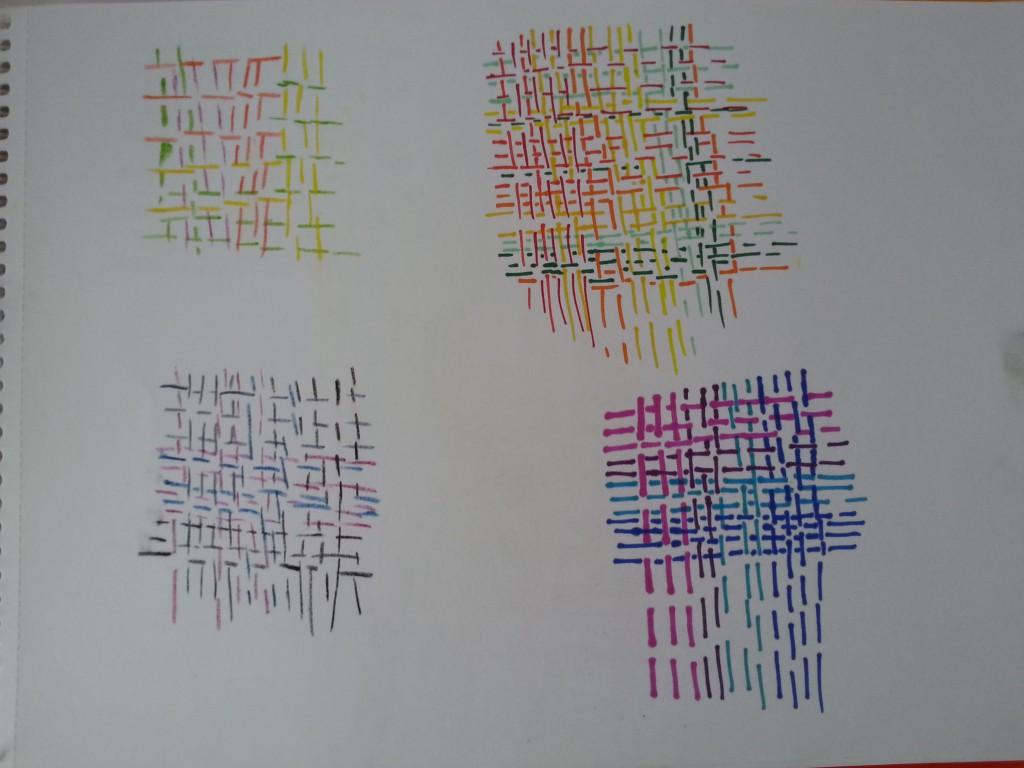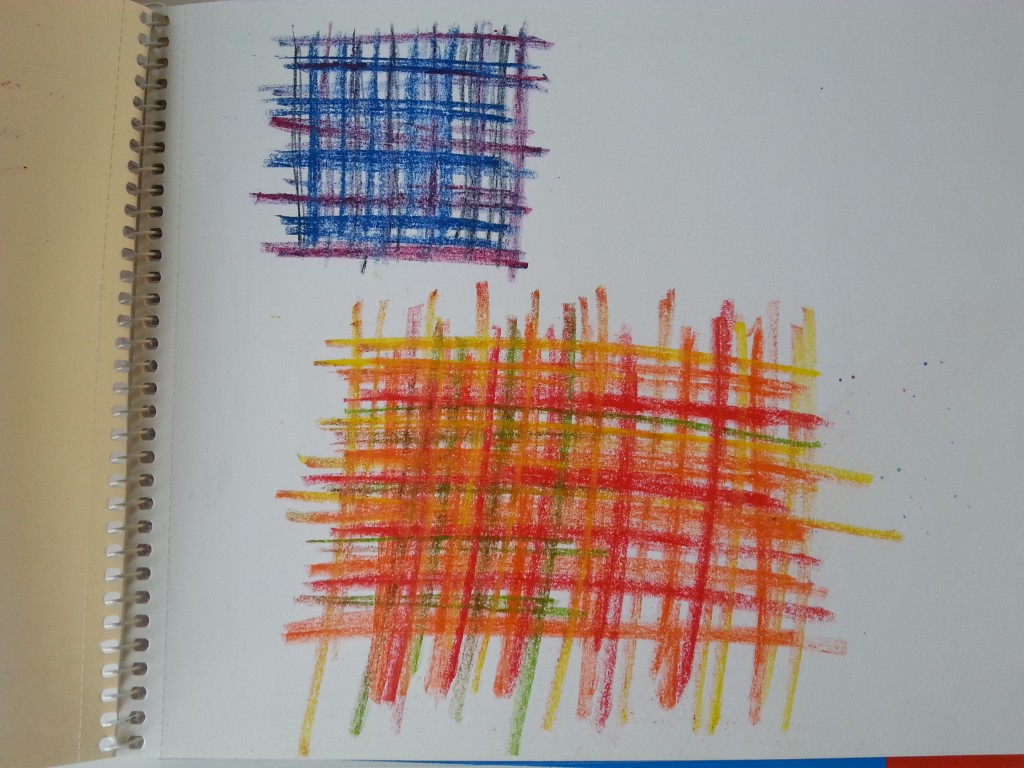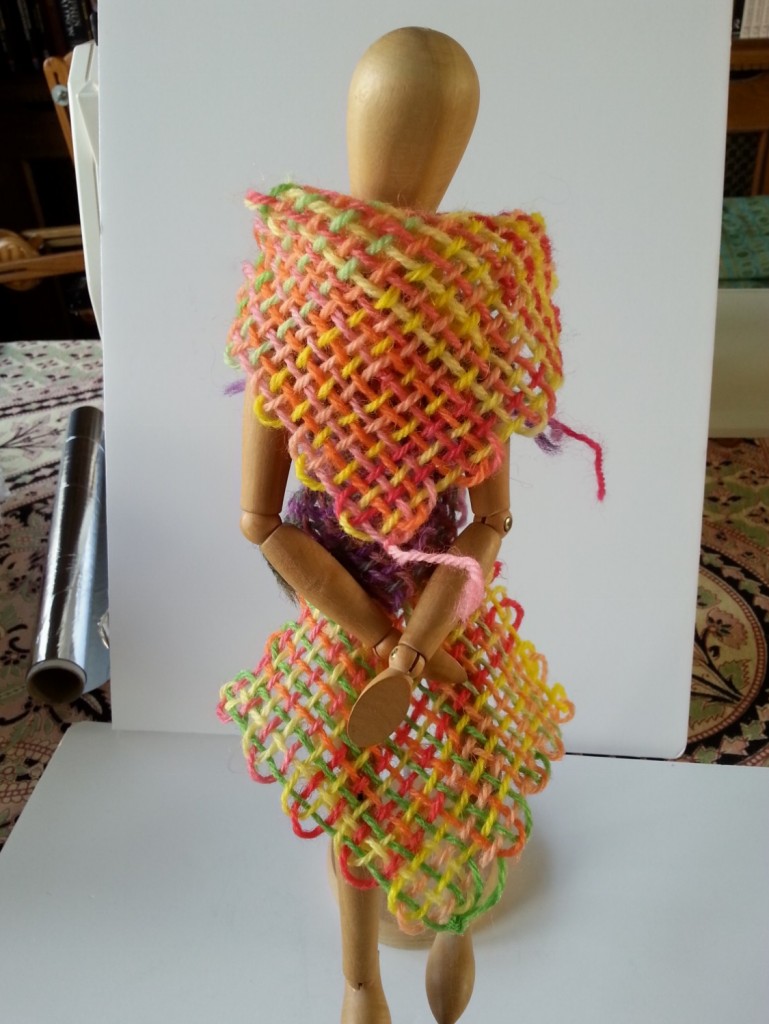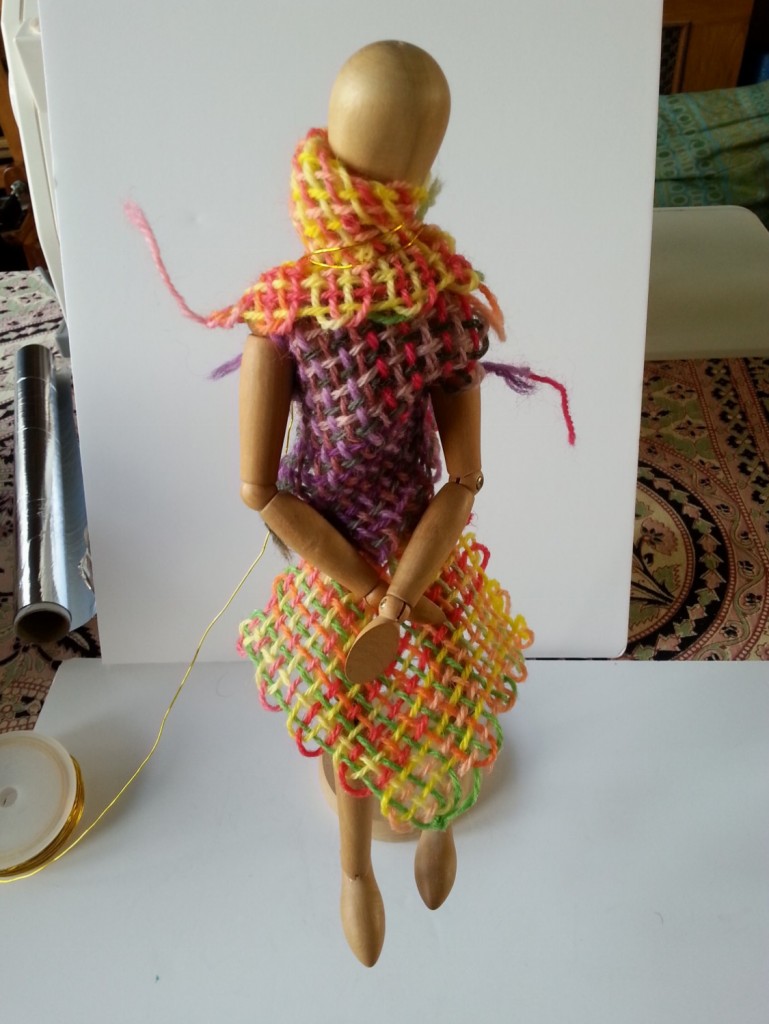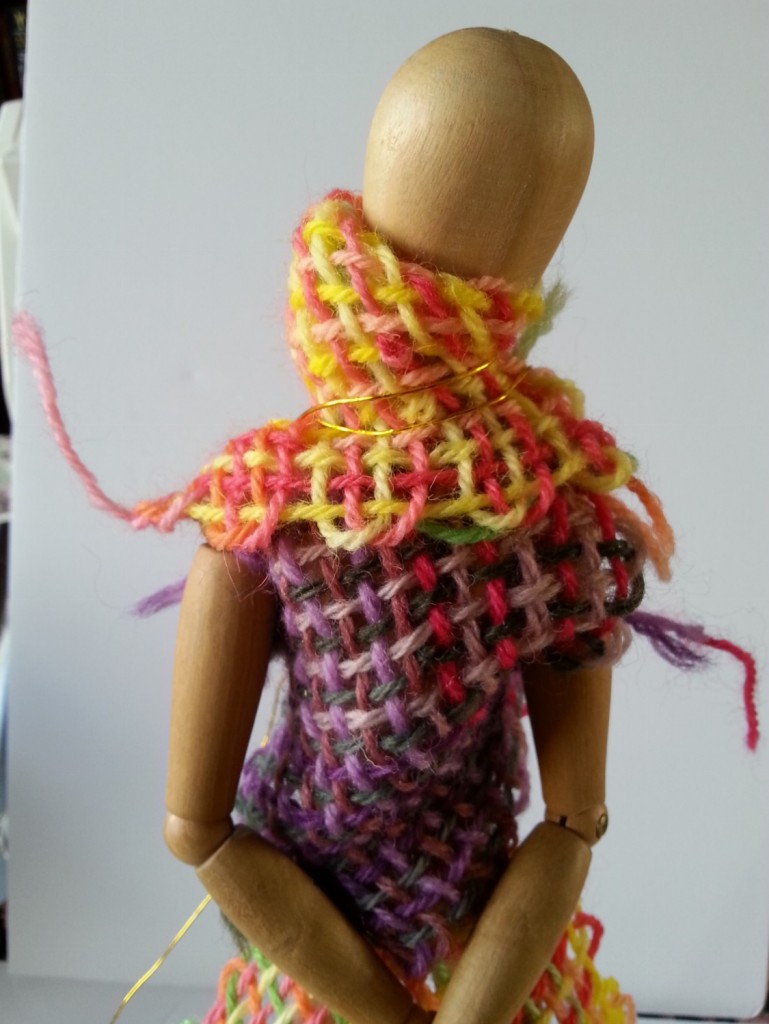Conclusion
Note: The review process has proved to be quite long so I’ve split the analysis into two parts, Assignments One & Two here and Assignments Three & Four here. I’ve also moved the conclusion to the top of the post and included it with both posts for ease of reading.
Going back through the work for this module threw up some interesting surprises. It struck me that I’d made note of lots of ideas as I worked through the exercises, some of which run through the whole module and are still ‘live’, some of which I’d almost forgotten about entirely. Pulling them together as a whole, I can see how some of the later exercises could be used to develop earlier ideas and how the earlier exercises have informed work done later in the module.
There are some clear recurring themes, with spirals, texture and colour featuring strongly. My background in felting and dyeing are undoubtedly strong influences coming through for texture and colour. The spirals have been something I’ve loved for years. I have old exercise books liberally ‘enhanced’ with spirals going back to primary school! The weaving examples worked towards the end of Assignment Two have directed me towards some very promising research into ideas for small-scale woven and mixed technique projects.
Revisiting the exercises also led me to research a number of new techniques, artists and ideas. Artists can be found here, techniques and ideas here.
Review
For the review I decided to work through the exercises in a fairly systematic way to make sure I covered all the possibilities, keeping an open mind and making no assumptions about what did and didn’t work for me. All exercises have been reviewed but I have only selected here and in the related post, those that really spoke to me in one way or another.
These and the samples from Assignments Three and Four will be combined with further sampling, review and research to take forward to the final prototype.
Assignment One – Surface Distortion
Pleating & Folding
- A1-P1-Pr1-Exc1 Linear accordion pleats 34
- A1-P1-Pr1-Exc1 Linear accordion pleats 24
- A1-P1-Pr1-Exc1 Linear accordion pleats 17
- A1-P1-Pr1-Exc1 Linear accordion pleats 11
- A1-P1-Pr1-Exc1 Linear accordion pleats 19
- A1-P1-Pr1-Exc1 Linear accordion pleats 13
- Rotational accordion pleats – 08
- Rotational accordion pleats
- Rotational accordion pleats
- Twisted pleat
- Rotational accordion pleats – 06
- Incremental pleat 2.03
- Ex 6 – Long ribs 01
- Project 1: Circular ribs
- Project 1: Circular ribs
- Project 1: Circular ribs 01
- Project 1: Circular ribs 06
- Project 1: Multiple ribs 02
- Project 1: Multiple ribs 03
- Project 1: Radiating ribs 03
- Project 1: Multiple ribs 04
The samples that I was drawn to from project one were mainly the linear pleats and ribs. Although I didn’t work in fabric for any of these samples, I had researched work by a number of textile artists, in particular Anneke Copier and Issey Miyake. Both artists work extensively with strong textural lines – folds, ridges and pleats. Copier’s principal medium is felt, Miyake a wide range of fabrics. Their work led me to other artists and these are discussed in more detail in my research here.
Folds, line and ‘pleats’ in nature are also a big influence on my work – in particular the deeply fluted forms of fungi, plants, ripples in the sand, waves, shells. Folds and pleats are certainly candidates for my shortlist!
Heating & Fusing
- Wetfelt 01
- Wetfelt 02
- Wetfelt 03
- Knit-felt 02
- Knit-felt 05
- Pr 3: Ex 3 – Fusing – hot water 05
- Pr 3: Ex 3 – Fusing – hot water 08
After struggling to get fibres and fabrics that would successfully melt, I took a slightly lateral approach to this exercise – ‘fusing’ wool to make felt. Felt is so versatile, being useful for anything from jewellery to clothing to footwear to yurts! Dyeable, textural, vibrant or natural, it has so many uses. It is also possible to combine with other materials – different breeds of sheep, alpaca, angora will also produce felt. Non-felting materials such as silk, fabric, small objects – can also be embedded/incoporated by trapping between felt layers.
Puncturing & Stitching
- Puncturing 3.02
- Puncturing 3.06
- Puncturing 3.07
- Puncturing 3.09
- Puncturing 3.26
- Puncturing 3.25
- Puncturing 3.23
- Puncturing 3.24
- Project 5: Ex 2 – Stitching 1
- Project 5: Ex 2 – Stitching 3
- Project 5: Ex 2 – Stitching 7
- Project 5: Ex 2 – Stitching 6
The majority of my puncturing samples were done on paper, however, the needlefelting samples (puncturing wool/felt with a sharp, barbed needle) were particularly satisfying in terms of textural qualities, scope for future development and the opportunities to explore colour. What was interesting about the paper samples was the ability to create varied and exciting patterns with the puncturing material. I would like to sample different substrates and alternative puncturing tools to take this further before deciding whether it is worth taking further.
Assignment Two – Joining & Wrapping
Joining Straight Edges with a Gap
- Card and wire reverse
- Card and wire
- Card and wire
- Card and wire
- Paper and twine
I like the interaction of the straight lines of the cereal box with the sweeping curves of the jewellery wire. The way the colours work together in the samples also enhances their effectiveness. The coarse, neutral twine makes a good contrast with the soft, blended colours of the paper packaging. The interlacing is reminiscent of corsetry. I can see potential in exploring other materials for tying and lacing with a range of fabrics.
Joining curved edges
- Cardboard, fabric and metallic thread
- Cardboard, fabric and metallic thread
- Cardboard, funky foam and yarn
- Cardboard, funky foam and yarn
- Sketchbook Assignment Two
- Sketchbook Assignment Two
- Sketchbook Assignment Two
- Sketchbook Assignment Two
- Bubble wrap
- Bubble wrap and crepe paper
- Bubble wrap stitched with embroidery thread
- Bubble wrap stitched with embroidery thread
I find myself drawn to curves more than straight lines. Perhaps this is because they have a sense of mystery, meandering in their own direction, not knowing where they will end up, whereas a straight line takes you from A to B and is more definite making it somehow ‘functional’. For this reason, I found these pieces more lively and evocative. The samples where one piece is suspended within another and where the curves dissonate, this creates exciting negative spaces. I would like to explore additional samples of ‘suspended’ pieces, experimenting with different media and alternative joining materials.
Overlapping Edges
- Weavette wool sample and gauze reverse
- Weavette wool sample and gauze
- Weavette wool sample and gauze
- Weaving in plastic and felt
- Weaving in plastic and felt
- Cotton and sweet wrappers
- Cotton and sweet wrappers
- Sketchbook Assignment Two
- Sketchbook Assignment Two
From this exercise I chose two samples, mainly for the interplay between the fabrics. In each case, one material was translucent, the other solid. It is the effect that the overlay of the translucent material has on the underlying fabric (and vice versa) that I find fascinating. With the cellophane wrappers, the laws of colour theory and light can be observed – the red and orange wrappers appear brown against the green and intensify where the red overlays the orange. In the woven sample, the blue voile tones the pink to purple and intensifies the blues.
Wrapping
- Sketchbook Assignment Two
- Cutwork Saree
- Traditional Japanese kimono
- Japanese kimono doll
- Emir of Kano – Northern Nigeria
- Kenyan Masai dance
- Nylon tights and wire
- Nylon tights and wire
- Nylon tights and wire
- Silk and wool yarn
- Silk and wool yarn
- Silk and wool yarn
- Wool roving loops
- Wool roving loops
- Wool roving loops
This was an exercise I really struggled with! However, re-visiting it, I can actually see potential in these shapes and materials when viewed in the context of traditional garments.
Wrapping with Materials & Threads
- Jug with nylons and yarn
- Jug with nylons and yarn
- Jug with bubble wrap and yarn
- Jug with bubble wrap and yarn
Again, I found it difficult to appreciate the value of this exercise at the time. However, having completed later exercises and re-visiting the pieces with a fresh eye, I can see clear links here to the fungi, spirals, lines evident in other work. I can also see shapes and structures that I did not see during the making of the pieces. The woven nature of the blue lines, intersecting and creating fascinating shapes and patterns; the colours and shapes of the sequin yarn and the strong contrast between the natural cotton and the synthetic plastic of the bubble wrap.
Whilst I don’t necessarily see the specific materials used as ones I would take further, I can see how the techniques could be successfully adapted using alternative objects/substrates to wrap and a different range of fibres, fabrics and materials to wrap with.
The felted balls in Assignment Four (Moulding & Casting), for example, could be wrapped with fabric, string, other fibres or yarn. Using a temari or similar wrapping technique springs to mind as an area for further research.
Wrapping Found Objects
- Sketchbook Assignment Two
- Sketchbook Assignment Two
- Sketchbook Assignment Two
- Sketchbook Assignment Two
- Sketchbook Assignment Two
- Artist’s mannequin and weavette squares
- Artist’s mannequin and weavette squares
- Artist’s mannequin and weavette squares
Prior to this exercise I had been playing with a weavette (pin loom). These tiny looms are great for small samples and for quickly experimenting with weaving different colour combinations, yarn types and materials. They can also be used for a surprising number of weaving structures. I used a couple of the samples and worked with an artist’s Kun figure from the previous exercise to produce a further selection of garment-style wraps.
I enjoyed playing with the simple square weavette pieces to see how many ways I could drape them around the figure. The weave structure is quite open and perhaps this could be exploited by a secondary weave, by fulling (hot washing to produce a more felt-like material) to produce a firmer fabric. The ability to create subtly changing colours by swapping out and blending the yarns is also a source for future exploration.
